Chelsea began in 1750 as a single estate, extending from what is now 28th Street south to 19th Street, and from the Hudson River east to Eighth Avenue. Now in its third century of subdivision, the neighborhood’s definition has expanded south to 14th Street and east to Seventh Avenue.
Chelsea’s commercial and residential makeup has shifted like the tides: Breweries, warehouses, factories, film studios, theaters, town houses and tenements have come and gone; multiple rail lines, both street level and elevated, brought goods in and out (the last remnant is now The High Line park).
Contemporary Chelsea has luxury housing, shops and art galleries – overflow from SoHo. And although the neighborhood boasts three historic districts – Chelsea Historic District, Chelsea Historic District Extension, and West Chelsea Historic District – the neighborhood has a tremendous variety of architectural styles. You’ll find modern landmarks such as the IAC Building (2007) and 100 Eleventh Avenue (2009) just two blocks from the Gothic Revival style General Theological Seminary (1883).
For NewYorkitecture.com’s purposes, we are dividing this area into two parts: West Chelsea, the area between W 28th Street and W 15th Street west of The High Line; Chelsea, from W 28th Street south to W 15th Street and The High Line east to Seventh Avenue.
Among the Chelsea landmarks that are outside the Landmarks Preservation Commission-designated historic district are four notable whole-block structures.
Chelsea Market, the interconnected buildings between W 15th and W 16th Streets and Ninth to Tenth Avenues, is the former Nabisco plant where Oreos were invented and produced (now that’s historic!). An extension from Tenth to Eleventh Avenues is connected by a bridge. Today the buildings house stores, restaurants, offices and television production studios – including, appropriately, The Food Network. See more on Wikipedia: http://en.wikipedia.org/wiki/Chelsea_Market.
Just across Ninth Avenue from Chelsea Market is Port of New York Authority Commerce Building/ Union Inland Terminal No. 1. This is the one-time headquarters of the Port Authority (before they moved into the World Trade Center). Conceived as a warehouse/distribution center at a time when Hudson River piers were active and rail lines served Tenth Avenue, the building is now offices, and was purchased by Google in 2010. Some interesting background at: http://wirednewyork.com/forum/showthread.php?t=4949&page=73.
London Terrace Gardens apartments is 14 interconnected buildings between W 23rd and W 24th Streets, from Ninth to Tenth Avenue. When built in 1930, the complex was the world’s largest apartment building. The set has been broken up – the 10 inner buildings and the four avenue-facing towers have separate owners. See more at: http://www.londonterrace.com/building/history-photography.htm.
The Fashion Institute of Technology campus occupies eight buildings on two blocks: from Seventh (Fashion) Avenue to Eighth Avenue, W 26th Street to W 28th Street. The campus was built over the period of 1958 to 2001. See the Wikipedia article at: http://en.wikipedia.org/wiki/Fashion_Institute_of_Technology.
Chelsea Recommended Reading
- Wikipedia: http://en.wikipedia.org/wiki/Chelsea,_Manhattan
- Chelsea Historic District map: http://www.nyc.gov/html/lpc/downloads/pdf/maps/chelsea.pdf
- Chelsea Historic District – Designation Report: http://www.nyc.gov/html/lpc/downloads/pdf/reports/CHELSEA_HISTORIC_DISTRICT.pdf
- Chelsea Historic District Extension – Designation Report: http://www.nyc.gov/html/lpc/downloads/pdf/reports/CHELSEA_HISTORIC_DISTRICT_EXTENSION.pdf
- West Chelsea Historic District map: http://www.nyc.gov/html/lpc/downloads/pdf/maps/WestChelseaHD.pdf
- West Chelsea Historic District – Designation Report: http://www.nyc.gov/html/lpc/downloads/pdf/reports/WestChelsea_REPORT.pdf
Also see High Line Park gallery.
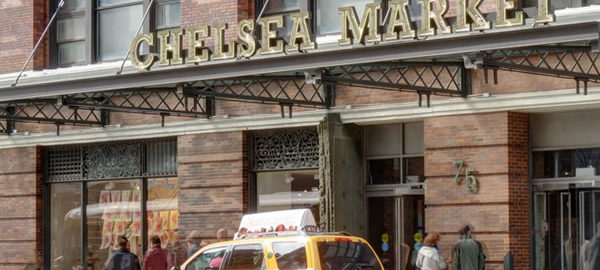
![IMG_2497_8_9Adjust [3/6/2012 1:00:15 PM] IMG_2497_8_9Adjust [3/6/2012 1:00:15 PM]](https://www.newyorkitecture.com/wp-content/gallery/chelsea/img_2497_8_9adjust.jpg)
![IMG_2509_10_11Adjust [3/6/2012 1:04:27 PM] IMG_2509_10_11Adjust [3/6/2012 1:04:27 PM]](https://www.newyorkitecture.com/wp-content/gallery/chelsea/img_2509_10_11adjust.jpg)
![IMG_2521_2_3Adjust [3/6/2012 1:06:49 PM] IMG_2521_2_3Adjust [3/6/2012 1:06:49 PM]](https://www.newyorkitecture.com/wp-content/gallery/chelsea/img_2521_2_3adjust.jpg)
![IMG_2524_5_6Adjust [3/6/2012 1:10:16 PM] IMG_2524_5_6Adjust [3/6/2012 1:10:16 PM]](https://www.newyorkitecture.com/wp-content/gallery/chelsea/img_2524_5_6adjust.jpg)
![IMG_2530_1_2Adjust [3/6/2012 1:11:53 PM] IMG_2530_1_2Adjust [3/6/2012 1:11:53 PM]](https://www.newyorkitecture.com/wp-content/gallery/chelsea/img_2530_1_2adjust.jpg)
![IMG_2536_7_8Adjust [3/6/2012 1:12:45 PM] IMG_2536_7_8Adjust [3/6/2012 1:12:45 PM]](https://www.newyorkitecture.com/wp-content/gallery/chelsea/img_2536_7_8adjust.jpg)
![IMG_2545_6_7Adjust [3/6/2012 1:14:04 PM] IMG_2545_6_7Adjust [3/6/2012 1:14:04 PM]](https://www.newyorkitecture.com/wp-content/gallery/chelsea/img_2545_6_7adjust.jpg)
![IMG_2557_8_9Adjust [3/6/2012 1:18:54 PM] IMG_2557_8_9Adjust [3/6/2012 1:18:54 PM]](https://www.newyorkitecture.com/wp-content/gallery/chelsea/img_2557_8_9adjust.jpg)
![IMG_2569_70_71Adjust [3/6/2012 1:21:25 PM] IMG_2569_70_71Adjust [3/6/2012 1:21:25 PM]](https://www.newyorkitecture.com/wp-content/gallery/chelsea/img_2569_70_71adjust.jpg)
![IMG_2584_5_6Adjust [3/6/2012 1:29:47 PM] IMG_2584_5_6Adjust [3/6/2012 1:29:47 PM]](https://www.newyorkitecture.com/wp-content/gallery/chelsea/img_2584_5_6adjust.jpg)
![IMG_2587_8_9Adjust [3/6/2012 1:30:47 PM] IMG_2587_8_9Adjust [3/6/2012 1:30:47 PM]](https://www.newyorkitecture.com/wp-content/gallery/chelsea/img_2587_8_9adjust.jpg)
![IMG_2593_4_5Adjust [3/6/2012 1:32:33 PM] IMG_2593_4_5Adjust [3/6/2012 1:32:33 PM]](https://www.newyorkitecture.com/wp-content/gallery/chelsea/img_2593_4_5adjust.jpg)
![IMG_2596_7_8Adjust [3/6/2012 1:35:30 PM] IMG_2596_7_8Adjust [3/6/2012 1:35:30 PM]](https://www.newyorkitecture.com/wp-content/gallery/chelsea/img_2596_7_8adjust.jpg)
![IMG_2605_6_7Adjust [3/6/2012 1:37:01 PM] IMG_2605_6_7Adjust [3/6/2012 1:37:01 PM]](https://www.newyorkitecture.com/wp-content/gallery/chelsea/img_2605_6_7adjust.jpg)
![IMG_2608_09_10Adjust [3/6/2012 1:37:57 PM] IMG_2608_09_10Adjust [3/6/2012 1:37:57 PM]](https://www.newyorkitecture.com/wp-content/gallery/chelsea/img_2608_09_10adjust.jpg)
![IMG_2623_4_5Adjust [3/6/2012 1:44:27 PM] IMG_2623_4_5Adjust [3/6/2012 1:44:27 PM]](https://www.newyorkitecture.com/wp-content/gallery/chelsea/img_2623_4_5adjust.jpg)
![IMG_2665_6_7Adjust [3/6/2012 2:03:41 PM] IMG_2665_6_7Adjust [3/6/2012 2:03:41 PM]](https://www.newyorkitecture.com/wp-content/gallery/chelsea/img_2665_6_7adjust.jpg)
![IMG_2680_1_2Adjust [3/6/2012 2:06:45 PM] IMG_2680_1_2Adjust [3/6/2012 2:06:45 PM]](https://www.newyorkitecture.com/wp-content/gallery/chelsea/img_2680_1_2adjust.jpg)
![IMG_2710_1_2Adjust [3/6/2012 2:21:15 PM] IMG_2710_1_2Adjust [3/6/2012 2:21:15 PM]](https://www.newyorkitecture.com/wp-content/gallery/chelsea/img_2710_1_2adjust.jpg)
![IMG_2731_2_3Adjust [3/6/2012 2:27:07 PM] IMG_2731_2_3Adjust [3/6/2012 2:27:07 PM]](https://www.newyorkitecture.com/wp-content/gallery/chelsea/img_2731_2_3adjust.jpg)
![IMG_2737_8_9Adjust [3/6/2012 2:33:46 PM] IMG_2737_8_9Adjust [3/6/2012 2:33:46 PM]](https://www.newyorkitecture.com/wp-content/gallery/chelsea/img_2737_8_9adjust.jpg)
![IMG_2911_2_3Adjust [3/7/2012 10:06:51 AM] IMG_2911_2_3Adjust [3/7/2012 10:06:51 AM]](https://www.newyorkitecture.com/wp-content/gallery/chelsea/img_2911_2_3adjust.jpg)
![IMG_2917_8_9Adjust [3/7/2012 10:08:40 AM] IMG_2917_8_9Adjust [3/7/2012 10:08:40 AM]](https://www.newyorkitecture.com/wp-content/gallery/chelsea/img_2917_8_9adjust.jpg)
![IMG_2923_4_5Adjust [3/7/2012 10:10:25 AM] IMG_2923_4_5Adjust [3/7/2012 10:10:25 AM]](https://www.newyorkitecture.com/wp-content/gallery/chelsea/img_2923_4_5adjust.jpg)
![IMG_2926_7_8Adjust [3/7/2012 10:11:09 AM] IMG_2926_7_8Adjust [3/7/2012 10:11:09 AM]](https://www.newyorkitecture.com/wp-content/gallery/chelsea/img_2926_7_8adjust.jpg)
![IMG_2929_30_31Adjust [3/7/2012 10:11:56 AM] IMG_2929_30_31Adjust [3/7/2012 10:11:56 AM]](https://www.newyorkitecture.com/wp-content/gallery/chelsea/img_2929_30_31adjust.jpg)
![IMG_2935_6_7Adjust [3/7/2012 10:13:02 AM] IMG_2935_6_7Adjust [3/7/2012 10:13:02 AM]](https://www.newyorkitecture.com/wp-content/gallery/chelsea/img_2935_6_7adjust.jpg)
![IMG_2941_2_3Adjust [3/7/2012 10:14:45 AM] IMG_2941_2_3Adjust [3/7/2012 10:14:45 AM]](https://www.newyorkitecture.com/wp-content/gallery/chelsea/img_2941_2_3adjust.jpg)
![IMG_2947_8_9Adjust [3/7/2012 10:18:26 AM] IMG_2947_8_9Adjust [3/7/2012 10:18:26 AM]](https://www.newyorkitecture.com/wp-content/gallery/chelsea/img_2947_8_9adjust.jpg)
![IMG_2956_7_8Adjust [3/7/2012 10:21:46 AM] IMG_2956_7_8Adjust [3/7/2012 10:21:46 AM]](https://www.newyorkitecture.com/wp-content/gallery/chelsea/img_2956_7_8adjust.jpg)
![IMG_2968_69_70Adjust [3/7/2012 10:25:14 AM] IMG_2968_69_70Adjust [3/7/2012 10:25:14 AM]](https://www.newyorkitecture.com/wp-content/gallery/chelsea/img_2968_69_70adjust.jpg)
![IMG_2974_5_6Adjust [3/7/2012 10:28:33 AM] IMG_2974_5_6Adjust [3/7/2012 10:28:33 AM]](https://www.newyorkitecture.com/wp-content/gallery/chelsea/img_2974_5_6adjust.jpg)
![IMG_2983_4_5Adjust [3/7/2012 10:33:36 AM] IMG_2983_4_5Adjust [3/7/2012 10:33:36 AM]](https://www.newyorkitecture.com/wp-content/gallery/chelsea/img_2983_4_5adjust.jpg)
![IMG_2989_90_91Adjust [3/7/2012 10:36:34 AM] IMG_2989_90_91Adjust [3/7/2012 10:36:34 AM]](https://www.newyorkitecture.com/wp-content/gallery/chelsea/img_2989_90_91adjust.jpg)
![IMG_3004_5_6Adjust [3/7/2012 10:43:03 AM] IMG_3004_5_6Adjust [3/7/2012 10:43:03 AM]](https://www.newyorkitecture.com/wp-content/gallery/chelsea/img_3004_5_6adjust.jpg)
![IMG_3019_20_21Adjust [3/7/2012 10:45:26 AM] IMG_3019_20_21Adjust [3/7/2012 10:45:26 AM]](https://www.newyorkitecture.com/wp-content/gallery/chelsea/img_3019_20_21adjust.jpg)
![IMG_3037_8_9Adjust [3/7/2012 10:48:21 AM] IMG_3037_8_9Adjust [3/7/2012 10:48:21 AM]](https://www.newyorkitecture.com/wp-content/gallery/chelsea/img_3037_8_9adjust.jpg)
![IMG_3043_4_5Adjust [3/7/2012 10:49:20 AM] IMG_3043_4_5Adjust [3/7/2012 10:49:20 AM]](https://www.newyorkitecture.com/wp-content/gallery/chelsea/img_3043_4_5adjust.jpg)
![IMG_3049_50_51Adjust [3/7/2012 10:50:58 AM] IMG_3049_50_51Adjust [3/7/2012 10:50:58 AM]](https://www.newyorkitecture.com/wp-content/gallery/chelsea/img_3049_50_51adjust.jpg)
![IMG_3055_6_7Adjust [3/7/2012 10:52:23 AM] IMG_3055_6_7Adjust [3/7/2012 10:52:23 AM]](https://www.newyorkitecture.com/wp-content/gallery/chelsea/img_3055_6_7adjust.jpg)
![IMG_3082_3_4Adjust [3/7/2012 10:58:40 AM] IMG_3082_3_4Adjust [3/7/2012 10:58:40 AM]](https://www.newyorkitecture.com/wp-content/gallery/chelsea/img_3082_3_4adjust.jpg)
![IMG_3106_7_8Adjust [3/7/2012 11:03:56 AM] IMG_3106_7_8Adjust [3/7/2012 11:03:56 AM]](https://www.newyorkitecture.com/wp-content/gallery/chelsea/img_3106_7_8adjust.jpg)
![IMG_3115_6_7Adjust [3/7/2012 11:06:26 AM] IMG_3115_6_7Adjust [3/7/2012 11:06:26 AM]](https://www.newyorkitecture.com/wp-content/gallery/chelsea/img_3115_6_7adjust.jpg)
![IMG_3484_5_6Adjust [3/9/2012 11:49:48 AM] IMG_3484_5_6Adjust [3/9/2012 11:49:48 AM]](https://www.newyorkitecture.com/wp-content/gallery/chelsea/img_3484_5_6adjust.jpg)
![IMG_3499_500_501Adjust [3/9/2012 11:52:38 AM] IMG_3499_500_501Adjust [3/9/2012 11:52:38 AM]](https://www.newyorkitecture.com/wp-content/gallery/chelsea/img_3499_500_501adjust.jpg)
![IMG_3511_2_3Adjust [3/9/2012 11:55:47 AM] IMG_3511_2_3Adjust [3/9/2012 11:55:47 AM]](https://www.newyorkitecture.com/wp-content/gallery/chelsea/img_3511_2_3adjust.jpg)
![IMG_3535_6_7Adjust [3/9/2012 12:04:43 PM] IMG_3535_6_7Adjust [3/9/2012 12:04:43 PM]](https://www.newyorkitecture.com/wp-content/gallery/chelsea/img_3535_6_7adjust.jpg)
![IMG_3544_5_6Adjust [3/9/2012 12:06:14 PM] IMG_3544_5_6Adjust [3/9/2012 12:06:14 PM]](https://www.newyorkitecture.com/wp-content/gallery/chelsea/img_3544_5_6adjust.jpg)
![IMG_3553_4_5Adjust [3/9/2012 12:11:46 PM] IMG_3553_4_5Adjust [3/9/2012 12:11:46 PM]](https://www.newyorkitecture.com/wp-content/gallery/chelsea/img_3553_4_5adjust.jpg)
![IMG_3556_7_8Adjust [3/9/2012 12:12:37 PM] IMG_3556_7_8Adjust [3/9/2012 12:12:37 PM]](https://www.newyorkitecture.com/wp-content/gallery/chelsea/img_3556_7_8adjust.jpg)
![IMG_3562_3_4Adjust [3/9/2012 12:14:22 PM] IMG_3562_3_4Adjust [3/9/2012 12:14:22 PM]](https://www.newyorkitecture.com/wp-content/gallery/chelsea/img_3562_3_4adjust.jpg)
![IMG_3568_69_70Adjust [3/9/2012 12:17:38 PM] IMG_3568_69_70Adjust [3/9/2012 12:17:38 PM]](https://www.newyorkitecture.com/wp-content/gallery/chelsea/img_3568_69_70adjust.jpg)
![IMG_3574_5_6Adjust [3/9/2012 12:21:43 PM] IMG_3574_5_6Adjust [3/9/2012 12:21:43 PM]](https://www.newyorkitecture.com/wp-content/gallery/chelsea/img_3574_5_6adjust.jpg)
![IMG_3601_2_3Adjust [3/9/2012 12:28:47 PM] IMG_3601_2_3Adjust [3/9/2012 12:28:47 PM]](https://www.newyorkitecture.com/wp-content/gallery/chelsea/img_3601_2_3adjust.jpg)
![IMG_3610_1_2Adjust [3/9/2012 12:33:47 PM] IMG_3610_1_2Adjust [3/9/2012 12:33:47 PM]](https://www.newyorkitecture.com/wp-content/gallery/chelsea/img_3610_1_2adjust.jpg)
![IMG_3622_3_4Adjust [3/9/2012 12:35:52 PM] IMG_3622_3_4Adjust [3/9/2012 12:35:52 PM]](https://www.newyorkitecture.com/wp-content/gallery/chelsea/img_3622_3_4adjust.jpg)
![IMG_3631_2_3Adjust [3/9/2012 12:42:39 PM] IMG_3631_2_3Adjust [3/9/2012 12:42:39 PM]](https://www.newyorkitecture.com/wp-content/gallery/chelsea/img_3631_2_3adjust.jpg)
![IMG_3634_5_6Adjust [3/9/2012 12:44:00 PM] IMG_3634_5_6Adjust [3/9/2012 12:44:00 PM]](https://www.newyorkitecture.com/wp-content/gallery/chelsea/img_3634_5_6adjust.jpg)
![IMG_3640_1_2Adjust [3/9/2012 12:44:57 PM] IMG_3640_1_2Adjust [3/9/2012 12:44:57 PM]](https://www.newyorkitecture.com/wp-content/gallery/chelsea/img_3640_1_2adjust.jpg)
![IMG_3655_6_7Adjust [3/9/2012 12:48:22 PM] IMG_3655_6_7Adjust [3/9/2012 12:48:22 PM]](https://www.newyorkitecture.com/wp-content/gallery/chelsea/img_3655_6_7adjust.jpg)
![IMG_3667_8_9Adjust [3/9/2012 12:55:14 PM] IMG_3667_8_9Adjust [3/9/2012 12:55:14 PM]](https://www.newyorkitecture.com/wp-content/gallery/chelsea/img_3667_8_9adjust.jpg)
![IMG_3673_4_5Adjust [3/9/2012 12:57:13 PM] IMG_3673_4_5Adjust [3/9/2012 12:57:13 PM]](https://www.newyorkitecture.com/wp-content/gallery/chelsea/img_3673_4_5adjust.jpg)
![IMG_3679_80_81Adjust [3/9/2012 12:58:51 PM] IMG_3679_80_81Adjust [3/9/2012 12:58:51 PM]](https://www.newyorkitecture.com/wp-content/gallery/chelsea/img_3679_80_81adjust.jpg)
![IMG_3691_2_3Adjust [3/9/2012 1:00:28 PM] IMG_3691_2_3Adjust [3/9/2012 1:00:28 PM]](https://www.newyorkitecture.com/wp-content/gallery/chelsea/img_3691_2_3adjust.jpg)
![IMG_3703_4_5Adjust [3/9/2012 1:02:59 PM] IMG_3703_4_5Adjust [3/9/2012 1:02:59 PM]](https://www.newyorkitecture.com/wp-content/gallery/chelsea/img_3703_4_5adjust.jpg)
![IMG_3727_8_9Adjust [3/9/2012 1:09:08 PM] IMG_3727_8_9Adjust [3/9/2012 1:09:08 PM]](https://www.newyorkitecture.com/wp-content/gallery/chelsea/img_3727_8_9adjust.jpg)
![IMG_3730_1_2Adjust [3/9/2012 1:11:45 PM] IMG_3730_1_2Adjust [3/9/2012 1:11:45 PM]](https://www.newyorkitecture.com/wp-content/gallery/chelsea/img_3730_1_2adjust.jpg)
![IMG_3745_6_7Adjust [3/9/2012 1:13:31 PM] IMG_3745_6_7Adjust [3/9/2012 1:13:31 PM]](https://www.newyorkitecture.com/wp-content/gallery/chelsea/img_3745_6_7adjust.jpg)
![IMG_3751_2_3Adjust [3/9/2012 1:14:43 PM] IMG_3751_2_3Adjust [3/9/2012 1:14:43 PM]](https://www.newyorkitecture.com/wp-content/gallery/chelsea/img_3751_2_3adjust.jpg)
![IMG_3766_7_8Adjust [3/9/2012 1:23:22 PM] IMG_3766_7_8Adjust [3/9/2012 1:23:22 PM]](https://www.newyorkitecture.com/wp-content/gallery/chelsea/img_3766_7_8adjust.jpg)
![IMG_3778_79_80Adjust [3/9/2012 1:30:29 PM] IMG_3778_79_80Adjust [3/9/2012 1:30:29 PM]](https://www.newyorkitecture.com/wp-content/gallery/chelsea/img_3778_79_80adjust.jpg)
![IMG_3787_8_9Adjust [3/9/2012 1:33:30 PM] IMG_3787_8_9Adjust [3/9/2012 1:33:30 PM]](https://www.newyorkitecture.com/wp-content/gallery/chelsea/img_3787_8_9adjust.jpg)
![IMG_3799_800_801Adjust [3/9/2012 1:35:57 PM] IMG_3799_800_801Adjust [3/9/2012 1:35:57 PM]](https://www.newyorkitecture.com/wp-content/gallery/chelsea/img_3799_800_801adjust.jpg)
![IMG_3892_3_4Adjust [3/11/2012 11:24:47 AM] IMG_3892_3_4Adjust [3/11/2012 11:24:47 AM]](https://www.newyorkitecture.com/wp-content/gallery/chelsea/img_3892_3_4adjust.jpg)
![IMG_3895_6_7Adjust [3/11/2012 11:27:07 AM] IMG_3895_6_7Adjust [3/11/2012 11:27:07 AM]](https://www.newyorkitecture.com/wp-content/gallery/chelsea/img_3895_6_7adjust.jpg)
![IMG_3901_2_3Adjust [3/11/2012 11:28:32 AM] IMG_3901_2_3Adjust [3/11/2012 11:28:32 AM]](https://www.newyorkitecture.com/wp-content/gallery/chelsea/img_3901_2_3adjust.jpg)
![IMG_4270_1_2Adjust [3/11/2012 1:51:35 PM] IMG_4270_1_2Adjust [3/11/2012 1:51:35 PM]](https://www.newyorkitecture.com/wp-content/gallery/chelsea/img_4270_1_2adjust.jpg)
![IMG_4276_7_8Adjust [3/11/2012 1:53:23 PM] IMG_4276_7_8Adjust [3/11/2012 1:53:23 PM]](https://www.newyorkitecture.com/wp-content/gallery/chelsea/img_4276_7_8adjust.jpg)
![IMG_4330_1_2Adjust [3/11/2012 2:13:13 PM] IMG_4330_1_2Adjust [3/11/2012 2:13:13 PM]](https://www.newyorkitecture.com/wp-content/gallery/chelsea/img_4330_1_2adjust.jpg)
![IMG_4336_7_8Adjust [3/11/2012 2:16:14 PM] IMG_4336_7_8Adjust [3/11/2012 2:16:14 PM]](https://www.newyorkitecture.com/wp-content/gallery/chelsea/img_4336_7_8adjust.jpg)
![IMG_4348_49_50Adjust [3/11/2012 2:20:41 PM] IMG_4348_49_50Adjust [3/11/2012 2:20:41 PM]](https://www.newyorkitecture.com/wp-content/gallery/chelsea/img_4348_49_50adjust.jpg)
![IMG_4384_5_6Adjust [3/11/2012 2:28:02 PM] IMG_4384_5_6Adjust [3/11/2012 2:28:02 PM]](https://www.newyorkitecture.com/wp-content/gallery/chelsea/img_4384_5_6adjust.jpg)
![IMG_4423_4_5Adjust [3/11/2012 2:37:13 PM] IMG_4423_4_5Adjust [3/11/2012 2:37:13 PM]](https://www.newyorkitecture.com/wp-content/gallery/chelsea/img_4423_4_5adjust.jpg)
![IMG_4432_3_4Adjust [3/11/2012 2:40:01 PM] IMG_4432_3_4Adjust [3/11/2012 2:40:01 PM]](https://www.newyorkitecture.com/wp-content/gallery/chelsea/img_4432_3_4adjust.jpg)
![IMG_4453_4_5Adjust [3/11/2012 2:49:49 PM] IMG_4453_4_5Adjust [3/11/2012 2:49:49 PM]](https://www.newyorkitecture.com/wp-content/gallery/chelsea/img_4453_4_5adjust.jpg)
![IMG_4462_3_4Adjust [3/11/2012 2:56:06 PM] IMG_4462_3_4Adjust [3/11/2012 2:56:06 PM]](https://www.newyorkitecture.com/wp-content/gallery/chelsea/img_4462_3_4adjust.jpg)
![IMG_4480_1_2Adjust [3/11/2012 2:59:16 PM] IMG_4480_1_2Adjust [3/11/2012 2:59:16 PM]](https://www.newyorkitecture.com/wp-content/gallery/chelsea/img_4480_1_2adjust.jpg)
![IMG_4483_4_5Adjust [3/11/2012 3:00:32 PM] IMG_4483_4_5Adjust [3/11/2012 3:00:32 PM]](https://www.newyorkitecture.com/wp-content/gallery/chelsea/img_4483_4_5adjust.jpg)
![IMG_4507_8_9Adjust [3/11/2012 3:05:08 PM] IMG_4507_8_9Adjust [3/11/2012 3:05:08 PM]](https://www.newyorkitecture.com/wp-content/gallery/chelsea/img_4507_8_9adjust.jpg)
![IMG_4516_7_8Adjust [3/11/2012 3:08:24 PM] IMG_4516_7_8Adjust [3/11/2012 3:08:24 PM]](https://www.newyorkitecture.com/wp-content/gallery/chelsea/img_4516_7_8adjust.jpg)
![IMG_4534_5_6Adjust [3/11/2012 3:11:03 PM] IMG_4534_5_6Adjust [3/11/2012 3:11:03 PM]](https://www.newyorkitecture.com/wp-content/gallery/chelsea/img_4534_5_6adjust.jpg)
![IMG_4540_1_2Adjust [3/11/2012 3:15:58 PM] IMG_4540_1_2Adjust [3/11/2012 3:15:58 PM]](https://www.newyorkitecture.com/wp-content/gallery/chelsea/img_4540_1_2adjust.jpg)
![IMG_5296_7_8Adjust [1/1/2012 1:02:46 PM] IMG_5296_7_8Adjust [1/1/2012 1:02:46 PM]](https://www.newyorkitecture.com/wp-content/gallery/chelsea/img_5296_7_8adjust.jpg)
![IMG_5302_3_4Adjust [1/1/2012 1:04:05 PM] IMG_5302_3_4Adjust [1/1/2012 1:04:05 PM]](https://www.newyorkitecture.com/wp-content/gallery/chelsea/img_5302_3_4adjust.jpg)
![IMG_5305_6_7Adjust [1/1/2012 1:04:43 PM] IMG_5305_6_7Adjust [1/1/2012 1:04:43 PM]](https://www.newyorkitecture.com/wp-content/gallery/chelsea/img_5305_6_7adjust.jpg)
![IMG_5311_2_3Adjust [1/1/2012 1:08:19 PM] IMG_5311_2_3Adjust [1/1/2012 1:08:19 PM]](https://www.newyorkitecture.com/wp-content/gallery/chelsea/img_5311_2_3adjust.jpg)
![IMG_5329_30_31Adjust [1/1/2012 1:13:46 PM] IMG_5329_30_31Adjust [1/1/2012 1:13:46 PM]](https://www.newyorkitecture.com/wp-content/gallery/chelsea/img_5329_30_31adjust.jpg)
![IMG_5332_3_4Adjust [1/1/2012 1:15:08 PM] IMG_5332_3_4Adjust [1/1/2012 1:15:08 PM]](https://www.newyorkitecture.com/wp-content/gallery/chelsea/img_5332_3_4adjust.jpg)
![IMG_5356_7_8Adjust [1/1/2012 1:25:39 PM] IMG_5356_7_8Adjust [1/1/2012 1:25:39 PM]](https://www.newyorkitecture.com/wp-content/gallery/chelsea/img_5356_7_8adjust.jpg)
![IMG_5359_60_61Adjust [1/1/2012 1:26:06 PM] IMG_5359_60_61Adjust [1/1/2012 1:26:06 PM]](https://www.newyorkitecture.com/wp-content/gallery/chelsea/img_5359_60_61adjust.jpg)
![IMG_5362_3_4Adjust [1/1/2012 1:28:08 PM] IMG_5362_3_4Adjust [1/1/2012 1:28:08 PM]](https://www.newyorkitecture.com/wp-content/gallery/chelsea/img_5362_3_4adjust.jpg)
![IMG_5374_5_6Adjust [1/1/2012 1:29:58 PM] IMG_5374_5_6Adjust [1/1/2012 1:29:58 PM]](https://www.newyorkitecture.com/wp-content/gallery/chelsea/img_5374_5_6adjust.jpg)
![IMG_5386_7_8Adjust [1/1/2012 1:34:44 PM] IMG_5386_7_8Adjust [1/1/2012 1:34:44 PM]](https://www.newyorkitecture.com/wp-content/gallery/chelsea/img_5386_7_8adjust.jpg)
![IMG_5392_3_4Adjust [1/1/2012 1:36:10 PM] IMG_5392_3_4Adjust [1/1/2012 1:36:10 PM]](https://www.newyorkitecture.com/wp-content/gallery/chelsea/img_5392_3_4adjust.jpg)
![IMG_5395_6_7Adjust [1/1/2012 1:41:10 PM] IMG_5395_6_7Adjust [1/1/2012 1:41:10 PM]](https://www.newyorkitecture.com/wp-content/gallery/chelsea/img_5395_6_7adjust.jpg)
![IMG_5398_399_400Adjust [1/1/2012 1:41:43 PM] IMG_5398_399_400Adjust [1/1/2012 1:41:43 PM]](https://www.newyorkitecture.com/wp-content/gallery/chelsea/img_5398_399_400adjust.jpg)
![IMG_5401_2_3Adjust [1/1/2012 1:42:24 PM] IMG_5401_2_3Adjust [1/1/2012 1:42:24 PM]](https://www.newyorkitecture.com/wp-content/gallery/chelsea/img_5401_2_3adjust.jpg)
![IMG_5404_5_6Adjust [1/1/2012 1:45:08 PM] IMG_5404_5_6Adjust [1/1/2012 1:45:08 PM]](https://www.newyorkitecture.com/wp-content/gallery/chelsea/img_5404_5_6adjust.jpg)
![IMG_5413_4_5Adjust [1/1/2012 1:46:39 PM] IMG_5413_4_5Adjust [1/1/2012 1:46:39 PM]](https://www.newyorkitecture.com/wp-content/gallery/chelsea/img_5413_4_5adjust.jpg)
![IMG_5428_29_30Adjust [1/1/2012 1:51:14 PM] IMG_5428_29_30Adjust [1/1/2012 1:51:14 PM]](https://www.newyorkitecture.com/wp-content/gallery/chelsea/img_5428_29_30adjust.jpg)
![IMG_5440_1_2Adjust [1/1/2012 1:54:00 PM] IMG_5440_1_2Adjust [1/1/2012 1:54:00 PM]](https://www.newyorkitecture.com/wp-content/gallery/chelsea/img_5440_1_2adjust.jpg)
![IMG_5455_6_7Adjust [1/1/2012 1:58:24 PM] IMG_5455_6_7Adjust [1/1/2012 1:58:24 PM]](https://www.newyorkitecture.com/wp-content/gallery/chelsea/img_5455_6_7adjust.jpg)
![IMG_5476_7_8Adjust [1/1/2012 2:04:07 PM] IMG_5476_7_8Adjust [1/1/2012 2:04:07 PM]](https://www.newyorkitecture.com/wp-content/gallery/chelsea/img_5476_7_8adjust.jpg)
![IMG_5479_80_81Adjust [1/1/2012 2:05:27 PM] IMG_5479_80_81Adjust [1/1/2012 2:05:27 PM]](https://www.newyorkitecture.com/wp-content/gallery/chelsea/img_5479_80_81adjust.jpg)
![IMG_5482_3_4Adjust [1/1/2012 2:06:04 PM] IMG_5482_3_4Adjust [1/1/2012 2:06:04 PM]](https://www.newyorkitecture.com/wp-content/gallery/chelsea/img_5482_3_4adjust.jpg)
![IMG_5503_4_5Adjust [1/1/2012 2:11:14 PM] IMG_5503_4_5Adjust [1/1/2012 2:11:14 PM]](https://www.newyorkitecture.com/wp-content/gallery/chelsea/img_5503_4_5adjust.jpg)
![IMG_5506_7_8Adjust [1/1/2012 2:12:59 PM] IMG_5506_7_8Adjust [1/1/2012 2:12:59 PM]](https://www.newyorkitecture.com/wp-content/gallery/chelsea/img_5506_7_8adjust.jpg)
![IMG_5512_3_4Adjust [1/1/2012 2:17:45 PM] IMG_5512_3_4Adjust [1/1/2012 2:17:45 PM]](https://www.newyorkitecture.com/wp-content/gallery/chelsea/img_5512_3_4adjust.jpg)
![IMG_5536_7_8Adjust [1/1/2012 2:22:34 PM] IMG_5536_7_8Adjust [1/1/2012 2:22:34 PM]](https://www.newyorkitecture.com/wp-content/gallery/chelsea/img_5536_7_8adjust.jpg)
![IMG_5548_49_50Adjust [1/1/2012 2:28:21 PM] IMG_5548_49_50Adjust [1/1/2012 2:28:21 PM]](https://www.newyorkitecture.com/wp-content/gallery/chelsea/img_5548_49_50adjust.jpg)
![IMG_5563_4_5Adjust [1/1/2012 2:32:33 PM] IMG_5563_4_5Adjust [1/1/2012 2:32:33 PM]](https://www.newyorkitecture.com/wp-content/gallery/chelsea/img_5563_4_5adjust.jpg)
![IMG_5566_7_8Adjust [1/1/2012 2:36:29 PM] IMG_5566_7_8Adjust [1/1/2012 2:36:29 PM]](https://www.newyorkitecture.com/wp-content/gallery/chelsea/img_5566_7_8adjust.jpg)
![IMG_5581_2_3Adjust [1/1/2012 2:41:47 PM] IMG_5581_2_3Adjust [1/1/2012 2:41:47 PM]](https://www.newyorkitecture.com/wp-content/gallery/chelsea/img_5581_2_3adjust.jpg)
![IMG_5584_5_6Adjust [1/1/2012 2:42:30 PM] IMG_5584_5_6Adjust [1/1/2012 2:42:30 PM]](https://www.newyorkitecture.com/wp-content/gallery/chelsea/img_5584_5_6adjust.jpg)
![IMG_5599_600_601Adjust [1/1/2012 2:47:59 PM] IMG_5599_600_601Adjust [1/1/2012 2:47:59 PM]](https://www.newyorkitecture.com/wp-content/gallery/chelsea/img_5599_600_601adjust.jpg)
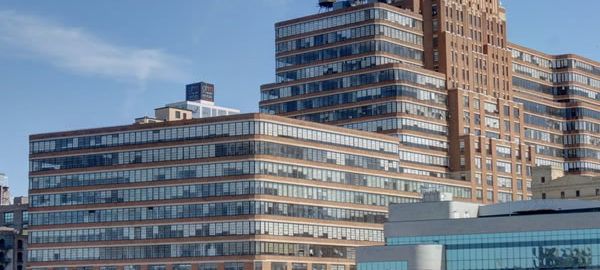
![IMG_4069_70_71Adjust [3/11/2012 12:47:39 PM] IMG_4069_70_71Adjust [3/11/2012 12:47:39 PM]](https://www.newyorkitecture.com/wp-content/gallery/west-chelsea/img_4069_70_71adjust.jpg)
![IMG_4144_5_6Adjust [3/11/2012 1:10:27 PM] IMG_4144_5_6Adjust [3/11/2012 1:10:27 PM]](https://www.newyorkitecture.com/wp-content/gallery/west-chelsea/img_4144_5_6adjust.jpg)
![IMG_4138_39_40Adjust [3/11/2012 1:09:00 PM] IMG_4138_39_40Adjust [3/11/2012 1:09:00 PM]](https://www.newyorkitecture.com/wp-content/gallery/west-chelsea/img_4138_39_40adjust.jpg)
![IMG_4126_7_8Adjust [3/11/2012 1:06:43 PM] IMG_4126_7_8Adjust [3/11/2012 1:06:43 PM]](https://www.newyorkitecture.com/wp-content/gallery/west-chelsea/img_4126_7_8adjust.jpg)
![IMG_4108_09_10Adjust [3/11/2012 1:01:29 PM] IMG_4108_09_10Adjust [3/11/2012 1:01:29 PM]](https://www.newyorkitecture.com/wp-content/gallery/west-chelsea/img_4108_09_10adjust.jpg)
![IMG_4105_6_7Adjust [3/11/2012 1:00:48 PM] IMG_4105_6_7Adjust [3/11/2012 1:00:48 PM]](https://www.newyorkitecture.com/wp-content/gallery/west-chelsea/img_4105_6_7adjust.jpg)
![IMG_4096_7_8Adjust [3/11/2012 12:56:50 PM] IMG_4096_7_8Adjust [3/11/2012 12:56:50 PM]](https://www.newyorkitecture.com/wp-content/gallery/west-chelsea/img_4096_7_8adjust.jpg)
![IMG_4090_1_2Adjust [3/11/2012 12:54:47 PM] IMG_4090_1_2Adjust [3/11/2012 12:54:47 PM]](https://www.newyorkitecture.com/wp-content/gallery/west-chelsea/img_4090_1_2adjust.jpg)
![IMG_4075_6_7Adjust [3/11/2012 12:49:32 PM] IMG_4075_6_7Adjust [3/11/2012 12:49:32 PM]](https://www.newyorkitecture.com/wp-content/gallery/west-chelsea/img_4075_6_7adjust.jpg)
![IMG_4156_7_8Adjust [3/11/2012 1:13:58 PM] IMG_4156_7_8Adjust [3/11/2012 1:13:58 PM]](https://www.newyorkitecture.com/wp-content/gallery/west-chelsea/img_4156_7_8adjust.jpg)
![IMG_4063_4_5Adjust [3/11/2012 12:45:33 PM] IMG_4063_4_5Adjust [3/11/2012 12:45:33 PM]](https://www.newyorkitecture.com/wp-content/gallery/west-chelsea/img_4063_4_5adjust.jpg)
![IMG_4054_5_6Adjust [3/11/2012 12:42:24 PM] IMG_4054_5_6Adjust [3/11/2012 12:42:24 PM]](https://www.newyorkitecture.com/wp-content/gallery/west-chelsea/img_4054_5_6adjust.jpg)
![IMG_4042_3_4Adjust [3/11/2012 12:40:21 PM] IMG_4042_3_4Adjust [3/11/2012 12:40:21 PM]](https://www.newyorkitecture.com/wp-content/gallery/west-chelsea/img_4042_3_4adjust.jpg)
![IMG_4036_7_8Adjust [3/11/2012 12:38:37 PM] IMG_4036_7_8Adjust [3/11/2012 12:38:37 PM]](https://www.newyorkitecture.com/wp-content/gallery/west-chelsea/img_4036_7_8adjust.jpg)
![IMG_4018_19_20Adjust [3/11/2012 12:36:15 PM] IMG_4018_19_20Adjust [3/11/2012 12:36:15 PM]](https://www.newyorkitecture.com/wp-content/gallery/west-chelsea/img_4018_19_20adjust.jpg)
![IMG_4009_10_11Adjust [3/11/2012 12:30:10 PM] IMG_4009_10_11Adjust [3/11/2012 12:30:10 PM]](https://www.newyorkitecture.com/wp-content/gallery/west-chelsea/img_4009_10_11adjust.jpg)
![IMG_3994_5_6Adjust [3/11/2012 12:24:13 PM] IMG_3994_5_6Adjust [3/11/2012 12:24:13 PM]](https://www.newyorkitecture.com/wp-content/gallery/west-chelsea/img_3994_5_6adjust.jpg)
![IMG_3982_3_4Adjust [3/11/2012 12:16:42 PM] IMG_3982_3_4Adjust [3/11/2012 12:16:42 PM]](https://www.newyorkitecture.com/wp-content/gallery/west-chelsea/img_3982_3_4adjust.jpg)
![IMG_4168_69_70Adjust [3/11/2012 1:18:50 PM] IMG_4168_69_70Adjust [3/11/2012 1:18:50 PM]](https://www.newyorkitecture.com/wp-content/gallery/west-chelsea/img_4168_69_70adjust.jpg)
![IMG_4183_4_5Adjust [3/11/2012 1:21:32 PM] IMG_4183_4_5Adjust [3/11/2012 1:21:32 PM]](https://www.newyorkitecture.com/wp-content/gallery/west-chelsea/img_4183_4_5adjust.jpg)
![IMG_4198_199_200Adjust [3/11/2012 1:26:13 PM] IMG_4198_199_200Adjust [3/11/2012 1:26:13 PM]](https://www.newyorkitecture.com/wp-content/gallery/west-chelsea/img_4198_199_200adjust.jpg)
![IMG_4207_8_9Adjust [3/11/2012 1:28:16 PM] IMG_4207_8_9Adjust [3/11/2012 1:28:16 PM]](https://www.newyorkitecture.com/wp-content/gallery/west-chelsea/img_4207_8_9adjust.jpg)
![IMG_4222_3_4Adjust [3/11/2012 1:30:39 PM] IMG_4222_3_4Adjust [3/11/2012 1:30:39 PM]](https://www.newyorkitecture.com/wp-content/gallery/west-chelsea/img_4222_3_4adjust.jpg)
![IMG_4234_5_6Adjust [3/11/2012 1:35:42 PM] IMG_4234_5_6Adjust [3/11/2012 1:35:42 PM]](https://www.newyorkitecture.com/wp-content/gallery/west-chelsea/img_4234_5_6adjust.jpg)
![IMG_4243_4_5Adjust [3/11/2012 1:38:43 PM] IMG_4243_4_5Adjust [3/11/2012 1:38:43 PM]](https://www.newyorkitecture.com/wp-content/gallery/west-chelsea/img_4243_4_5adjust.jpg)
![IMG_4255_6_7Adjust [3/11/2012 1:41:34 PM] IMG_4255_6_7Adjust [3/11/2012 1:41:34 PM]](https://www.newyorkitecture.com/wp-content/gallery/west-chelsea/img_4255_6_7adjust.jpg)
![IMG_4282_3_4Adjust [3/11/2012 1:56:40 PM] IMG_4282_3_4Adjust [3/11/2012 1:56:40 PM]](https://www.newyorkitecture.com/wp-content/gallery/west-chelsea/img_4282_3_4adjust.jpg)
![IMG_4300_1_2Adjust [3/11/2012 2:01:23 PM] IMG_4300_1_2Adjust [3/11/2012 2:01:23 PM]](https://www.newyorkitecture.com/wp-content/gallery/west-chelsea/img_4300_1_2adjust.jpg)
![IMG_4303_4_5Adjust [3/11/2012 2:02:40 PM] IMG_4303_4_5Adjust [3/11/2012 2:02:40 PM]](https://www.newyorkitecture.com/wp-content/gallery/west-chelsea/img_4303_4_5adjust.jpg)
![IMG_4309_10_11Adjust [3/11/2012 2:04:46 PM] IMG_4309_10_11Adjust [3/11/2012 2:04:46 PM]](https://www.newyorkitecture.com/wp-content/gallery/west-chelsea/img_4309_10_11adjust.jpg)
![IMG_4438_39_40Adjust [3/11/2012 2:46:01 PM] IMG_4438_39_40Adjust [3/11/2012 2:46:01 PM]](https://www.newyorkitecture.com/wp-content/gallery/west-chelsea/img_4438_39_40adjust.jpg)
![IMG_4450_1_2Adjust [3/11/2012 2:47:32 PM] IMG_4450_1_2Adjust [3/11/2012 2:47:32 PM]](https://www.newyorkitecture.com/wp-content/gallery/west-chelsea/img_4450_1_2adjust.jpg)
![IMG_4507_8_9Adjust [3/11/2012 3:05:08 PM] IMG_4507_8_9Adjust [3/11/2012 3:05:08 PM]](https://www.newyorkitecture.com/wp-content/gallery/west-chelsea/img_4507_8_9adjust.jpg)
![IMG_2470_1_2Adjust [3/6/2012 12:47:42 PM] IMG_2470_1_2Adjust [3/6/2012 12:47:42 PM]](https://www.newyorkitecture.com/wp-content/gallery/west-chelsea/img_2470_1_2adjust.jpg)
![IMG_2638_39_40Adjust [3/6/2012 1:54:13 PM] IMG_2638_39_40Adjust [3/6/2012 1:54:13 PM]](https://www.newyorkitecture.com/wp-content/gallery/west-chelsea/img_2638_39_40adjust.jpg)
![IMG_2629_30_31Adjust [3/6/2012 1:49:08 PM] IMG_2629_30_31Adjust [3/6/2012 1:49:08 PM]](https://www.newyorkitecture.com/wp-content/gallery/west-chelsea/img_2629_30_31adjust.jpg)
![IMG_2506_7_8Adjust [3/6/2012 1:02:08 PM] IMG_2506_7_8Adjust [3/6/2012 1:02:08 PM]](https://www.newyorkitecture.com/wp-content/gallery/west-chelsea/img_2506_7_8adjust.jpg)
![IMG_2491_2_3Adjust [3/6/2012 12:54:09 PM] IMG_2491_2_3Adjust [3/6/2012 12:54:09 PM]](https://www.newyorkitecture.com/wp-content/gallery/west-chelsea/img_2491_2_3adjust.jpg)
![IMG_2488_89_90Adjust [3/6/2012 12:52:19 PM] IMG_2488_89_90Adjust [3/6/2012 12:52:19 PM]](https://www.newyorkitecture.com/wp-content/gallery/west-chelsea/img_2488_89_90adjust.jpg)
![IMG_2479_80_81Adjust [3/6/2012 12:50:01 PM] IMG_2479_80_81Adjust [3/6/2012 12:50:01 PM]](https://www.newyorkitecture.com/wp-content/gallery/west-chelsea/img_2479_80_81adjust.jpg)
![IMG_2476_7_8Adjust [3/6/2012 12:49:22 PM] IMG_2476_7_8Adjust [3/6/2012 12:49:22 PM]](https://www.newyorkitecture.com/wp-content/gallery/west-chelsea/img_2476_7_8adjust.jpg)
![IMG_2473_4_5Adjust [3/6/2012 12:48:20 PM] IMG_2473_4_5Adjust [3/6/2012 12:48:20 PM]](https://www.newyorkitecture.com/wp-content/gallery/west-chelsea/img_2473_4_5adjust.jpg)
![IMG_2641_2_3Adjust [3/6/2012 1:54:39 PM] IMG_2641_2_3Adjust [3/6/2012 1:54:39 PM]](https://www.newyorkitecture.com/wp-content/gallery/west-chelsea/img_2641_2_3adjust.jpg)
![IMG_2458_59_60Adjust [3/6/2012 12:41:55 PM] IMG_2458_59_60Adjust [3/6/2012 12:41:55 PM]](https://www.newyorkitecture.com/wp-content/gallery/west-chelsea/img_2458_59_60adjust.jpg)
![IMG_2452_3_4Adjust [3/6/2012 12:40:20 PM] IMG_2452_3_4Adjust [3/6/2012 12:40:20 PM]](https://www.newyorkitecture.com/wp-content/gallery/west-chelsea/img_2452_3_4adjust.jpg)
![IMG_2449_50_51Adjust [3/6/2012 12:38:17 PM] IMG_2449_50_51Adjust [3/6/2012 12:38:17 PM]](https://www.newyorkitecture.com/wp-content/gallery/west-chelsea/img_2449_50_51adjust.jpg)
![IMG_2431_2_3Adjust [3/6/2012 12:34:47 PM] IMG_2431_2_3Adjust [3/6/2012 12:34:47 PM]](https://www.newyorkitecture.com/wp-content/gallery/west-chelsea/img_2431_2_3adjust.jpg)
![IMG_2425_6_7Adjust [3/6/2012 12:32:21 PM] IMG_2425_6_7Adjust [3/6/2012 12:32:21 PM]](https://www.newyorkitecture.com/wp-content/gallery/west-chelsea/img_2425_6_7adjust.jpg)
![IMG_2410_1_2Adjust [3/6/2012 12:28:24 PM] IMG_2410_1_2Adjust [3/6/2012 12:28:24 PM]](https://www.newyorkitecture.com/wp-content/gallery/west-chelsea/img_2410_1_2adjust.jpg)
![IMG_2404_5_6Adjust [3/6/2012 12:26:21 PM] IMG_2404_5_6Adjust [3/6/2012 12:26:21 PM]](https://www.newyorkitecture.com/wp-content/gallery/west-chelsea/img_2404_5_6adjust.jpg)
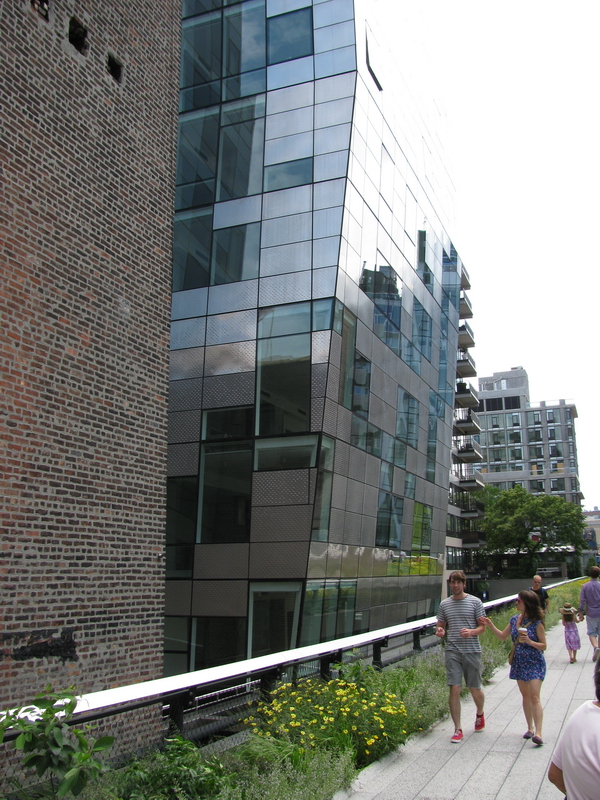
![IMG_2650_1_2Adjust [3/6/2012 1:58:10 PM] IMG_2650_1_2Adjust [3/6/2012 1:58:10 PM]](https://www.newyorkitecture.com/wp-content/gallery/west-chelsea/img_2650_1_2adjust.jpg)
![IMG_2659_60_61Adjust [3/6/2012 2:00:11 PM] IMG_2659_60_61Adjust [3/6/2012 2:00:11 PM]](https://www.newyorkitecture.com/wp-content/gallery/west-chelsea/img_2659_60_61adjust.jpg)
![IMG_2713_4_5Adjust [3/6/2012 2:23:25 PM] IMG_2713_4_5Adjust [3/6/2012 2:23:25 PM]](https://www.newyorkitecture.com/wp-content/gallery/west-chelsea/img_2713_4_5adjust.jpg)
![IMG_2740_1_2Adjust [3/6/2012 2:35:22 PM] IMG_2740_1_2Adjust [3/6/2012 2:35:22 PM]](https://www.newyorkitecture.com/wp-content/gallery/west-chelsea/img_2740_1_2adjust.jpg)
![IMG_3904_5_6Adjust [3/11/2012 11:40:07 AM] IMG_3904_5_6Adjust [3/11/2012 11:40:07 AM]](https://www.newyorkitecture.com/wp-content/gallery/west-chelsea/img_3904_5_6adjust.jpg)
![IMG_3910_1_2Adjust [3/11/2012 11:43:07 AM] IMG_3910_1_2Adjust [3/11/2012 11:43:07 AM]](https://www.newyorkitecture.com/wp-content/gallery/west-chelsea/img_3910_1_2adjust.jpg)
![IMG_3916_7_8Adjust [3/11/2012 11:45:44 AM] IMG_3916_7_8Adjust [3/11/2012 11:45:44 AM]](https://www.newyorkitecture.com/wp-content/gallery/west-chelsea/img_3916_7_8adjust.jpg)
![IMG_3922_3_4Adjust [3/11/2012 11:46:42 AM] IMG_3922_3_4Adjust [3/11/2012 11:46:42 AM]](https://www.newyorkitecture.com/wp-content/gallery/west-chelsea/img_3922_3_4adjust.jpg)
![IMG_3928_29_30Adjust [3/11/2012 11:50:21 AM] IMG_3928_29_30Adjust [3/11/2012 11:50:21 AM]](https://www.newyorkitecture.com/wp-content/gallery/west-chelsea/img_3928_29_30adjust.jpg)
![IMG_3934_5_6Adjust [3/11/2012 11:51:26 AM] IMG_3934_5_6Adjust [3/11/2012 11:51:26 AM]](https://www.newyorkitecture.com/wp-content/gallery/west-chelsea/img_3934_5_6adjust.jpg)
![IMG_3937_8_9Adjust [3/11/2012 11:56:09 AM] IMG_3937_8_9Adjust [3/11/2012 11:56:09 AM]](https://www.newyorkitecture.com/wp-content/gallery/west-chelsea/img_3937_8_9adjust.jpg)
![IMG_3943_4_5Adjust [3/11/2012 12:02:44 PM] IMG_3943_4_5Adjust [3/11/2012 12:02:44 PM]](https://www.newyorkitecture.com/wp-content/gallery/west-chelsea/img_3943_4_5adjust.jpg)
![IMG_3946_7_8Adjust [3/11/2012 12:04:26 PM] IMG_3946_7_8Adjust [3/11/2012 12:04:26 PM]](https://www.newyorkitecture.com/wp-content/gallery/west-chelsea/img_3946_7_8adjust.jpg)
![IMG_3955_6_7Adjust [3/11/2012 12:06:45 PM] IMG_3955_6_7Adjust [3/11/2012 12:06:45 PM]](https://www.newyorkitecture.com/wp-content/gallery/west-chelsea/img_3955_6_7adjust.jpg)
![IMG_3958_59_60Adjust [3/11/2012 12:11:02 PM] IMG_3958_59_60Adjust [3/11/2012 12:11:02 PM]](https://www.newyorkitecture.com/wp-content/gallery/west-chelsea/img_3958_59_60adjust.jpg)
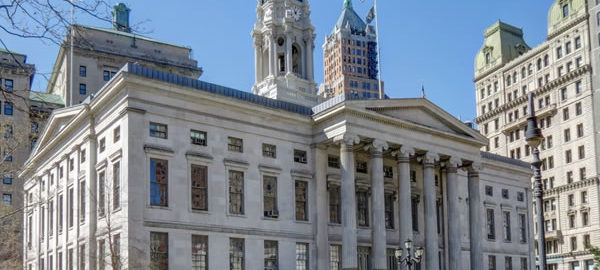
![[Downtown Brooklyn] IMG_6283_4_5Adjust [4/3/2012 9:29:11 AM] [Downtown Brooklyn] IMG_6283_4_5Adjust [4/3/2012 9:29:11 AM]](https://www.newyorkitecture.com/wp-content/gallery/downtown-brooklyn-civic-center/a01_6283_4_5adjust.jpg)
![[Downtown Brooklyn] IMG_6310_1_2Adjust [4/3/2012 9:37:52 AM] [Downtown Brooklyn] IMG_6310_1_2Adjust [4/3/2012 9:37:52 AM]](https://www.newyorkitecture.com/wp-content/gallery/downtown-brooklyn-civic-center/a02_6310_1_2adjust.jpg)
![[Downtown Brooklyn] IMG_6316_7_8Adjust [4/3/2012 9:39:26 AM] [Downtown Brooklyn] IMG_6316_7_8Adjust [4/3/2012 9:39:26 AM]](https://www.newyorkitecture.com/wp-content/gallery/downtown-brooklyn-civic-center/a03_6316_7_8adjust.jpg)
![[Downtown Brooklyn] IMG_6328_29_30Adjust [4/3/2012 9:46:04 AM] [Downtown Brooklyn] IMG_6328_29_30Adjust [4/3/2012 9:46:04 AM]](https://www.newyorkitecture.com/wp-content/gallery/downtown-brooklyn-civic-center/a04_6328_29_30adjust.jpg)
![[Downtown Brooklyn] IMG_6334_5_6Adjust [4/3/2012 9:48:01 AM] [Downtown Brooklyn] IMG_6334_5_6Adjust [4/3/2012 9:48:01 AM]](https://www.newyorkitecture.com/wp-content/gallery/downtown-brooklyn-civic-center/a05_6334_5_6adjust.jpg)
![[Downtown Brooklyn] IMG_6343_4_5Adjust [4/3/2012 9:51:30 AM] [Downtown Brooklyn] IMG_6343_4_5Adjust [4/3/2012 9:51:30 AM]](https://www.newyorkitecture.com/wp-content/gallery/downtown-brooklyn-civic-center/a06_6343_4_5adjust.jpg)
![[Downtown Brooklyn] IMG_6358_59_60Adjust [4/3/2012 9:56:29 AM] [Downtown Brooklyn] IMG_6358_59_60Adjust [4/3/2012 9:56:29 AM]](https://www.newyorkitecture.com/wp-content/gallery/downtown-brooklyn-civic-center/a07_6358_59_60adjust.jpg)
![[Downtown Brooklyn] IMG_6364_5_6Adjust [4/3/2012 9:58:11 AM] [Downtown Brooklyn] IMG_6364_5_6Adjust [4/3/2012 9:58:11 AM]](https://www.newyorkitecture.com/wp-content/gallery/downtown-brooklyn-civic-center/a08_6364_5_6adjust.jpg)
![[Downtown Brooklyn] IMG_6367_8_9Adjust [4/3/2012 10:00:09 AM] [Downtown Brooklyn] IMG_6367_8_9Adjust [4/3/2012 10:00:09 AM]](https://www.newyorkitecture.com/wp-content/gallery/downtown-brooklyn-civic-center/a09_6367_8_9adjust.jpg)
![[Downtown Brooklyn] IMG_6352_3_4Adjust [4/3/2012 9:53:11 AM] [Downtown Brooklyn] IMG_6352_3_4Adjust [4/3/2012 9:53:11 AM]](https://www.newyorkitecture.com/wp-content/gallery/downtown-brooklyn-civic-center/a10_6352_3_4adjust.jpg)
![[Downtown Brooklyn] IMG_8020_1_2Adjust [4/5/2012 9:30:19 AM] [Downtown Brooklyn] IMG_8020_1_2Adjust [4/5/2012 9:30:19 AM]](https://www.newyorkitecture.com/wp-content/gallery/downtown-brooklyn-civic-center/a11_8020_1_2adjust.jpg)
![[Downtown Brooklyn] IMG_8026_7_8Adjust [4/5/2012 9:33:46 AM] [Downtown Brooklyn] IMG_8026_7_8Adjust [4/5/2012 9:33:46 AM]](https://www.newyorkitecture.com/wp-content/gallery/downtown-brooklyn-civic-center/a12_8026_7_8adjust.jpg)
![[Downtown Brooklyn] IMG_8038_39_40Adjust [4/5/2012 9:35:34 AM] [Downtown Brooklyn] IMG_8038_39_40Adjust [4/5/2012 9:35:34 AM]](https://www.newyorkitecture.com/wp-content/gallery/downtown-brooklyn-civic-center/a13_8038_39_40adjust.jpg)
![[Downtown Brooklyn] IMG_6373_4_5Adjust [4/3/2012 10:05:29 AM] [Downtown Brooklyn] IMG_6373_4_5Adjust [4/3/2012 10:05:29 AM]](https://www.newyorkitecture.com/wp-content/gallery/downtown-brooklyn-civic-center/a14_6373_4_5adjust.jpg)
![[Downtown Brooklyn] IMG_6379_80_81Adjust [4/3/2012 10:06:17 AM] [Downtown Brooklyn] IMG_6379_80_81Adjust [4/3/2012 10:06:17 AM]](https://www.newyorkitecture.com/wp-content/gallery/downtown-brooklyn-civic-center/a15_6379_80_81adjust.jpg)
![[Downtown Brooklyn] IMG_8059_60_61Adjust [4/5/2012 9:38:25 AM] [Downtown Brooklyn] IMG_8059_60_61Adjust [4/5/2012 9:38:25 AM]](https://www.newyorkitecture.com/wp-content/gallery/downtown-brooklyn-civic-center/a16_8059_60_61adjust.jpg)
![[Downtown Brooklyn] IMG_8098_099_100Adjust [4/5/2012 9:50:02 AM] [Downtown Brooklyn] IMG_8098_099_100Adjust [4/5/2012 9:50:02 AM]](https://www.newyorkitecture.com/wp-content/gallery/downtown-brooklyn-civic-center/a17_8098_099_100adjust.jpg)
![[Downtown Brooklyn] IMG_6298_299_300Adjust [4/3/2012 9:33:17 AM] [Downtown Brooklyn] IMG_6298_299_300Adjust [4/3/2012 9:33:17 AM]](https://www.newyorkitecture.com/wp-content/gallery/downtown-brooklyn-civic-center/b_6298_299_300adjust.jpg)
![[Downtown Brooklyn] IMG_7984_5_6Adjust [4/5/2012 9:20:04 AM] [Downtown Brooklyn] IMG_7984_5_6Adjust [4/5/2012 9:20:04 AM]](https://www.newyorkitecture.com/wp-content/gallery/downtown-brooklyn-civic-center/b_7984_5_6adjust.jpg)
![[Downtown Brooklyn] IMG_7990_1_2Adjust [4/5/2012 9:21:34 AM] [Downtown Brooklyn] IMG_7990_1_2Adjust [4/5/2012 9:21:34 AM]](https://www.newyorkitecture.com/wp-content/gallery/downtown-brooklyn-civic-center/b_7990_1_2adjust.jpg)
![[Downtown Brooklyn] IMG_6382_3_4Adjust [4/3/2012 10:07:33 AM] [Downtown Brooklyn] IMG_6382_3_4Adjust [4/3/2012 10:07:33 AM]](https://www.newyorkitecture.com/wp-content/gallery/downtown-brooklyn-civic-center/c01_6382_3_4adjust.jpg)
![[Downtown Brooklyn] IMG_8104_5_6Adjust [4/5/2012 9:54:56 AM] [Downtown Brooklyn] IMG_8104_5_6Adjust [4/5/2012 9:54:56 AM]](https://www.newyorkitecture.com/wp-content/gallery/downtown-brooklyn-civic-center/c01a_8104_5_6adjust.jpg)
![[Downtown Brooklyn] IMG_6421_2_3Adjust [4/3/2012 10:19:08 AM] [Downtown Brooklyn] IMG_6421_2_3Adjust [4/3/2012 10:19:08 AM]](https://www.newyorkitecture.com/wp-content/gallery/downtown-brooklyn-civic-center/c02_6421_2_3adjust.jpg)
![[Downtown Brooklyn] IMG_8008_09_10Adjust [4/5/2012 9:27:58 AM] [Downtown Brooklyn] IMG_8008_09_10Adjust [4/5/2012 9:27:58 AM]](https://www.newyorkitecture.com/wp-content/gallery/downtown-brooklyn-civic-center/c02a_8008_09_10adjust.jpg)
![[Downtown Brooklyn] IMG_8080_1_2Adjust [4/5/2012 9:46:39 AM] [Downtown Brooklyn] IMG_8080_1_2Adjust [4/5/2012 9:46:39 AM]](https://www.newyorkitecture.com/wp-content/gallery/downtown-brooklyn-civic-center/c03_8080_1_2adjust.jpg)
![[Downtown Brooklyn] IMG_7549_50_51Adjust [4/4/2012 1:04:49 PM] [Downtown Brooklyn] IMG_7549_50_51Adjust [4/4/2012 1:04:49 PM]](https://www.newyorkitecture.com/wp-content/gallery/downtown-brooklyn-civic-center/c04_7549_50_51adjust.jpg)
![[Downtown Brooklyn] IMG_6553_4_5Adjust [4/3/2012 11:03:52 AM] [Downtown Brooklyn] IMG_6553_4_5Adjust [4/3/2012 11:03:52 AM]](https://www.newyorkitecture.com/wp-content/gallery/downtown-brooklyn-civic-center/c05_6553_4_5adjust.jpg)
![[Downtown Brooklyn] IMG_7558_59_60Adjust [4/4/2012 1:08:51 PM] [Downtown Brooklyn] IMG_7558_59_60Adjust [4/4/2012 1:08:51 PM]](https://www.newyorkitecture.com/wp-content/gallery/downtown-brooklyn-civic-center/c06_7558_59_60adjust.jpg)
![[Downtown Brooklyn] IMG_6595_6_7Adjust [4/3/2012 11:18:35 AM] [Downtown Brooklyn] IMG_6595_6_7Adjust [4/3/2012 11:18:35 AM]](https://www.newyorkitecture.com/wp-content/gallery/downtown-brooklyn-civic-center/c07_6595_6_7adjust.jpg)
![[Downtown Brooklyn] IMG_6622_3_4Adjust [4/3/2012 11:25:33 AM] [Downtown Brooklyn] IMG_6622_3_4Adjust [4/3/2012 11:25:33 AM]](https://www.newyorkitecture.com/wp-content/gallery/downtown-brooklyn-civic-center/c08_6622_3_4adjust.jpg)
![[Downtown Brooklyn] IMG_6436_7_8Adjust [4/3/2012 10:27:12 AM] [Downtown Brooklyn] IMG_6436_7_8Adjust [4/3/2012 10:27:12 AM]](https://www.newyorkitecture.com/wp-content/gallery/downtown-brooklyn-civic-center/d01_6436_7_8adjust.jpg)
![[Downtown Brooklyn] IMG_6448_49_50Adjust [4/3/2012 10:32:31 AM] [Downtown Brooklyn] IMG_6448_49_50Adjust [4/3/2012 10:32:31 AM]](https://www.newyorkitecture.com/wp-content/gallery/downtown-brooklyn-civic-center/d02_6448_49_50adjust.jpg)
![[Downtown Brooklyn] IMG_6460_1_2Adjust [4/3/2012 10:34:50 AM] [Downtown Brooklyn] IMG_6460_1_2Adjust [4/3/2012 10:34:50 AM]](https://www.newyorkitecture.com/wp-content/gallery/downtown-brooklyn-civic-center/d03_6460_1_2adjust.jpg)
![[Downtown Brooklyn] IMG_6475_6_7Adjust [4/3/2012 10:37:48 AM] [Downtown Brooklyn] IMG_6475_6_7Adjust [4/3/2012 10:37:48 AM]](https://www.newyorkitecture.com/wp-content/gallery/downtown-brooklyn-civic-center/d04_6475_6_7adjust.jpg)
![[Downtown Brooklyn] IMG_6487_8_9Adjust [4/3/2012 10:39:15 AM] [Downtown Brooklyn] IMG_6487_8_9Adjust [4/3/2012 10:39:15 AM]](https://www.newyorkitecture.com/wp-content/gallery/downtown-brooklyn-civic-center/d05_6487_8_9adjust.jpg)
![[Downtown Brooklyn] IMG_6493_4_5Adjust [4/3/2012 10:43:32 AM] [Downtown Brooklyn] IMG_6493_4_5Adjust [4/3/2012 10:43:32 AM]](https://www.newyorkitecture.com/wp-content/gallery/downtown-brooklyn-civic-center/d06_6493_4_5adjust.jpg)
![[Downtown Brooklyn] IMG_6502_3_4Adjust [4/3/2012 10:45:38 AM] [Downtown Brooklyn] IMG_6502_3_4Adjust [4/3/2012 10:45:38 AM]](https://www.newyorkitecture.com/wp-content/gallery/downtown-brooklyn-civic-center/d07_6502_3_4adjust.jpg)
![[Downtown Brooklyn] IMG_6514_5_6Adjust [4/3/2012 10:48:49 AM] [Downtown Brooklyn] IMG_6514_5_6Adjust [4/3/2012 10:48:49 AM]](https://www.newyorkitecture.com/wp-content/gallery/downtown-brooklyn-civic-center/d08_6514_5_6adjust.jpg)
![[Downtown Brooklyn] IMG_6559_60_61Adjust [4/3/2012 11:06:14 AM] [Downtown Brooklyn] IMG_6559_60_61Adjust [4/3/2012 11:06:14 AM]](https://www.newyorkitecture.com/wp-content/gallery/downtown-brooklyn-civic-center/d09_6559_60_61adjust.jpg)
![[Downtown Brooklyn] IMG_6517_8_9Adjust [4/3/2012 10:51:06 AM] [Downtown Brooklyn] IMG_6517_8_9Adjust [4/3/2012 10:51:06 AM]](https://www.newyorkitecture.com/wp-content/gallery/downtown-brooklyn-civic-center/d10_6517_8_9adjust.jpg)
![[Downtown Brooklyn] IMG_6538_39_40Adjust [4/3/2012 11:01:31 AM] [Downtown Brooklyn] IMG_6538_39_40Adjust [4/3/2012 11:01:31 AM]](https://www.newyorkitecture.com/wp-content/gallery/downtown-brooklyn-civic-center/d11_6538_39_40adjust.jpg)
![[Downtown Brooklyn] IMG_8182_3_4Adjust [4/6/2012 8:22:48 AM] [Downtown Brooklyn] IMG_8182_3_4Adjust [4/6/2012 8:22:48 AM]](https://www.newyorkitecture.com/wp-content/gallery/downtown-brooklyn-civic-center/d11_8182_3_4adjust.jpg)
![[Downtown Brooklyn] IMG_6577_8_9Adjust [4/3/2012 11:15:11 AM] [Downtown Brooklyn] IMG_6577_8_9Adjust [4/3/2012 11:15:11 AM]](https://www.newyorkitecture.com/wp-content/gallery/downtown-brooklyn-civic-center/d12_6577_8_9adjust.jpg)
![[Downtown Brooklyn] IMG_6586_7_8Adjust [4/3/2012 11:16:19 AM] [Downtown Brooklyn] IMG_6586_7_8Adjust [4/3/2012 11:16:19 AM]](https://www.newyorkitecture.com/wp-content/gallery/downtown-brooklyn-civic-center/d13_6586_7_8adjust.jpg)
![[Downtown Brooklyn] IMG_7612_3_4Adjust [4/4/2012 1:41:50 PM] [Downtown Brooklyn] IMG_7612_3_4Adjust [4/4/2012 1:41:50 PM]](https://www.newyorkitecture.com/wp-content/gallery/downtown-brooklyn-civic-center/d14_7612_3_4adjust.jpg)
![[Downtown Brooklyn] IMG_6607_8_9Adjust [4/3/2012 11:20:28 AM] [Downtown Brooklyn] IMG_6607_8_9Adjust [4/3/2012 11:20:28 AM]](https://www.newyorkitecture.com/wp-content/gallery/downtown-brooklyn-civic-center/d15_6607_8_9adjust.jpg)
![[Downtown Brooklyn] IMG_6628_29_30Adjust [4/3/2012 11:30:17 AM] [Downtown Brooklyn] IMG_6628_29_30Adjust [4/3/2012 11:30:17 AM]](https://www.newyorkitecture.com/wp-content/gallery/downtown-brooklyn-civic-center/d16_6628_29_30adjust.jpg)
![[Downtown Brooklyn] IMG_6634_5_6Adjust [4/3/2012 11:32:15 AM] [Downtown Brooklyn] IMG_6634_5_6Adjust [4/3/2012 11:32:15 AM]](https://www.newyorkitecture.com/wp-content/gallery/downtown-brooklyn-civic-center/d17_6634_5_6adjust.jpg)
![[Downtown Brooklyn] IMG_6649_50_51Adjust [4/3/2012 11:36:02 AM] [Downtown Brooklyn] IMG_6649_50_51Adjust [4/3/2012 11:36:02 AM]](https://www.newyorkitecture.com/wp-content/gallery/downtown-brooklyn-civic-center/d18_6649_50_51adjust.jpg)
![[Downtown Brooklyn] IMG_6655_6_7Adjust [4/3/2012 11:37:39 AM] [Downtown Brooklyn] IMG_6655_6_7Adjust [4/3/2012 11:37:39 AM]](https://www.newyorkitecture.com/wp-content/gallery/downtown-brooklyn-civic-center/d19_6655_6_7adjust.jpg)
![[Downtown Brooklyn] IMG_6781_2_3Adjust [4/3/2012 12:27:12 PM] [Downtown Brooklyn] IMG_6781_2_3Adjust [4/3/2012 12:27:12 PM]](https://www.newyorkitecture.com/wp-content/gallery/downtown-brooklyn-civic-center/d20_6781_2_3adjust.jpg)
![[Downtown Brooklyn] IMG_6787_8_9Adjust [4/3/2012 12:28:54 PM] [Downtown Brooklyn] IMG_6787_8_9Adjust [4/3/2012 12:28:54 PM]](https://www.newyorkitecture.com/wp-content/gallery/downtown-brooklyn-civic-center/d21_6787_8_9adjust.jpg)
![[Downtown Brooklyn] IMG_7633_4_5Adjust [4/4/2012 1:57:50 PM] [Downtown Brooklyn] IMG_7633_4_5Adjust [4/4/2012 1:57:50 PM]](https://www.newyorkitecture.com/wp-content/gallery/downtown-brooklyn-civic-center/d22_7633_4_5adjust.jpg)
![[Downtown Brooklyn] IMG_6790_1_2Adjust [4/3/2012 12:29:50 PM] [Downtown Brooklyn] IMG_6790_1_2Adjust [4/3/2012 12:29:50 PM]](https://www.newyorkitecture.com/wp-content/gallery/downtown-brooklyn-civic-center/d23_6790_1_2adjust.jpg)
![[Downtown Brooklyn] IMG_6916_7_8Adjust [4/4/2012 9:08:42 AM] [Downtown Brooklyn] IMG_6916_7_8Adjust [4/4/2012 9:08:42 AM]](https://www.newyorkitecture.com/wp-content/gallery/downtown-brooklyn-civic-center/e01_6916_7_8adjust.jpg)
![[Downtown Brooklyn] IMG_6952_3_4Adjust [4/4/2012 9:15:02 AM] [Downtown Brooklyn] IMG_6952_3_4Adjust [4/4/2012 9:15:02 AM]](https://www.newyorkitecture.com/wp-content/gallery/downtown-brooklyn-civic-center/e02_6952_3_4adjust.jpg)
![[Downtown Brooklyn] IMG_6853_4_5Adjust [4/4/2012 8:56:59 AM] [Downtown Brooklyn] IMG_6853_4_5Adjust [4/4/2012 8:56:59 AM]](https://www.newyorkitecture.com/wp-content/gallery/downtown-brooklyn-civic-center/e03_6853_4_5adjust.jpg)
![[Downtown Brooklyn] IMG_6928_29_30Adjust [4/4/2012 9:10:36 AM] [Downtown Brooklyn] IMG_6928_29_30Adjust [4/4/2012 9:10:36 AM]](https://www.newyorkitecture.com/wp-content/gallery/downtown-brooklyn-civic-center/e04_6928_29_30adjust.jpg)
![[Downtown Brooklyn] IMG_8341_2_3Adjust [4/6/2012 9:20:57 AM] [Downtown Brooklyn] IMG_8341_2_3Adjust [4/6/2012 9:20:57 AM]](https://www.newyorkitecture.com/wp-content/gallery/downtown-brooklyn-civic-center/e05_8341_2_3adjust.jpg)
![[Downtown Brooklyn] IMG_8353_4_5Adjust [4/6/2012 9:21:56 AM] [Downtown Brooklyn] IMG_8353_4_5Adjust [4/6/2012 9:21:56 AM]](https://www.newyorkitecture.com/wp-content/gallery/downtown-brooklyn-civic-center/e06_8353_4_5adjust.jpg)
![[Downtown Brooklyn] IMG_8374_5_6Adjust [4/6/2012 9:34:00 AM] [Downtown Brooklyn] IMG_8374_5_6Adjust [4/6/2012 9:34:00 AM]](https://www.newyorkitecture.com/wp-content/gallery/downtown-brooklyn-civic-center/e07_8374_5_6adjust.jpg)
![[Downtown Brooklyn] IMG_8383_4_5Adjust [4/6/2012 9:37:28 AM] [Downtown Brooklyn] IMG_8383_4_5Adjust [4/6/2012 9:37:28 AM]](https://www.newyorkitecture.com/wp-content/gallery/downtown-brooklyn-civic-center/e08_8383_4_5adjust.jpg)
![[Downtown Brooklyn] IMG_6976_7_8Adjust [4/4/2012 9:24:30 AM] [Downtown Brooklyn] IMG_6976_7_8Adjust [4/4/2012 9:24:30 AM]](https://www.newyorkitecture.com/wp-content/gallery/downtown-brooklyn-civic-center/e09_6976_7_8adjust.jpg)
![[Downtown Brooklyn] IMG_6988_89_90Adjust [4/4/2012 9:27:36 AM] [Downtown Brooklyn] IMG_6988_89_90Adjust [4/4/2012 9:27:36 AM]](https://www.newyorkitecture.com/wp-content/gallery/downtown-brooklyn-civic-center/e10_6988_89_90adjust.jpg)
![[Downtown Brooklyn] IMG_6970_1_2Adjust [4/4/2012 9:22:17 AM] [Downtown Brooklyn] IMG_6970_1_2Adjust [4/4/2012 9:22:17 AM]](https://www.newyorkitecture.com/wp-content/gallery/downtown-brooklyn-civic-center/e11_6970_1_2adjust.jpg)
![[Downtown Brooklyn] IMG_6973_4_5Adjust [4/4/2012 9:22:58 AM] [Downtown Brooklyn] IMG_6973_4_5Adjust [4/4/2012 9:22:58 AM]](https://www.newyorkitecture.com/wp-content/gallery/downtown-brooklyn-civic-center/e12_6973_4_5adjust.jpg)
![[Downtown Brooklyn] IMG_7513_4_5Adjust [4/4/2012 12:38:47 PM] [Downtown Brooklyn] IMG_7513_4_5Adjust [4/4/2012 12:38:47 PM]](https://www.newyorkitecture.com/wp-content/gallery/downtown-brooklyn-civic-center/e13_7513_4_5adjust.jpg)
![[Downtown Brooklyn] IMG_7879_80_81Adjust [4/5/2012 8:44:14 AM] [Downtown Brooklyn] IMG_7879_80_81Adjust [4/5/2012 8:44:14 AM]](https://www.newyorkitecture.com/wp-content/gallery/downtown-brooklyn-civic-center/e14_7879_80_81adjust.jpg)
![[Downtown Brooklyn] IMG_8284_5_6Adjust [4/6/2012 8:58:38 AM] [Downtown Brooklyn] IMG_8284_5_6Adjust [4/6/2012 8:58:38 AM]](https://www.newyorkitecture.com/wp-content/gallery/downtown-brooklyn-civic-center/e15_8284_5_6adjust.jpg)
![[Downtown Brooklyn] IMG_8242_3_4Adjust [4/6/2012 8:44:45 AM] [Downtown Brooklyn] IMG_8242_3_4Adjust [4/6/2012 8:44:45 AM]](https://www.newyorkitecture.com/wp-content/gallery/downtown-brooklyn-civic-center/e16_8242_3_4adjust.jpg)
![[Downtown Brooklyn] IMG_8251_2_3Adjust [4/6/2012 8:47:35 AM] [Downtown Brooklyn] IMG_8251_2_3Adjust [4/6/2012 8:47:35 AM]](https://www.newyorkitecture.com/wp-content/gallery/downtown-brooklyn-civic-center/e17_8251_2_3adjust.jpg)
![[Downtown Brooklyn] IMG_8269_70_71Adjust [4/6/2012 8:50:01 AM] [Downtown Brooklyn] IMG_8269_70_71Adjust [4/6/2012 8:50:01 AM]](https://www.newyorkitecture.com/wp-content/gallery/downtown-brooklyn-civic-center/e18_8269_70_71adjust.jpg)
![[Downtown Brooklyn] IMG_8272_3_4Adjust [4/6/2012 8:55:49 AM] [Downtown Brooklyn] IMG_8272_3_4Adjust [4/6/2012 8:55:49 AM]](https://www.newyorkitecture.com/wp-content/gallery/downtown-brooklyn-civic-center/e19_8272_3_4adjust.jpg)
![[Downtown Brooklyn] IMG_8299_300_301Adjust [4/6/2012 9:00:24 AM] [Downtown Brooklyn] IMG_8299_300_301Adjust [4/6/2012 9:00:24 AM]](https://www.newyorkitecture.com/wp-content/gallery/downtown-brooklyn-civic-center/e20_8299_300_301adjust.jpg)
![[Downtown Brooklyn] IMG_7405_6_7Adjust [4/4/2012 12:02:25 PM] [Downtown Brooklyn] IMG_7405_6_7Adjust [4/4/2012 12:02:25 PM]](https://www.newyorkitecture.com/wp-content/gallery/downtown-brooklyn-civic-center/f01_7405_6_7adjust.jpg)
![[Downtown Brooklyn] IMG_7015_6_7Adjust [4/4/2012 9:39:16 AM] [Downtown Brooklyn] IMG_7015_6_7Adjust [4/4/2012 9:39:16 AM]](https://www.newyorkitecture.com/wp-content/gallery/downtown-brooklyn-civic-center/f02_7015_6_7adjust.jpg)
![[Downtown Brooklyn] IMG_7018_19_20Adjust [4/4/2012 9:41:31 AM] [Downtown Brooklyn] IMG_7018_19_20Adjust [4/4/2012 9:41:31 AM]](https://www.newyorkitecture.com/wp-content/gallery/downtown-brooklyn-civic-center/f03_7018_19_20adjust.jpg)
![[Downtown Brooklyn] IMG_7027_8_9Adjust [4/4/2012 9:42:22 AM] [Downtown Brooklyn] IMG_7027_8_9Adjust [4/4/2012 9:42:22 AM]](https://www.newyorkitecture.com/wp-content/gallery/downtown-brooklyn-civic-center/f04_7027_8_9adjust.jpg)
![[Downtown Brooklyn] IMG_7036_7_8Adjust [4/4/2012 9:45:21 AM] [Downtown Brooklyn] IMG_7036_7_8Adjust [4/4/2012 9:45:21 AM]](https://www.newyorkitecture.com/wp-content/gallery/downtown-brooklyn-civic-center/f05_7036_7_8adjust.jpg)
![[Downtown Brooklyn] IMG_7381_2_3Adjust [4/4/2012 11:56:33 AM] [Downtown Brooklyn] IMG_7381_2_3Adjust [4/4/2012 11:56:33 AM]](https://www.newyorkitecture.com/wp-content/gallery/downtown-brooklyn-civic-center/f06_7381_2_3adjust.jpg)
![[Downtown Brooklyn] IMG_7420_1_2Adjust [4/4/2012 12:05:22 PM] [Downtown Brooklyn] IMG_7420_1_2Adjust [4/4/2012 12:05:22 PM]](https://www.newyorkitecture.com/wp-content/gallery/downtown-brooklyn-civic-center/f07_7420_1_2adjust.jpg)
![[Downtown Brooklyn] IMG_7285_6_7Adjust [4/4/2012 11:29:34 AM] [Downtown Brooklyn] IMG_7285_6_7Adjust [4/4/2012 11:29:34 AM]](https://www.newyorkitecture.com/wp-content/gallery/downtown-brooklyn-civic-center/f08_7285_6_7adjust.jpg)
![[Downtown Brooklyn] IMG_7357_8_9Adjust [4/4/2012 11:50:57 AM] [Downtown Brooklyn] IMG_7357_8_9Adjust [4/4/2012 11:50:57 AM]](https://www.newyorkitecture.com/wp-content/gallery/downtown-brooklyn-civic-center/f09_7357_8_9adjust.jpg)
![[Downtown Brooklyn] IMG_7366_7_8Adjust [4/4/2012 11:51:59 AM] [Downtown Brooklyn] IMG_7366_7_8Adjust [4/4/2012 11:51:59 AM]](https://www.newyorkitecture.com/wp-content/gallery/downtown-brooklyn-civic-center/f10_7366_7_8adjust.jpg)
![[Downtown Brooklyn] IMG_7429_30_31Adjust [4/4/2012 12:09:30 PM] [Downtown Brooklyn] IMG_7429_30_31Adjust [4/4/2012 12:09:30 PM]](https://www.newyorkitecture.com/wp-content/gallery/downtown-brooklyn-civic-center/f11_7429_30_31adjust.jpg)
![[Downtown Brooklyn] IMG_7456_7_8Adjust [4/4/2012 12:20:03 PM] [Downtown Brooklyn] IMG_7456_7_8Adjust [4/4/2012 12:20:03 PM]](https://www.newyorkitecture.com/wp-content/gallery/downtown-brooklyn-civic-center/f12_7456_7_8adjust.jpg)
![[Downtown Brooklyn] IMG_7462_3_4Adjust [4/4/2012 12:21:12 PM] [Downtown Brooklyn] IMG_7462_3_4Adjust [4/4/2012 12:21:12 PM]](https://www.newyorkitecture.com/wp-content/gallery/downtown-brooklyn-civic-center/f13_7462_3_4adjust.jpg)
![[Downtown Brooklyn] IMG_7435_6_7Adjust [4/4/2012 12:11:18 PM] [Downtown Brooklyn] IMG_7435_6_7Adjust [4/4/2012 12:11:18 PM]](https://www.newyorkitecture.com/wp-content/gallery/downtown-brooklyn-civic-center/f14_7435_6_7adjust.jpg)
![[Downtown Brooklyn] IMG_7441_2_3Adjust [4/4/2012 12:12:30 PM] [Downtown Brooklyn] IMG_7441_2_3Adjust [4/4/2012 12:12:30 PM]](https://www.newyorkitecture.com/wp-content/gallery/downtown-brooklyn-civic-center/f15_7441_2_3adjust.jpg)
![[Downtown Brooklyn] IMG_7447_8_9Adjust [4/4/2012 12:13:58 PM] [Downtown Brooklyn] IMG_7447_8_9Adjust [4/4/2012 12:13:58 PM]](https://www.newyorkitecture.com/wp-content/gallery/downtown-brooklyn-civic-center/f16_7447_8_9adjust.jpg)
![[Downtown Brooklyn] IMG_7006_7_8Adjust [4/4/2012 9:35:01 AM] [Downtown Brooklyn] IMG_7006_7_8Adjust [4/4/2012 9:35:01 AM]](https://www.newyorkitecture.com/wp-content/gallery/downtown-brooklyn-civic-center/g01_7006_7_8adjust.jpg)
![[Downtown Brooklyn] IMG_7324_5_6Adjust [4/4/2012 11:38:55 AM] [Downtown Brooklyn] IMG_7324_5_6Adjust [4/4/2012 11:38:55 AM]](https://www.newyorkitecture.com/wp-content/gallery/downtown-brooklyn-civic-center/g01_7324_5_6adjust.jpg)
![[Downtown Brooklyn] IMG_7330_1_2Adjust [4/4/2012 11:43:04 AM] [Downtown Brooklyn] IMG_7330_1_2Adjust [4/4/2012 11:43:04 AM]](https://www.newyorkitecture.com/wp-content/gallery/downtown-brooklyn-civic-center/g02_7330_1_2adjust.jpg)
![[Downtown Brooklyn] IMG_7339_40_41Adjust [4/4/2012 11:44:35 AM] [Downtown Brooklyn] IMG_7339_40_41Adjust [4/4/2012 11:44:35 AM]](https://www.newyorkitecture.com/wp-content/gallery/downtown-brooklyn-civic-center/g03_7339_40_41adjust.jpg)
![[Downtown Brooklyn] IMG_7471_2_3Adjust [4/4/2012 12:27:18 PM] [Downtown Brooklyn] IMG_7471_2_3Adjust [4/4/2012 12:27:18 PM]](https://www.newyorkitecture.com/wp-content/gallery/downtown-brooklyn-civic-center/g04_7471_2_3adjust.jpg)
![[Downtown Brooklyn] IMG_7489_90_91Adjust [4/4/2012 12:32:37 PM] [Downtown Brooklyn] IMG_7489_90_91Adjust [4/4/2012 12:32:37 PM]](https://www.newyorkitecture.com/wp-content/gallery/downtown-brooklyn-civic-center/g05_7489_90_91adjust.jpg)
![[Downtown Brooklyn] IMG_7525_6_7Adjust [4/4/2012 12:42:13 PM] [Downtown Brooklyn] IMG_7525_6_7Adjust [4/4/2012 12:42:13 PM]](https://www.newyorkitecture.com/wp-content/gallery/downtown-brooklyn-civic-center/g06_7525_6_7adjust.jpg)
![[Downtown Brooklyn] IMG_7483_4_5Adjust [4/4/2012 12:31:39 PM] [Downtown Brooklyn] IMG_7483_4_5Adjust [4/4/2012 12:31:39 PM]](https://www.newyorkitecture.com/wp-content/gallery/downtown-brooklyn-civic-center/g07_7483_4_5adjust.jpg)
![[Downtown Brooklyn] IMG_7498_499_500Adjust [4/4/2012 12:34:26 PM] [Downtown Brooklyn] IMG_7498_499_500Adjust [4/4/2012 12:34:26 PM]](https://www.newyorkitecture.com/wp-content/gallery/downtown-brooklyn-civic-center/g08_7498_499_500adjust.jpg)
![[Downtown Brooklyn] IMG_7504_5_6Adjust [4/4/2012 12:35:51 PM] [Downtown Brooklyn] IMG_7504_5_6Adjust [4/4/2012 12:35:51 PM]](https://www.newyorkitecture.com/wp-content/gallery/downtown-brooklyn-civic-center/g09_7504_5_6adjust.jpg)
![[Downtown Brooklyn] IMG_7534_5_6Adjust [4/4/2012 12:49:39 PM] [Downtown Brooklyn] IMG_7534_5_6Adjust [4/4/2012 12:49:39 PM]](https://www.newyorkitecture.com/wp-content/gallery/downtown-brooklyn-civic-center/g10_7534_5_6adjust.jpg)
![[Downtown Brooklyn] IMG_7561_2_3Adjust [4/4/2012 1:13:35 PM] [Downtown Brooklyn] IMG_7561_2_3Adjust [4/4/2012 1:13:35 PM]](https://www.newyorkitecture.com/wp-content/gallery/downtown-brooklyn-civic-center/g11_7561_2_3adjust.jpg)
![[Downtown Brooklyn] IMG_7579_80_81Adjust [4/4/2012 1:20:34 PM] [Downtown Brooklyn] IMG_7579_80_81Adjust [4/4/2012 1:20:34 PM]](https://www.newyorkitecture.com/wp-content/gallery/downtown-brooklyn-civic-center/g12_7579_80_81adjust.jpg)
![[Downtown Brooklyn] IMG_7585_6_7Adjust [4/4/2012 1:25:45 PM] [Downtown Brooklyn] IMG_7585_6_7Adjust [4/4/2012 1:25:45 PM]](https://www.newyorkitecture.com/wp-content/gallery/downtown-brooklyn-civic-center/g13_7585_6_7adjust.jpg)
![[Downtown Brooklyn] IMG_7603_4_5Adjust [4/4/2012 1:30:46 PM] [Downtown Brooklyn] IMG_7603_4_5Adjust [4/4/2012 1:30:46 PM]](https://www.newyorkitecture.com/wp-content/gallery/downtown-brooklyn-civic-center/g14_7603_4_5adjust.jpg)
![[Downtown Brooklyn] IMG_7621_2_3Adjust [4/4/2012 1:45:50 PM] [Downtown Brooklyn] IMG_7621_2_3Adjust [4/4/2012 1:45:50 PM]](https://www.newyorkitecture.com/wp-content/gallery/downtown-brooklyn-civic-center/g15_7621_2_3adjust.jpg)
![[Downtown Brooklyn] IMG_7819_20_21Adjust [4/5/2012 8:07:31 AM] [Downtown Brooklyn] IMG_7819_20_21Adjust [4/5/2012 8:07:31 AM]](https://www.newyorkitecture.com/wp-content/gallery/downtown-brooklyn-civic-center/g16_7819_20_21adjust.jpg)
![[Downtown Brooklyn] IMG_7843_4_5Adjust [4/5/2012 8:13:27 AM] [Downtown Brooklyn] IMG_7843_4_5Adjust [4/5/2012 8:13:27 AM]](https://www.newyorkitecture.com/wp-content/gallery/downtown-brooklyn-civic-center/g17_7843_4_5adjust.jpg)
![[Downtown Brooklyn] IMG_7816_7_8Adjust [4/5/2012 8:03:39 AM] [Downtown Brooklyn] IMG_7816_7_8Adjust [4/5/2012 8:03:39 AM]](https://www.newyorkitecture.com/wp-content/gallery/downtown-brooklyn-civic-center/g18_7816_7_8adjust.jpg)
![[Downtown Brooklyn] IMG_7789_90_91Adjust [4/5/2012 7:50:10 AM] [Downtown Brooklyn] IMG_7789_90_91Adjust [4/5/2012 7:50:10 AM]](https://www.newyorkitecture.com/wp-content/gallery/downtown-brooklyn-civic-center/g19_7789_90_91adjust.jpg)
![[Downtown Brooklyn] IMG_7804_5_6Adjust [4/5/2012 7:57:57 AM] [Downtown Brooklyn] IMG_7804_5_6Adjust [4/5/2012 7:57:57 AM]](https://www.newyorkitecture.com/wp-content/gallery/downtown-brooklyn-civic-center/g20_7804_5_6adjust.jpg)
![[Downtown Brooklyn] IMG_7801_2_3Adjust [4/5/2012 7:56:13 AM] [Downtown Brooklyn] IMG_7801_2_3Adjust [4/5/2012 7:56:13 AM]](https://www.newyorkitecture.com/wp-content/gallery/downtown-brooklyn-civic-center/g21_7801_2_3adjust.jpg)
![[Downtown Brooklyn] IMG_7888_89_90Adjust [4/5/2012 8:47:47 AM] [Downtown Brooklyn] IMG_7888_89_90Adjust [4/5/2012 8:47:47 AM]](https://www.newyorkitecture.com/wp-content/gallery/downtown-brooklyn-civic-center/g22_7888_89_90adjust.jpg)
![[Downtown Brooklyn] IMG_8332_3_4Adjust [4/6/2012 9:11:01 AM] [Downtown Brooklyn] IMG_8332_3_4Adjust [4/6/2012 9:11:01 AM]](https://www.newyorkitecture.com/wp-content/gallery/downtown-brooklyn-civic-center/g22_8332_3_4adjust.jpg)
![[Downtown Brooklyn] IMG_7912_3_4Adjust [4/5/2012 8:54:19 AM] [Downtown Brooklyn] IMG_7912_3_4Adjust [4/5/2012 8:54:19 AM]](https://www.newyorkitecture.com/wp-content/gallery/downtown-brooklyn-civic-center/g23_7912_3_4adjust.jpg)
![[Downtown Brooklyn] IMG_7852_3_4Adjust [4/5/2012 8:18:38 AM] [Downtown Brooklyn] IMG_7852_3_4Adjust [4/5/2012 8:18:38 AM]](https://www.newyorkitecture.com/wp-content/gallery/downtown-brooklyn-civic-center/g24_7852_3_4adjust.jpg)
![[Downtown Brooklyn] IMG_8314_5_6Adjust [4/6/2012 9:07:14 AM] [Downtown Brooklyn] IMG_8314_5_6Adjust [4/6/2012 9:07:14 AM]](https://www.newyorkitecture.com/wp-content/gallery/downtown-brooklyn-civic-center/g24_8314_5_6adjust.jpg)
![[Downtown Brooklyn] IMG_8308_09_10Adjust [4/6/2012 9:04:20 AM] [Downtown Brooklyn] IMG_8308_09_10Adjust [4/6/2012 9:04:20 AM]](https://www.newyorkitecture.com/wp-content/gallery/downtown-brooklyn-civic-center/g24b_8308_09_10adjust.jpg)
![[Downtown Brooklyn] IMG_7858_59_60Adjust [4/5/2012 8:21:01 AM] [Downtown Brooklyn] IMG_7858_59_60Adjust [4/5/2012 8:21:01 AM]](https://www.newyorkitecture.com/wp-content/gallery/downtown-brooklyn-civic-center/g25_7858_59_60adjust.jpg)
![[Downtown Brooklyn] IMG_7861_2_3Adjust [4/5/2012 8:22:51 AM] [Downtown Brooklyn] IMG_7861_2_3Adjust [4/5/2012 8:22:51 AM]](https://www.newyorkitecture.com/wp-content/gallery/downtown-brooklyn-civic-center/g26_7861_2_3adjust.jpg)
![[Downtown Brooklyn] IMG_8206_7_8Adjust [4/6/2012 8:28:31 AM] [Downtown Brooklyn] IMG_8206_7_8Adjust [4/6/2012 8:28:31 AM]](https://www.newyorkitecture.com/wp-content/gallery/downtown-brooklyn-civic-center/g27_8206_7_8adjust.jpg)
![[Downtown Brooklyn] IMG_8215_6_7Adjust [4/6/2012 8:29:44 AM] [Downtown Brooklyn] IMG_8215_6_7Adjust [4/6/2012 8:29:44 AM]](https://www.newyorkitecture.com/wp-content/gallery/downtown-brooklyn-civic-center/g28_8215_6_7adjust.jpg)
![[Downtown Brooklyn] IMG_7867_8_9Adjust [4/5/2012 8:34:50 AM] [Downtown Brooklyn] IMG_7867_8_9Adjust [4/5/2012 8:34:50 AM]](https://www.newyorkitecture.com/wp-content/gallery/downtown-brooklyn-civic-center/g29_7867_8_9adjust.jpg)
![[Downtown Brooklyn] IMG_7939_40_41Adjust [4/5/2012 9:06:31 AM] [Downtown Brooklyn] IMG_7939_40_41Adjust [4/5/2012 9:06:31 AM]](https://www.newyorkitecture.com/wp-content/gallery/downtown-brooklyn-civic-center/g30_7939_40_41adjust.jpg)
![[Downtown Brooklyn] IMG_7966_7_8Adjust [4/5/2012 9:15:37 AM] [Downtown Brooklyn] IMG_7966_7_8Adjust [4/5/2012 9:15:37 AM]](https://www.newyorkitecture.com/wp-content/gallery/downtown-brooklyn-civic-center/g31_7966_7_8adjust.jpg)
![[Downtown Brooklyn] IMG_7930_1_2Adjust [4/5/2012 9:03:20 AM] [Downtown Brooklyn] IMG_7930_1_2Adjust [4/5/2012 9:03:20 AM]](https://www.newyorkitecture.com/wp-content/gallery/downtown-brooklyn-civic-center/g32_7930_1_2adjust.jpg)
![[Downtown Brooklyn] IMG_8236_7_8Adjust [4/6/2012 8:36:19 AM] [Downtown Brooklyn] IMG_8236_7_8Adjust [4/6/2012 8:36:19 AM]](https://www.newyorkitecture.com/wp-content/gallery/downtown-brooklyn-civic-center/g33_8236_7_8adjust.jpg)
![[Downtown Brooklyn] IMG_8389_90_91Adjust [4/6/2012 9:45:37 AM] [Downtown Brooklyn] IMG_8389_90_91Adjust [4/6/2012 9:45:37 AM]](https://www.newyorkitecture.com/wp-content/gallery/downtown-brooklyn-civic-center/g34_8389_90_91adjust.jpg)
![[Downtown Brooklyn] IMG_7183_4_5Adjust [4/4/2012 10:53:28 AM] [Downtown Brooklyn] IMG_7183_4_5Adjust [4/4/2012 10:53:28 AM]](https://www.newyorkitecture.com/wp-content/gallery/downtown-brooklyn-civic-center/g35_7183_4_5adjust.jpg)
![[Downtown Brooklyn] IMG_7045_6_7Adjust [4/4/2012 9:48:41 AM] [Downtown Brooklyn] IMG_7045_6_7Adjust [4/4/2012 9:48:41 AM]](https://www.newyorkitecture.com/wp-content/gallery/downtown-brooklyn-civic-center/l_7045_6_7adjust.jpg)
![[Downtown Brooklyn] IMG_7069_70_71Adjust [4/4/2012 10:11:21 AM] [Downtown Brooklyn] IMG_7069_70_71Adjust [4/4/2012 10:11:21 AM]](https://www.newyorkitecture.com/wp-content/gallery/downtown-brooklyn-civic-center/l_7069_70_71adjust.jpg)
![[Downtown Brooklyn] IMG_8161_2_3Adjust [4/5/2012 10:38:42 AM] [Downtown Brooklyn] IMG_8161_2_3Adjust [4/5/2012 10:38:42 AM]](https://www.newyorkitecture.com/wp-content/gallery/downtown-brooklyn-civic-center/l_8161_2_3adjust.jpg)
![[Downtown Brooklyn] IMG_6958_59_60Adjust [4/4/2012 9:17:28 AM] [Downtown Brooklyn] IMG_6958_59_60Adjust [4/4/2012 9:17:28 AM]](https://www.newyorkitecture.com/wp-content/gallery/downtown-brooklyn-civic-center/x_6958_59_60adjust.jpg)
![[Downtown Brooklyn] IMG_7726_7_8Adjust [4/5/2012 7:30:32 AM] [Downtown Brooklyn] IMG_7726_7_8Adjust [4/5/2012 7:30:32 AM]](https://www.newyorkitecture.com/wp-content/gallery/downtown-brooklyn-civic-center/x_7726_7_8adjust.jpg)
![[Downtown Brooklyn] IMG_7750_1_2Adjust [4/5/2012 7:40:41 AM] [Downtown Brooklyn] IMG_7750_1_2Adjust [4/5/2012 7:40:41 AM]](https://www.newyorkitecture.com/wp-content/gallery/downtown-brooklyn-civic-center/x_7750_1_2adjust.jpg)
![[Downtown Brooklyn] IMG_8368_69_70Adjust [4/6/2012 9:33:05 AM] [Downtown Brooklyn] IMG_8368_69_70Adjust [4/6/2012 9:33:05 AM]](https://www.newyorkitecture.com/wp-content/gallery/downtown-brooklyn-civic-center/x_8368_69_70adjust.jpg)
![[Downtown Brooklyn] IMG_6820_1_2Adjust [4/4/2012 8:49:05 AM] [Downtown Brooklyn] IMG_6820_1_2Adjust [4/4/2012 8:49:05 AM]](https://www.newyorkitecture.com/wp-content/gallery/downtown-brooklyn-civic-center/xx_6820_1_2adjust.jpg)
![[Downtown Brooklyn] IMG_6961_2_3Adjust [4/4/2012 9:19:19 AM] [Downtown Brooklyn] IMG_6961_2_3Adjust [4/4/2012 9:19:19 AM]](https://www.newyorkitecture.com/wp-content/gallery/downtown-brooklyn-civic-center/xx_6961_2_3adjust.jpg)
![[Downtown Brooklyn] IMG_7654_5_6Adjust [4/5/2012 7:13:21 AM] [Downtown Brooklyn] IMG_7654_5_6Adjust [4/5/2012 7:13:21 AM]](https://www.newyorkitecture.com/wp-content/gallery/downtown-brooklyn-civic-center/xy_7654_5_6adjust.jpg)
![[Downtown Brooklyn] IMG_6880_1_2Adjust [4/4/2012 9:04:57 AM] [Downtown Brooklyn] IMG_6880_1_2Adjust [4/4/2012 9:04:57 AM]](https://www.newyorkitecture.com/wp-content/gallery/downtown-brooklyn-civic-center/xz_6880_1_2adjust.jpg)
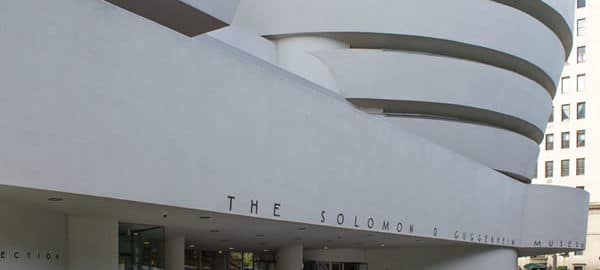
![[Frank Lloyd Wright] IMG_2084_resize [6/5/2012 9:53:12 AM] [Frank Lloyd Wright] IMG_2084_resize [6/5/2012 9:53:12 AM]](https://www.newyorkitecture.com/wp-content/gallery/the-wright-stuff/img_2084_resize.jpg)
![[Frank Lloyd Wright] IMG_2190_resize [6/6/2012 10:04:39 AM] [Frank Lloyd Wright] IMG_2190_resize [6/6/2012 10:04:39 AM]](https://www.newyorkitecture.com/wp-content/gallery/the-wright-stuff/img_2190_resize.jpg)
![[Frank Lloyd Wright] IMG_2189_resize [6/6/2012 10:04:22 AM] [Frank Lloyd Wright] IMG_2189_resize [6/6/2012 10:04:22 AM]](https://www.newyorkitecture.com/wp-content/gallery/the-wright-stuff/img_2189_resize.jpg)
![[Frank Lloyd Wright] IMG_2182_resize [6/6/2012 10:00:52 AM] [Frank Lloyd Wright] IMG_2182_resize [6/6/2012 10:00:52 AM]](https://www.newyorkitecture.com/wp-content/gallery/the-wright-stuff/img_2182_resize.jpg)
![[Frank Lloyd Wright] IMG_2180_resize [6/6/2012 9:59:42 AM] [Frank Lloyd Wright] IMG_2180_resize [6/6/2012 9:59:42 AM]](https://www.newyorkitecture.com/wp-content/gallery/the-wright-stuff/img_2180_resize.jpg)
![[Frank Lloyd Wright] IMG_2179_resize [6/6/2012 9:58:47 AM] [Frank Lloyd Wright] IMG_2179_resize [6/6/2012 9:58:47 AM]](https://www.newyorkitecture.com/wp-content/gallery/the-wright-stuff/img_2179_resize.jpg)
![[Frank Lloyd Wright] IMG_2178_resize [6/6/2012 9:58:36 AM] [Frank Lloyd Wright] IMG_2178_resize [6/6/2012 9:58:36 AM]](https://www.newyorkitecture.com/wp-content/gallery/the-wright-stuff/img_2178_resize.jpg)
![[Frank Lloyd Wright] IMG_2177_resize [6/6/2012 9:58:18 AM] [Frank Lloyd Wright] IMG_2177_resize [6/6/2012 9:58:18 AM]](https://www.newyorkitecture.com/wp-content/gallery/the-wright-stuff/img_2177_resize.jpg)
![[Frank Lloyd Wright] IMG_2176_resize [6/6/2012 9:57:53 AM] [Frank Lloyd Wright] IMG_2176_resize [6/6/2012 9:57:53 AM]](https://www.newyorkitecture.com/wp-content/gallery/the-wright-stuff/img_2176_resize.jpg)
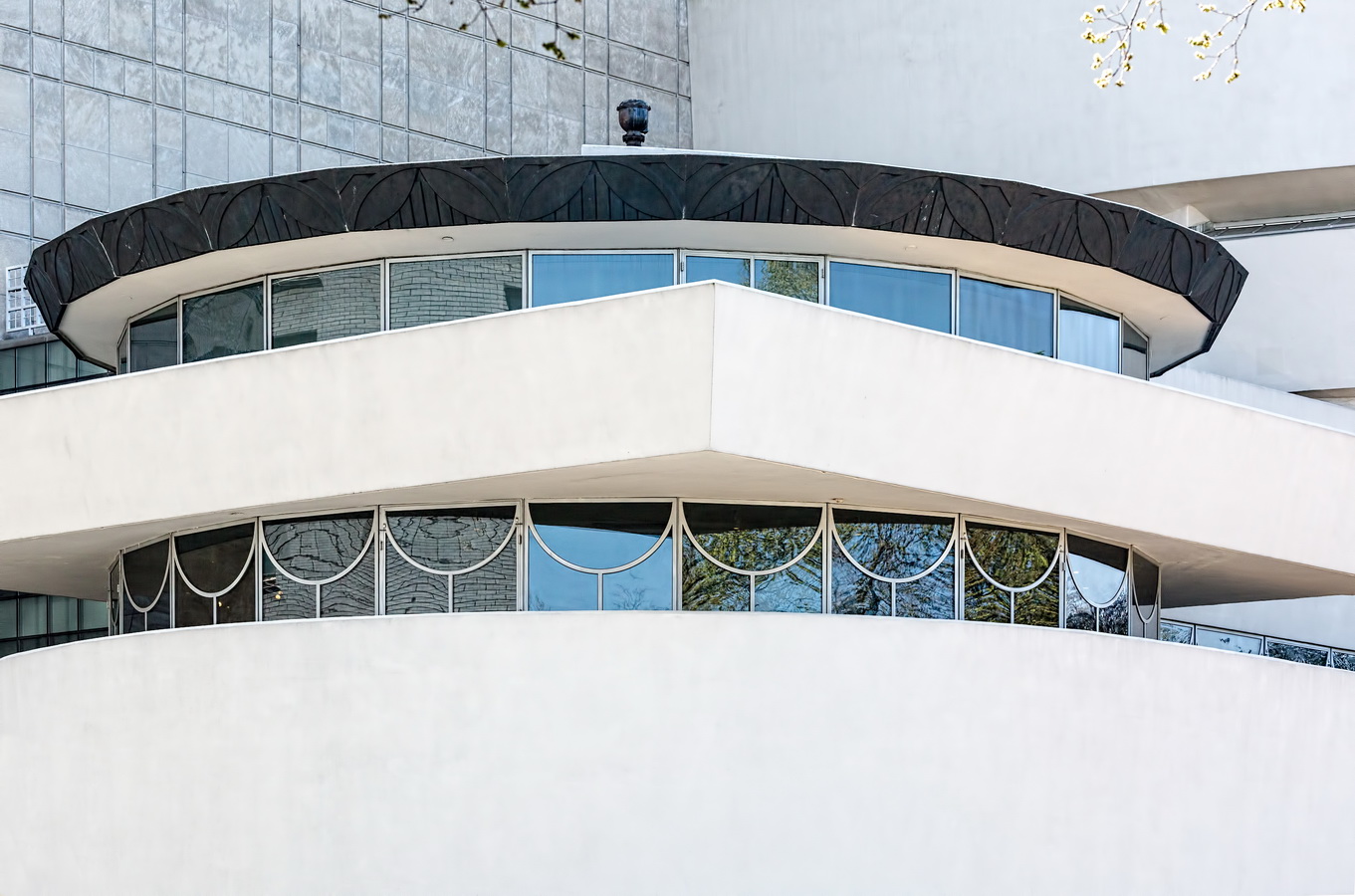
![[Frank Lloyd Wright] IMG_2078_resize [6/5/2012 9:50:07 AM] [Frank Lloyd Wright] IMG_2078_resize [6/5/2012 9:50:07 AM]](https://www.newyorkitecture.com/wp-content/gallery/the-wright-stuff/img_2078_resize.jpg)
![[Frank Lloyd Wright] IMG_2076_resize [6/5/2012 9:49:14 AM] [Frank Lloyd Wright] IMG_2076_resize [6/5/2012 9:49:14 AM]](https://www.newyorkitecture.com/wp-content/gallery/the-wright-stuff/img_2076_resize.jpg)
![[Frank Lloyd Wright] IMG_2073_resize [6/5/2012 9:48:02 AM] [Frank Lloyd Wright] IMG_2073_resize [6/5/2012 9:48:02 AM]](https://www.newyorkitecture.com/wp-content/gallery/the-wright-stuff/img_2073_resize.jpg)
![[Frank Lloyd Wright] IMG_2072_resize [6/5/2012 9:46:27 AM] [Frank Lloyd Wright] IMG_2072_resize [6/5/2012 9:46:27 AM]](https://www.newyorkitecture.com/wp-content/gallery/the-wright-stuff/img_2072_resize.jpg)
![[Frank Lloyd Wright] IMG_2069_resize [6/5/2012 9:45:56 AM] [Frank Lloyd Wright] IMG_2069_resize [6/5/2012 9:45:56 AM]](https://www.newyorkitecture.com/wp-content/gallery/the-wright-stuff/img_2069_resize.jpg)
![[Frank Lloyd Wright] IMG_1974_resize [6/5/2012 8:30:42 AM] [Frank Lloyd Wright] IMG_1974_resize [6/5/2012 8:30:42 AM]](https://www.newyorkitecture.com/wp-content/gallery/the-wright-stuff/img_1974_resize.jpg)
![[Frank Lloyd Wright] IMG_1959_resize [6/5/2012 8:23:02 AM] [Frank Lloyd Wright] IMG_1959_resize [6/5/2012 8:23:02 AM]](https://www.newyorkitecture.com/wp-content/gallery/the-wright-stuff/img_1959_resize.jpg)
![[Frank Lloyd Wright] IMG_1953_resize [6/5/2012 8:16:28 AM] [Frank Lloyd Wright] IMG_1953_resize [6/5/2012 8:16:28 AM]](https://www.newyorkitecture.com/wp-content/gallery/the-wright-stuff/img_1953_resize.jpg)
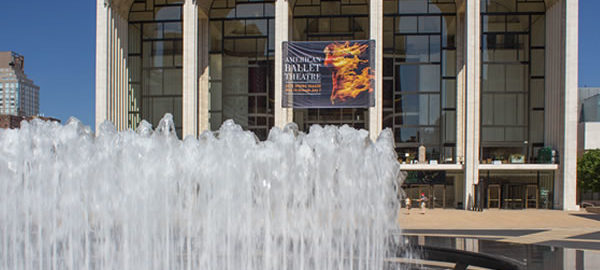
![[Lincoln Center] IMG_2633 [6/8/2012 12:54:00 PM] [Lincoln Center] IMG_2633 [6/8/2012 12:54:00 PM]](https://www.newyorkitecture.com/wp-content/gallery/lincoln-center/img_2633_resize.jpg)
![[Lincoln Center] IMG_2904_resize [6/8/2012 2:54:39 PM] [Lincoln Center] IMG_2904_resize [6/8/2012 2:54:39 PM]](https://www.newyorkitecture.com/wp-content/gallery/lincoln-center/img_2904_resize.jpg)
![[Lincoln Center] IMG_2895_resize [6/8/2012 2:49:05 PM] [Lincoln Center] IMG_2895_resize [6/8/2012 2:49:05 PM]](https://www.newyorkitecture.com/wp-content/gallery/lincoln-center/img_2895_resize.jpg)
![[Lincoln Center] IMG_2889_resize [6/8/2012 2:48:35 PM] [Lincoln Center] IMG_2889_resize [6/8/2012 2:48:35 PM]](https://www.newyorkitecture.com/wp-content/gallery/lincoln-center/img_2889_resize.jpg)
![[Lincoln Center] IMG_2861_resize [6/8/2012 2:32:40 PM] [Lincoln Center] IMG_2861_resize [6/8/2012 2:32:40 PM]](https://www.newyorkitecture.com/wp-content/gallery/lincoln-center/img_2861_resize.jpg)
![[Lincoln Center] IMG_2692_resize [6/8/2012 1:13:30 PM] [Lincoln Center] IMG_2692_resize [6/8/2012 1:13:30 PM]](https://www.newyorkitecture.com/wp-content/gallery/lincoln-center/img_2692_resize.jpg)
![[Lincoln Center] IMG_2687_resize [6/8/2012 1:11:37 PM] [Lincoln Center] IMG_2687_resize [6/8/2012 1:11:37 PM]](https://www.newyorkitecture.com/wp-content/gallery/lincoln-center/img_2687_resize.jpg)
![[Lincoln Center] IMG_2682_resize [6/8/2012 1:10:38 PM] [Lincoln Center] IMG_2682_resize [6/8/2012 1:10:38 PM]](https://www.newyorkitecture.com/wp-content/gallery/lincoln-center/img_2682_resize.jpg)
![[Lincoln Center] IMG_2675_resize [6/8/2012 1:06:32 PM] [Lincoln Center] IMG_2675_resize [6/8/2012 1:06:32 PM]](https://www.newyorkitecture.com/wp-content/gallery/lincoln-center/img_2675_resize.jpg)
![[Lincoln Center] IMG_2669_resize [6/8/2012 1:04:13 PM] [Lincoln Center] IMG_2669_resize [6/8/2012 1:04:13 PM]](https://www.newyorkitecture.com/wp-content/gallery/lincoln-center/img_2669_resize.jpg)
![[Lincoln Center] IMG_2660_resize [6/8/2012 1:01:28 PM] [Lincoln Center] IMG_2660_resize [6/8/2012 1:01:28 PM]](https://www.newyorkitecture.com/wp-content/gallery/lincoln-center/img_2660_resize.jpg)
![[Lincoln Center] IMG_2657_resize [6/8/2012 1:00:24 PM] [Lincoln Center] IMG_2657_resize [6/8/2012 1:00:24 PM]](https://www.newyorkitecture.com/wp-content/gallery/lincoln-center/img_2657_resize.jpg)
![[Lincoln Center] IMG_2656_resize [6/8/2012 1:00:13 PM] [Lincoln Center] IMG_2656_resize [6/8/2012 1:00:13 PM]](https://www.newyorkitecture.com/wp-content/gallery/lincoln-center/img_2656_resize.jpg)
![[Lincoln Center] IMG_2649_resize [6/8/2012 12:59:04 PM] [Lincoln Center] IMG_2649_resize [6/8/2012 12:59:04 PM]](https://www.newyorkitecture.com/wp-content/gallery/lincoln-center/img_2649_resize.jpg)
![[Lincoln Center] IMG_2639_resize [6/8/2012 12:56:59 PM] [Lincoln Center] IMG_2639_resize [6/8/2012 12:56:59 PM]](https://www.newyorkitecture.com/wp-content/gallery/lincoln-center/img_2639_resize.jpg)
![[Lincoln Center] IMG_1644_resize [5/31/2012 9:51:49 AM] [Lincoln Center] IMG_1644_resize [5/31/2012 9:51:49 AM]](https://www.newyorkitecture.com/wp-content/gallery/lincoln-center/img_1644_resize.jpg)
![[Lincoln Center] IMG_2570_resize [6/8/2012 12:30:48 PM] [Lincoln Center] IMG_2570_resize [6/8/2012 12:30:48 PM]](https://www.newyorkitecture.com/wp-content/gallery/lincoln-center/img_2570_resize.jpg)
![[Lincoln Center] IMG_1759_resize [5/31/2012 10:31:51 AM] [Lincoln Center] IMG_1759_resize [5/31/2012 10:31:51 AM]](https://www.newyorkitecture.com/wp-content/gallery/lincoln-center/img_1759_resize.jpg)
![[Lincoln Center] IMG_1748_resize [5/31/2012 10:28:56 AM] [Lincoln Center] IMG_1748_resize [5/31/2012 10:28:56 AM]](https://www.newyorkitecture.com/wp-content/gallery/lincoln-center/img_1748_resize.jpg)
![[Lincoln Center] IMG_1742_resize [5/31/2012 10:26:19 AM] [Lincoln Center] IMG_1742_resize [5/31/2012 10:26:19 AM]](https://www.newyorkitecture.com/wp-content/gallery/lincoln-center/img_1742_resize.jpg)
![[Lincoln Center] IMG_1736_resize [5/31/2012 10:22:00 AM] [Lincoln Center] IMG_1736_resize [5/31/2012 10:22:00 AM]](https://www.newyorkitecture.com/wp-content/gallery/lincoln-center/img_1736_resize.jpg)
![[Lincoln Center] IMG_1731_resize [5/31/2012 10:19:53 AM] [Lincoln Center] IMG_1731_resize [5/31/2012 10:19:53 AM]](https://www.newyorkitecture.com/wp-content/gallery/lincoln-center/img_1731_resize.jpg)
![[Lincoln Center] IMG_1699_resize [5/31/2012 10:15:02 AM] [Lincoln Center] IMG_1699_resize [5/31/2012 10:15:02 AM]](https://www.newyorkitecture.com/wp-content/gallery/lincoln-center/img_1699_resize.jpg)
![[Lincoln Center] IMG_1696_resize [5/31/2012 10:14:50 AM] [Lincoln Center] IMG_1696_resize [5/31/2012 10:14:50 AM]](https://www.newyorkitecture.com/wp-content/gallery/lincoln-center/img_1696_resize.jpg)
![[Lincoln Center] IMG_1667_resize [5/31/2012 10:06:49 AM] [Lincoln Center] IMG_1667_resize [5/31/2012 10:06:49 AM]](https://www.newyorkitecture.com/wp-content/gallery/lincoln-center/img_1667_resize.jpg)
![[Lincoln Center] IMG_1660_resize [5/31/2012 10:00:57 AM] [Lincoln Center] IMG_1660_resize [5/31/2012 10:00:57 AM]](https://www.newyorkitecture.com/wp-content/gallery/lincoln-center/img_1660_resize.jpg)
![[Lincoln Center] IMG_1659_resize [5/31/2012 9:59:39 AM] [Lincoln Center] IMG_1659_resize [5/31/2012 9:59:39 AM]](https://www.newyorkitecture.com/wp-content/gallery/lincoln-center/img_1659_resize.jpg)
![[Lincoln Center] IMG_1655_resize [5/31/2012 9:58:28 AM] [Lincoln Center] IMG_1655_resize [5/31/2012 9:58:28 AM]](https://www.newyorkitecture.com/wp-content/gallery/lincoln-center/img_1655_resize.jpg)
![[Lincoln Center] IMG_1652_resize [5/31/2012 9:57:25 AM] [Lincoln Center] IMG_1652_resize [5/31/2012 9:57:25 AM]](https://www.newyorkitecture.com/wp-content/gallery/lincoln-center/img_1652_resize.jpg)
![[Lincoln Center] IMG_1645_resize [5/31/2012 9:51:57 AM] [Lincoln Center] IMG_1645_resize [5/31/2012 9:51:57 AM]](https://www.newyorkitecture.com/wp-content/gallery/lincoln-center/img_1645_resize.jpg)
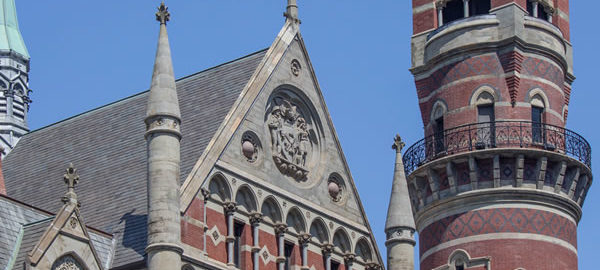
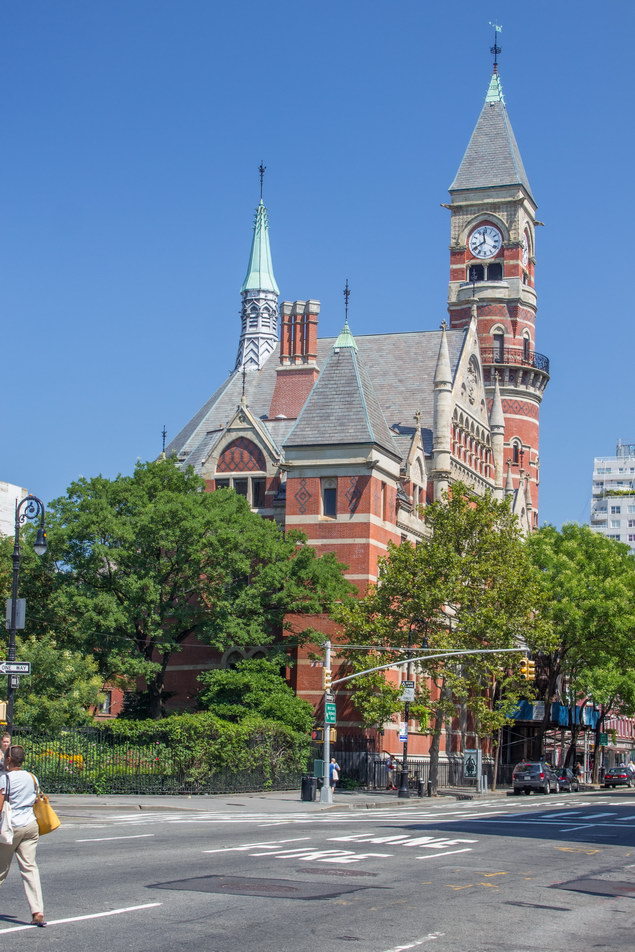
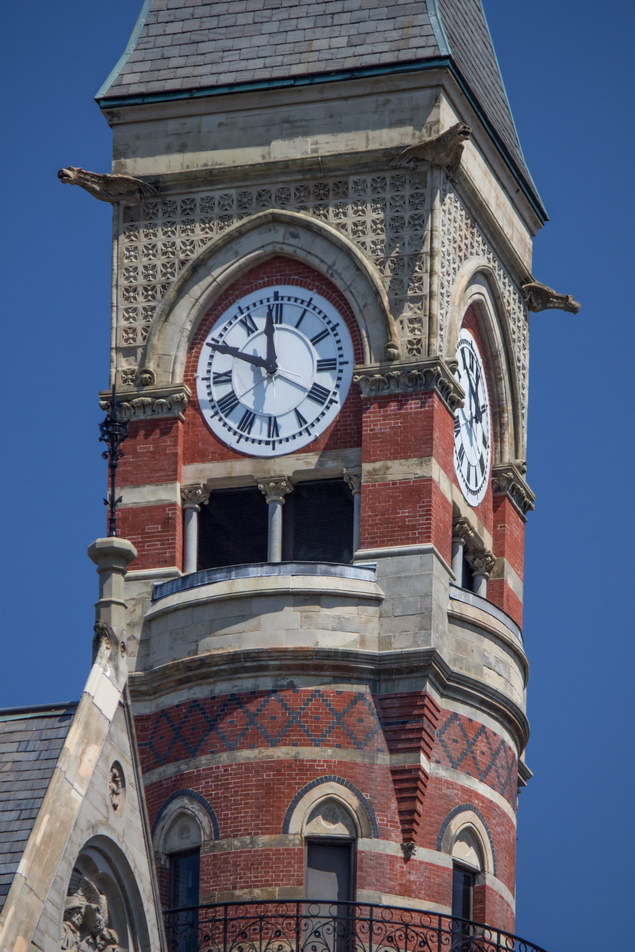
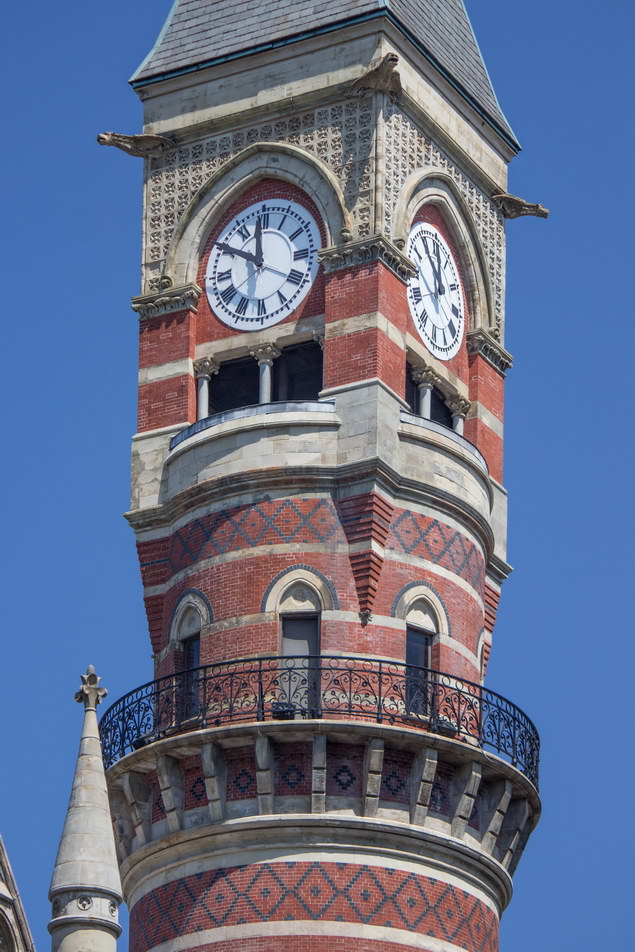
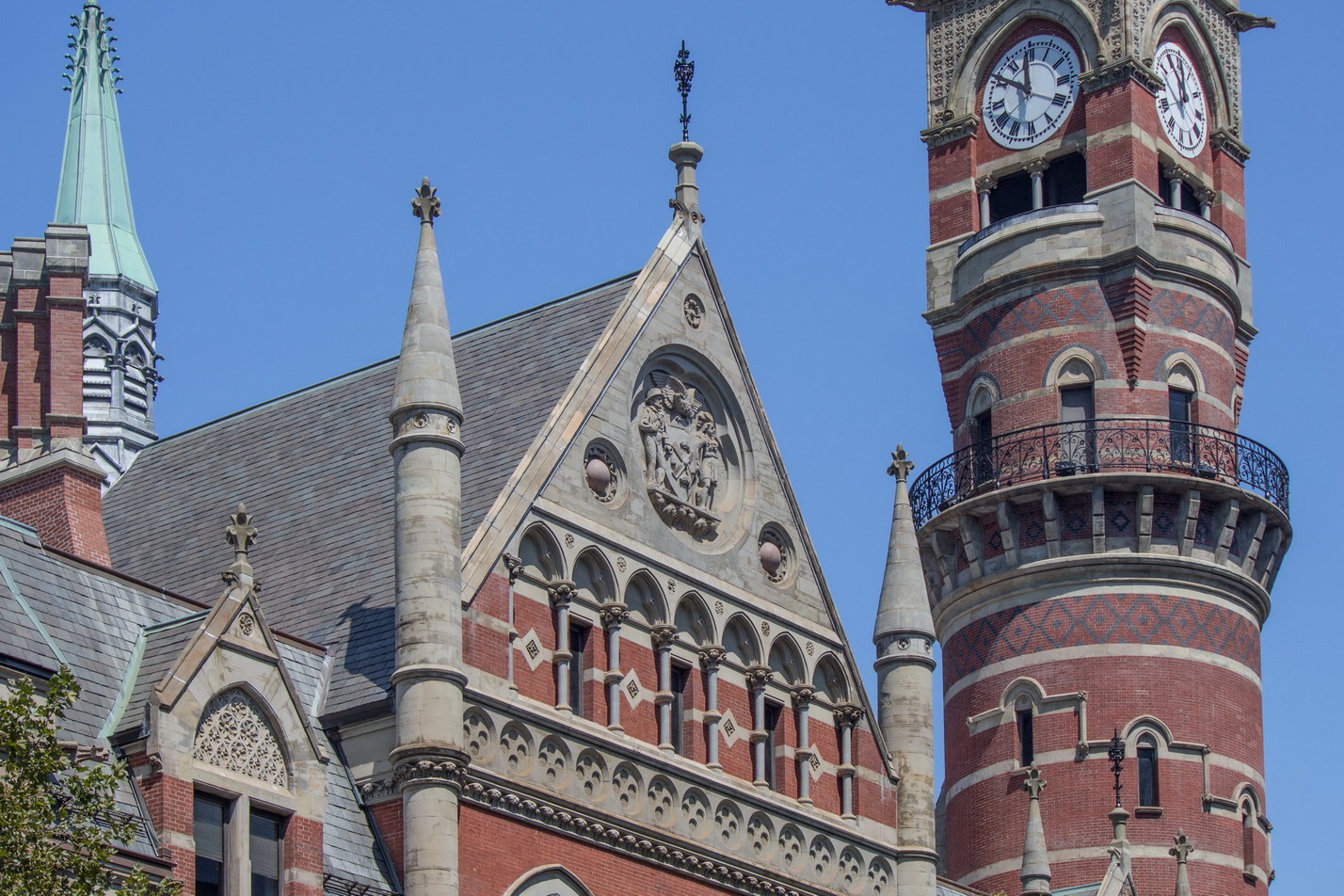
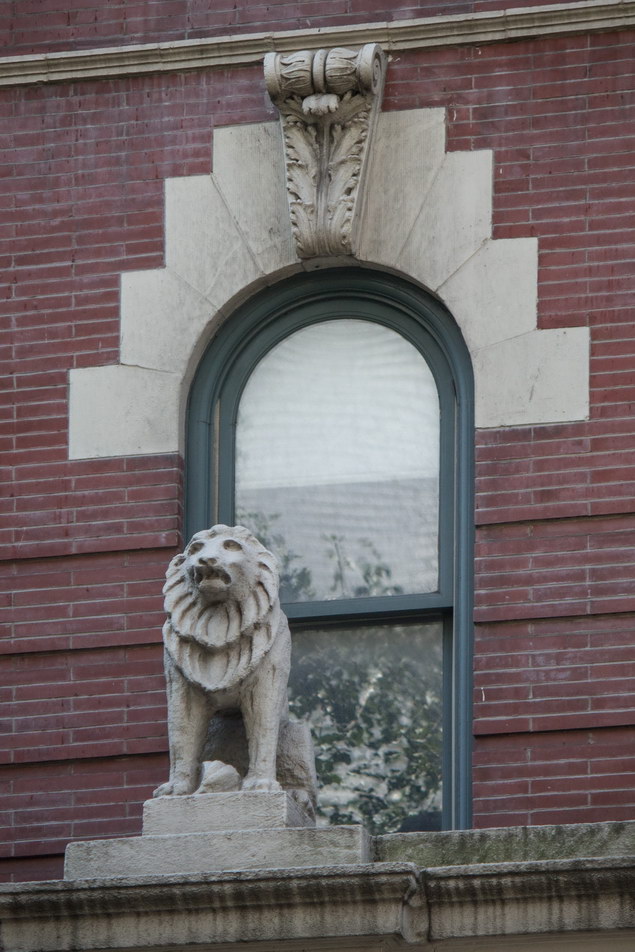
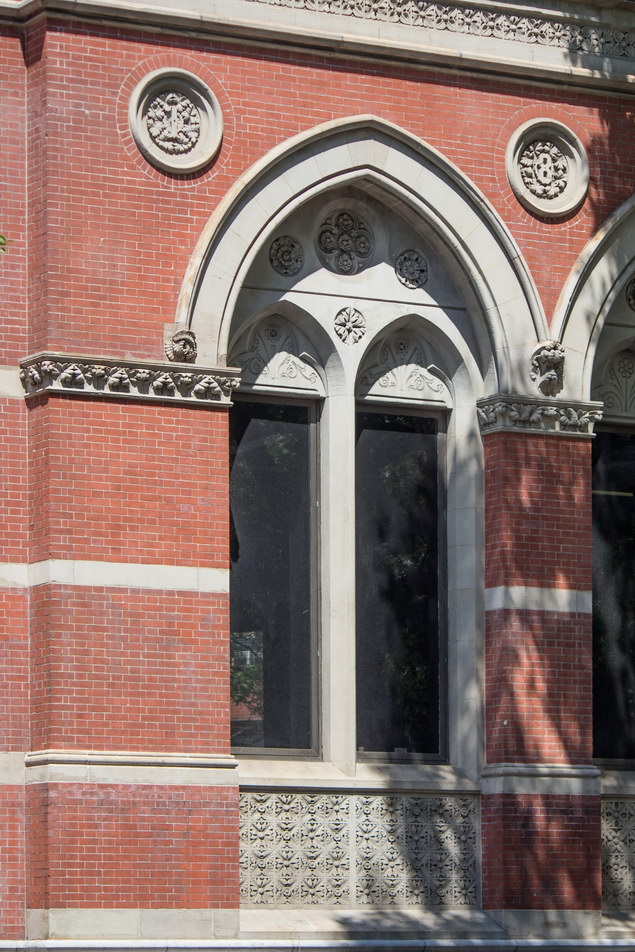
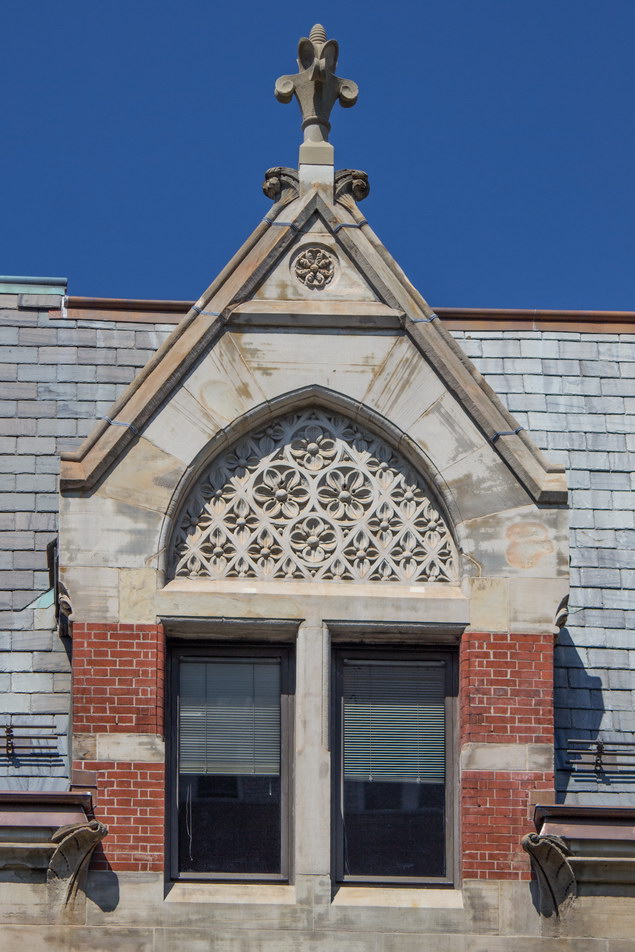
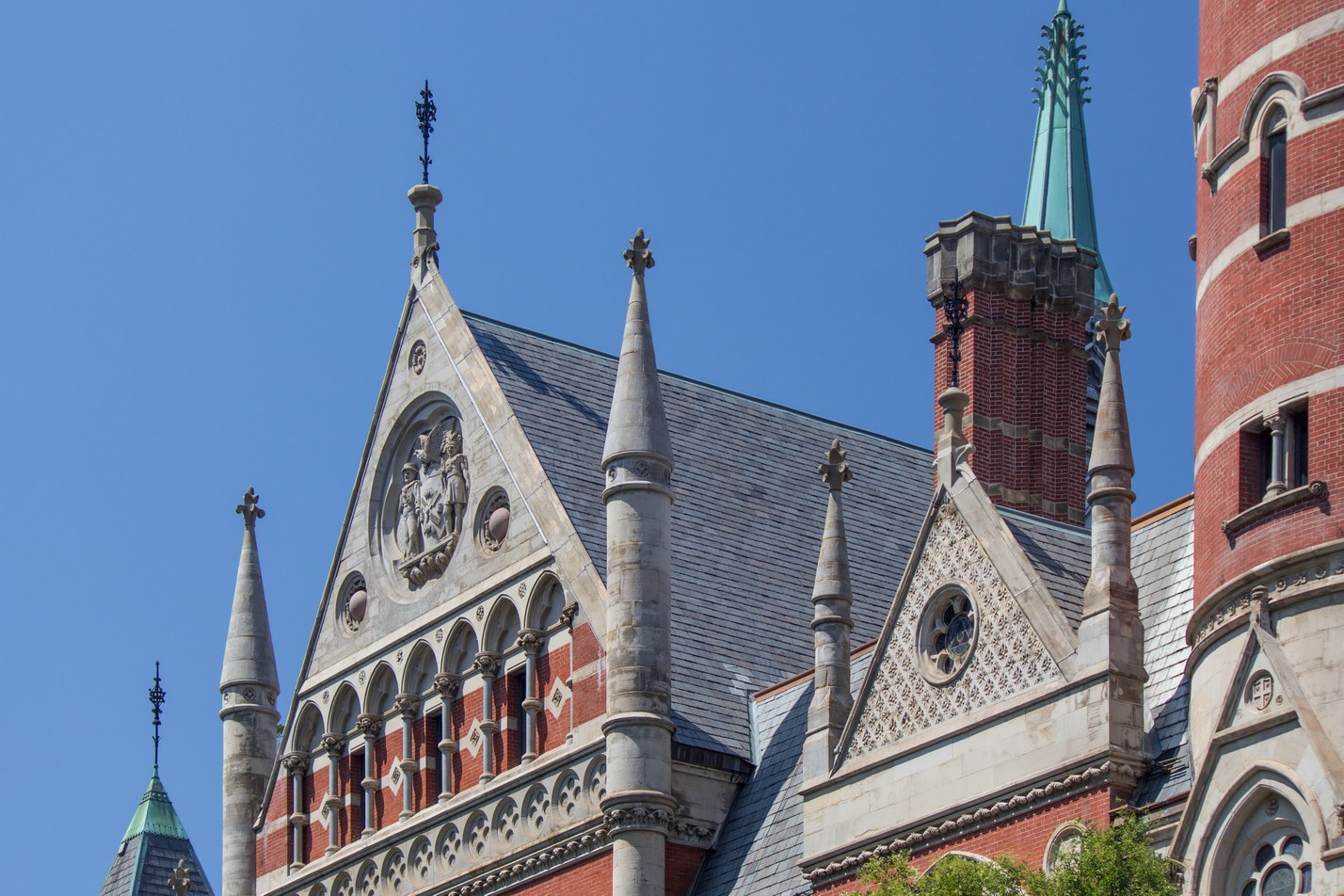
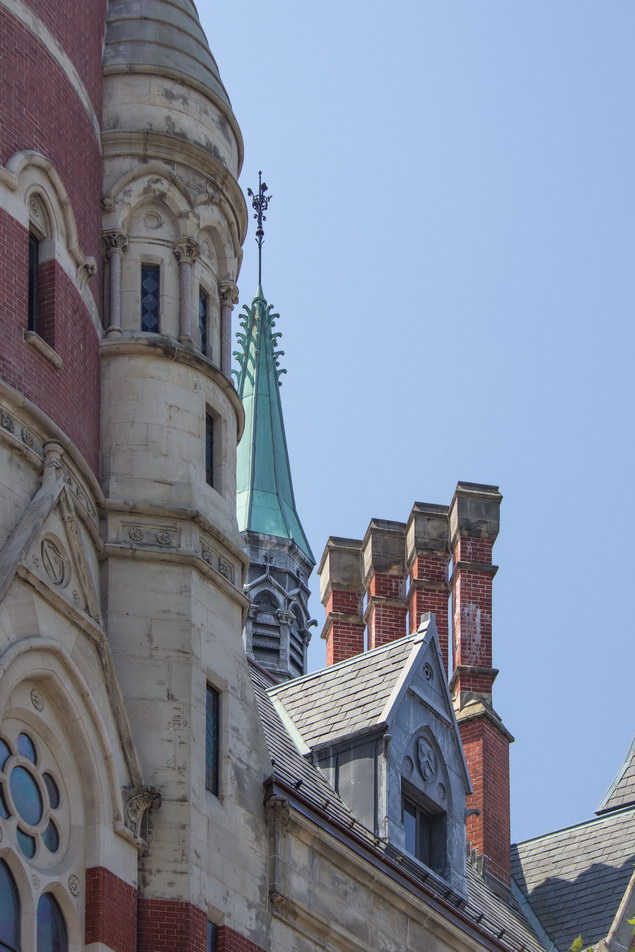
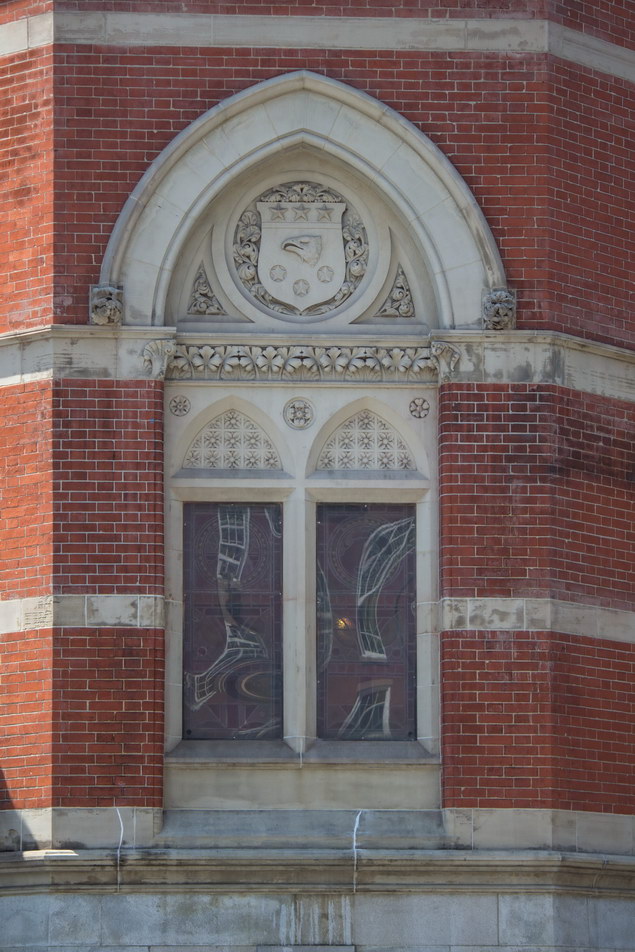
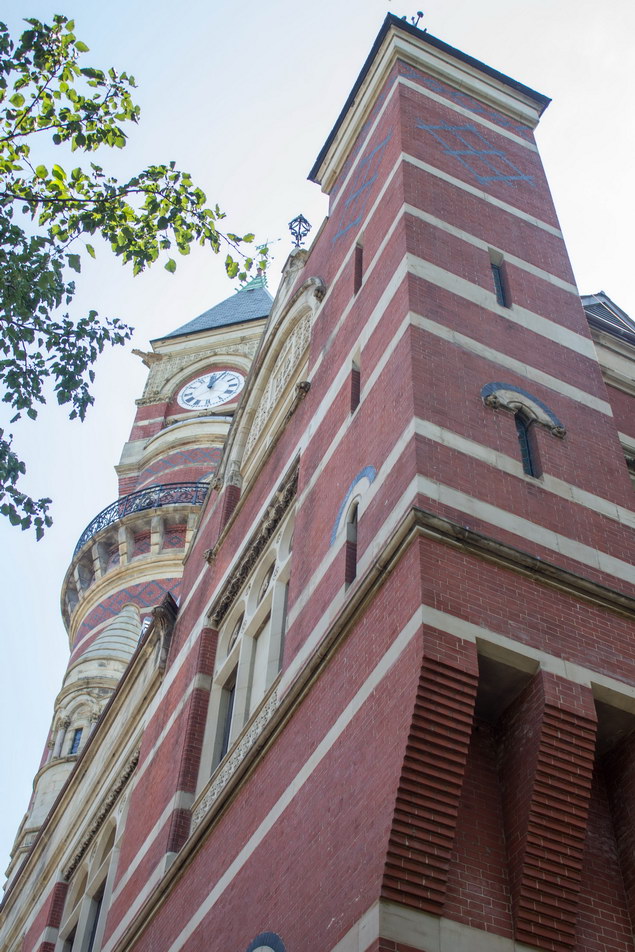
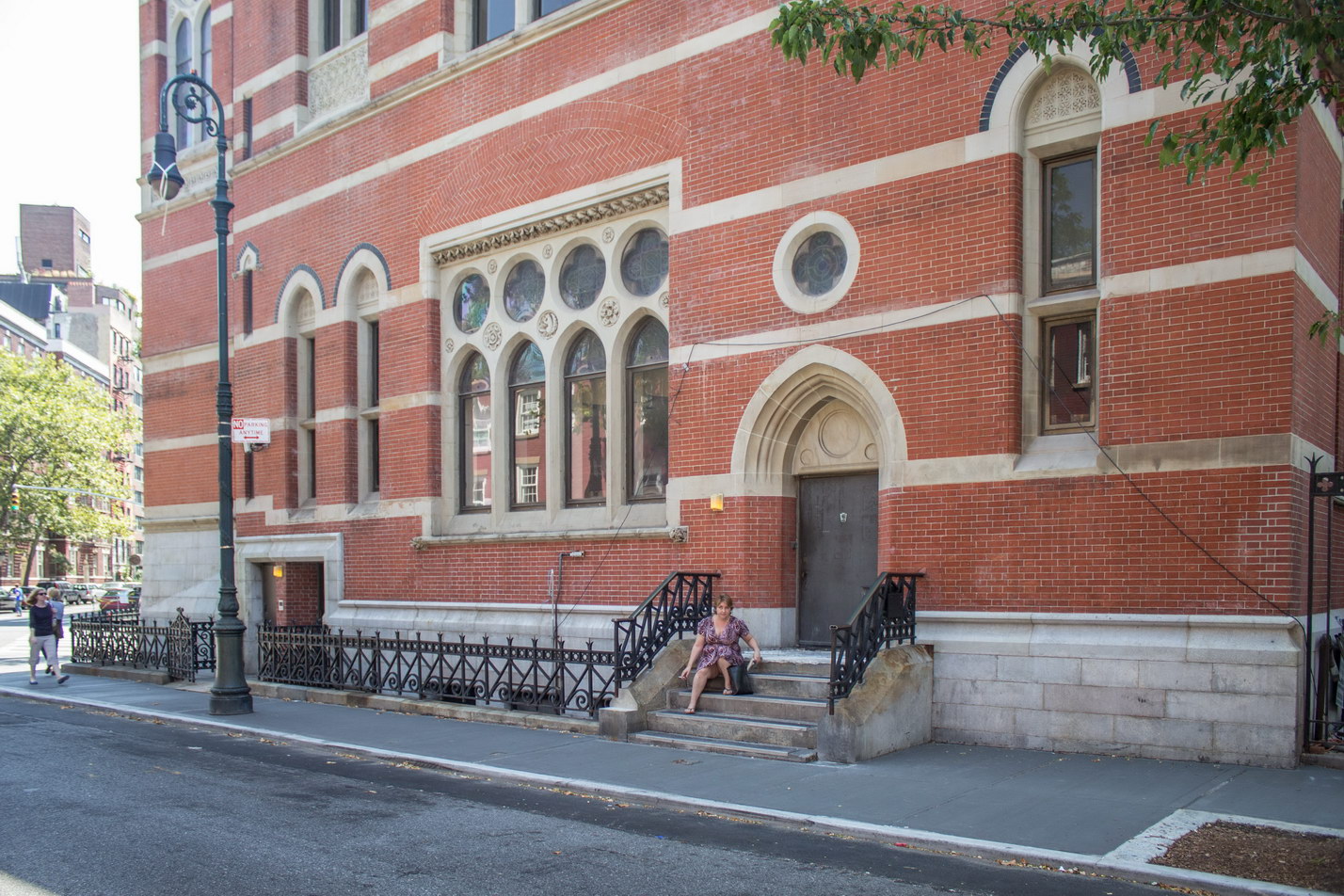
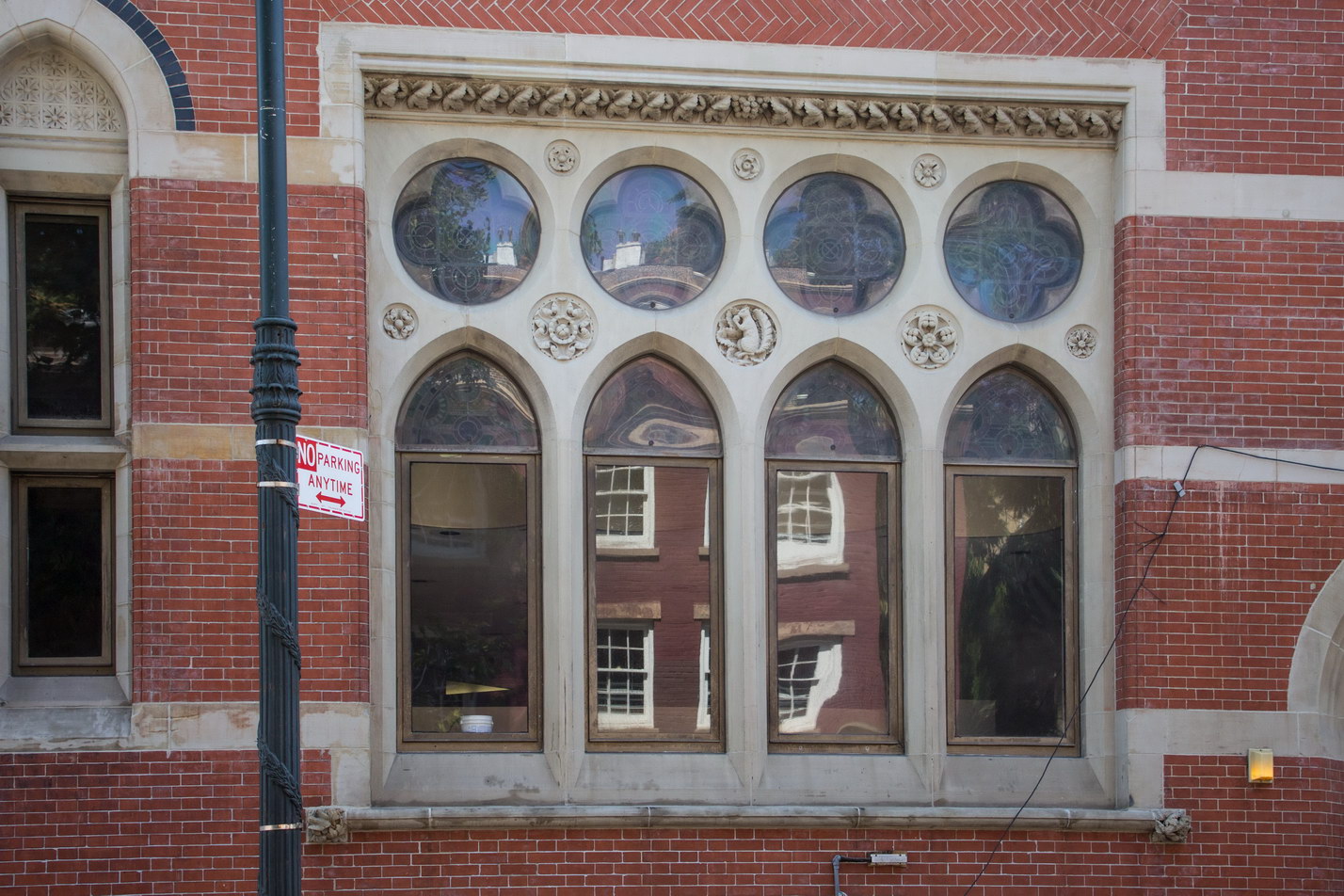
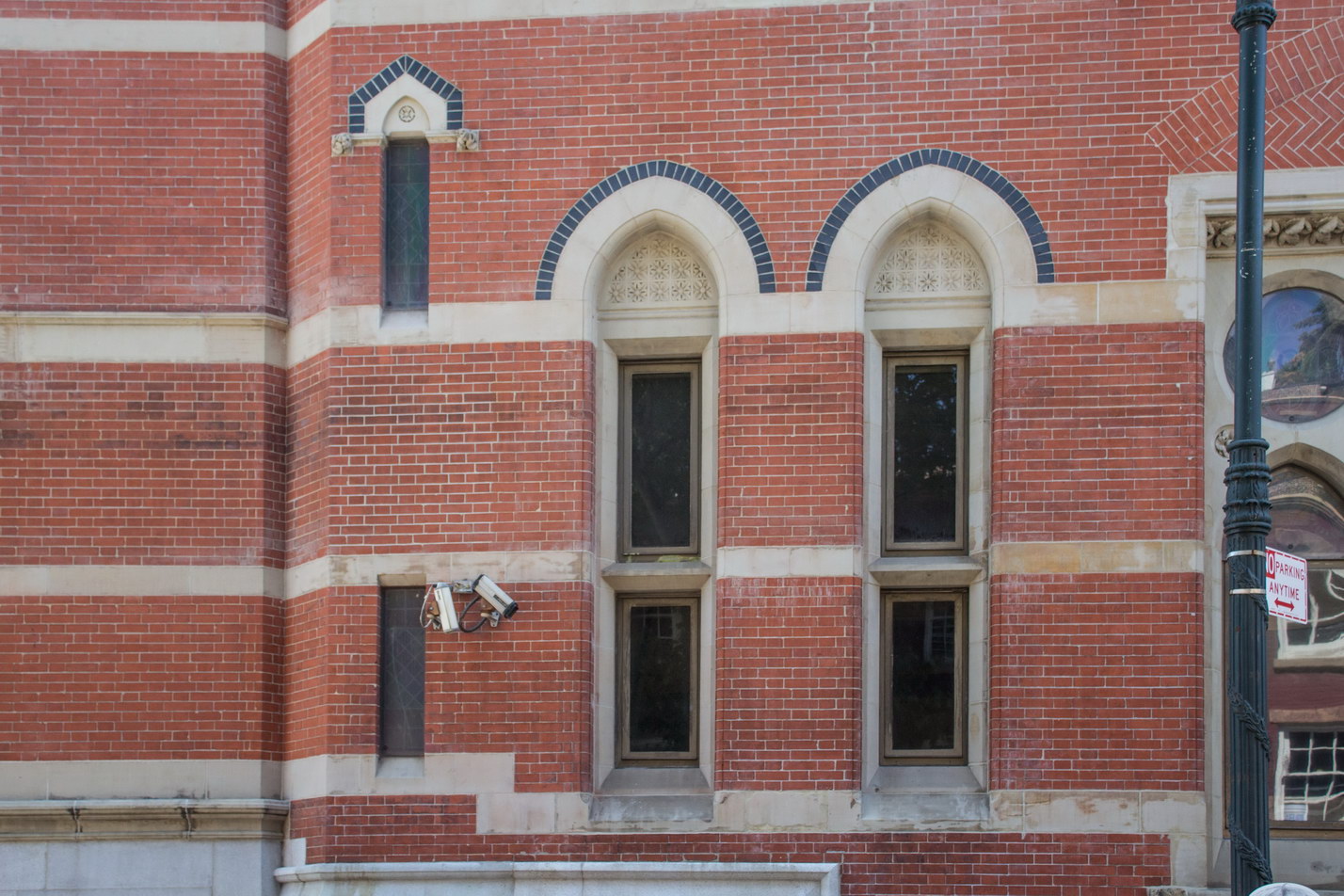
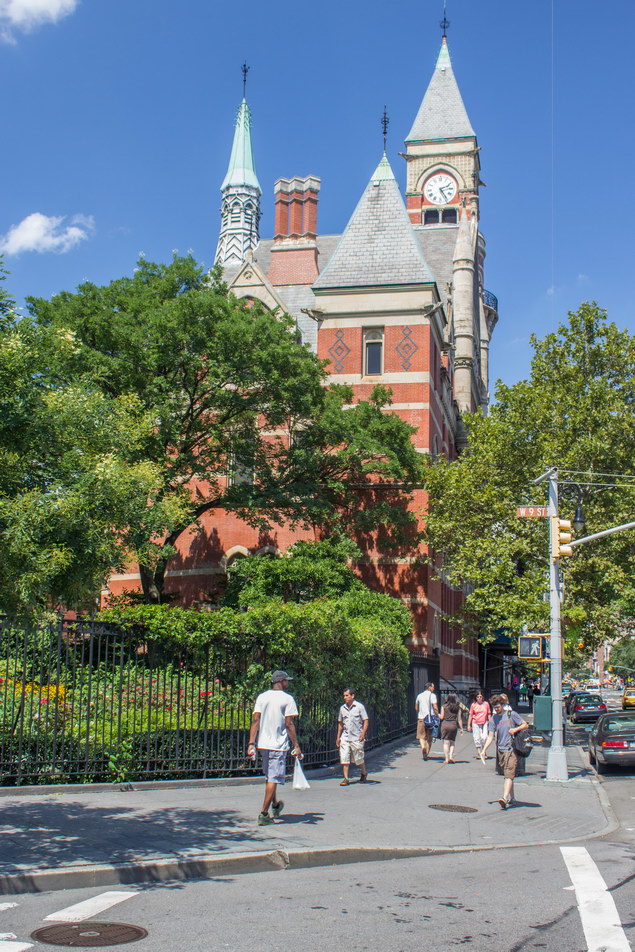
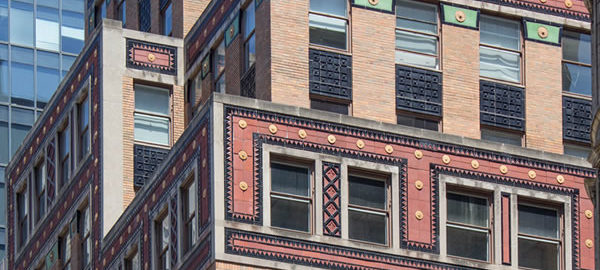
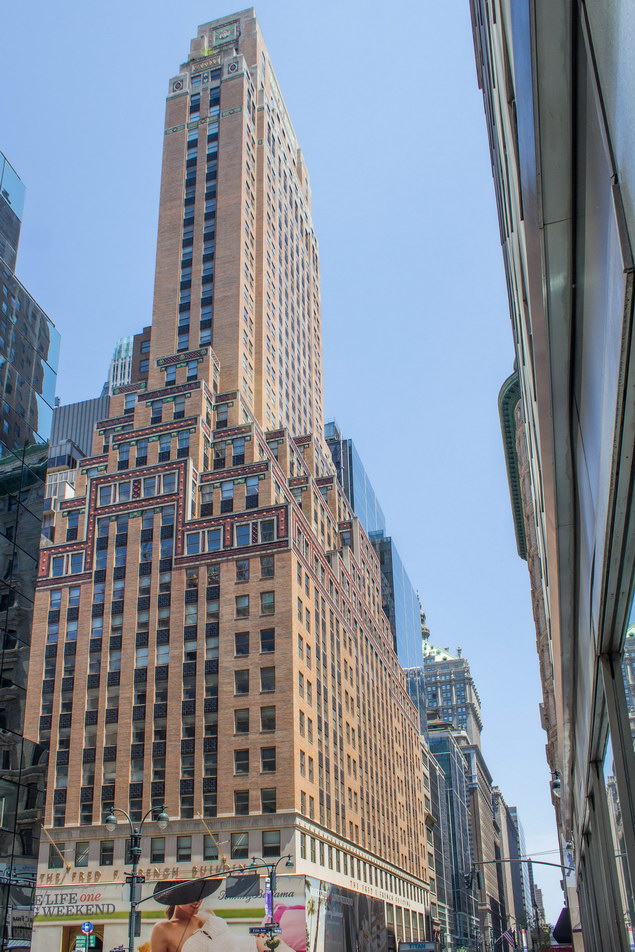
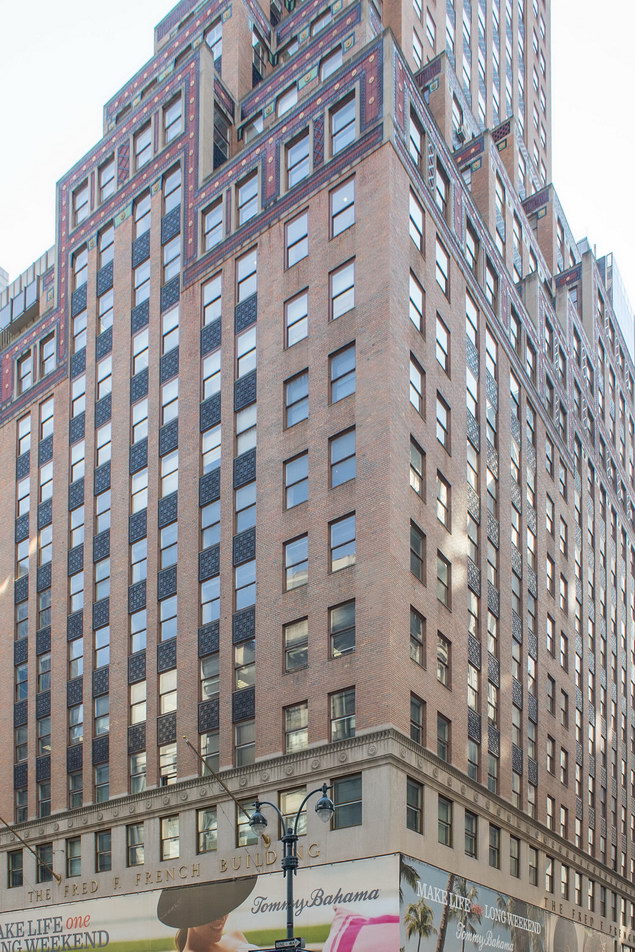
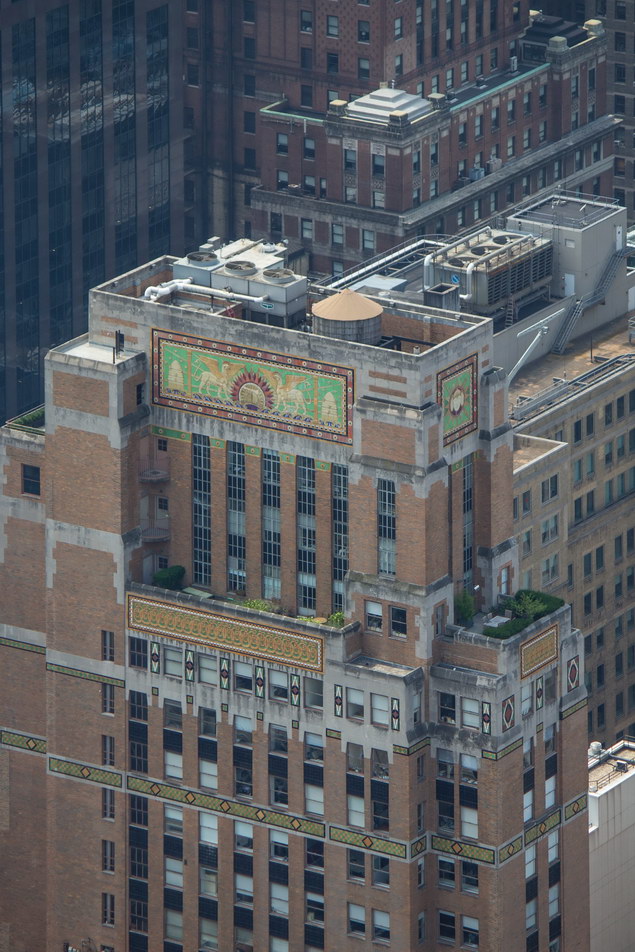
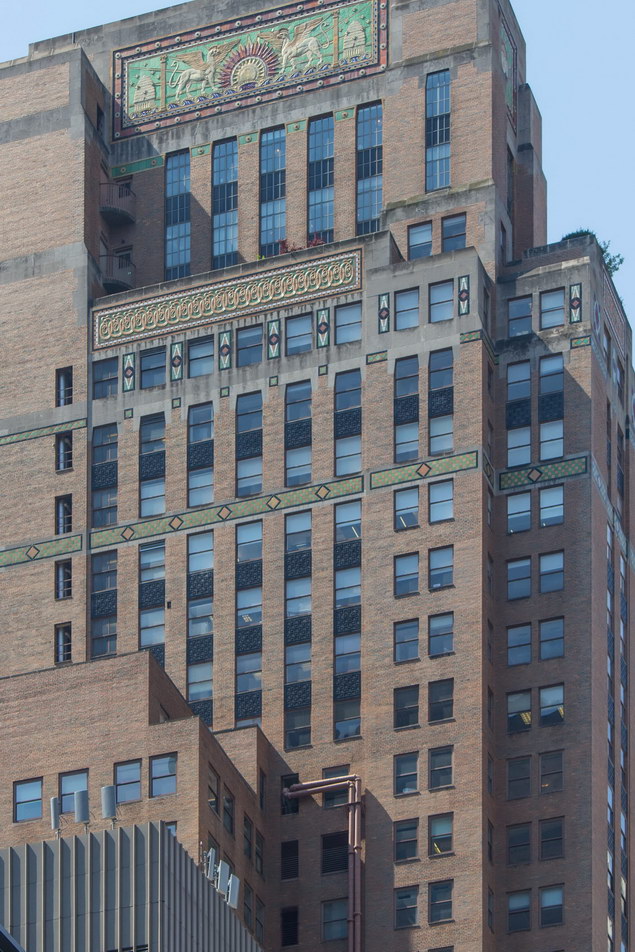
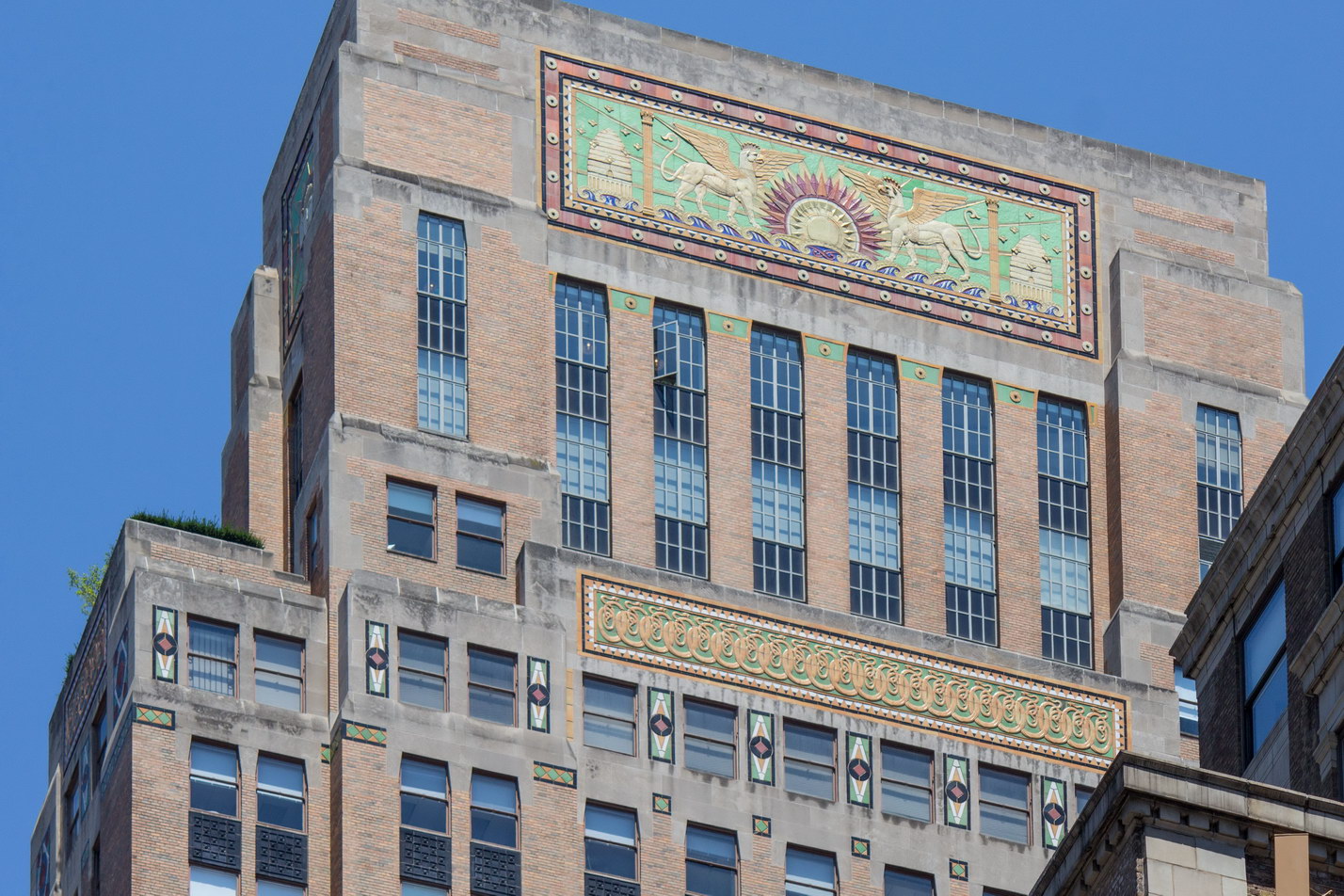
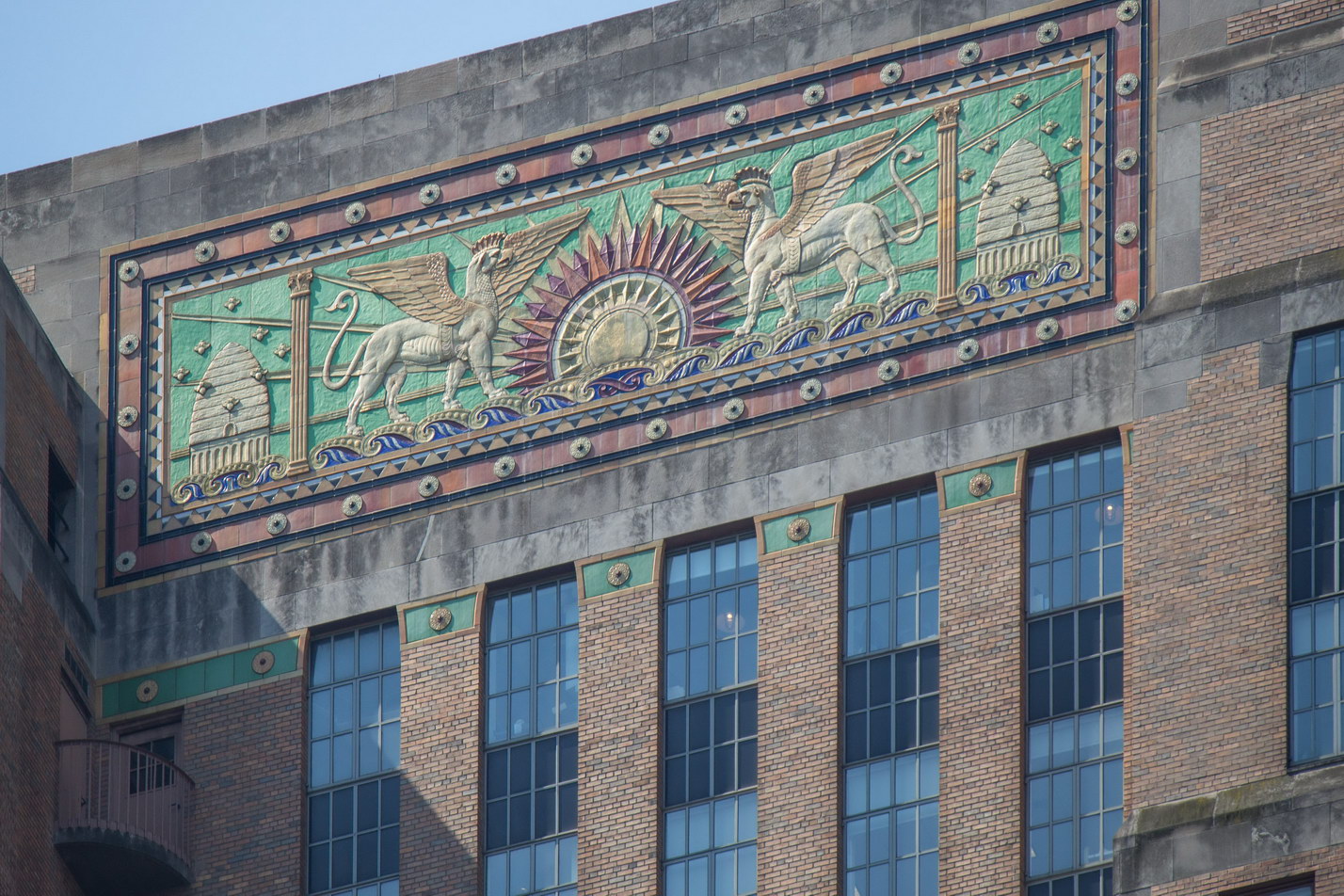
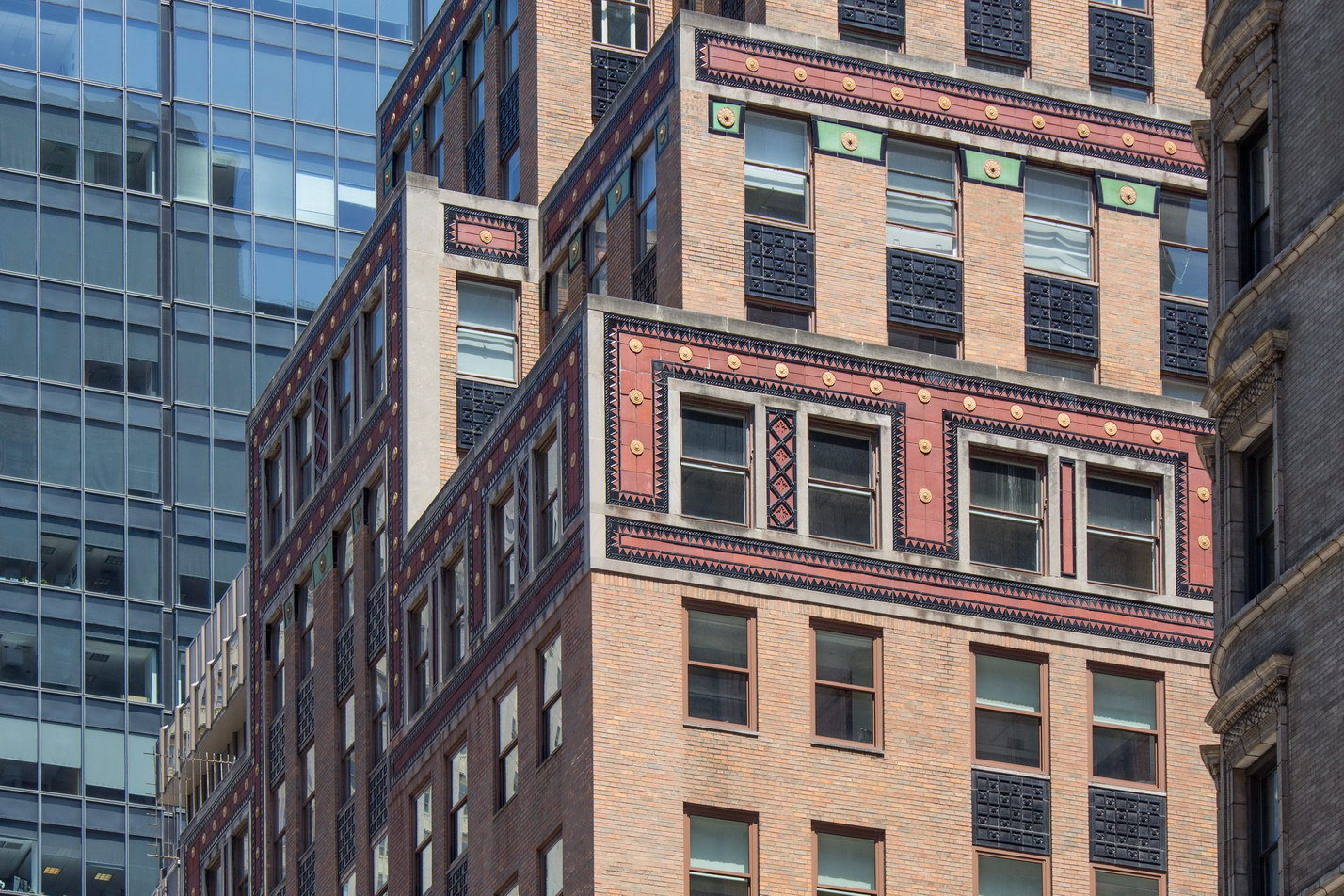
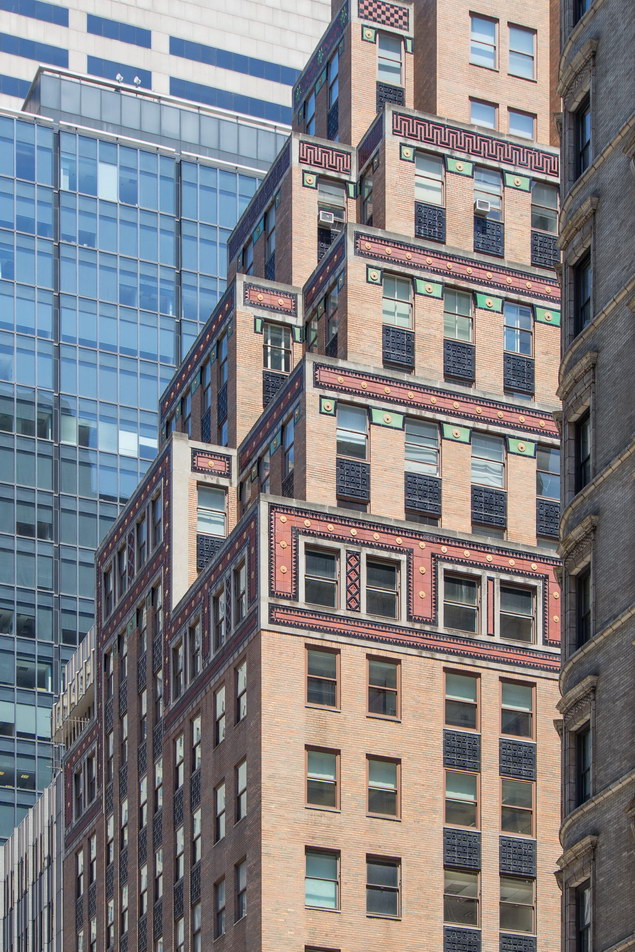
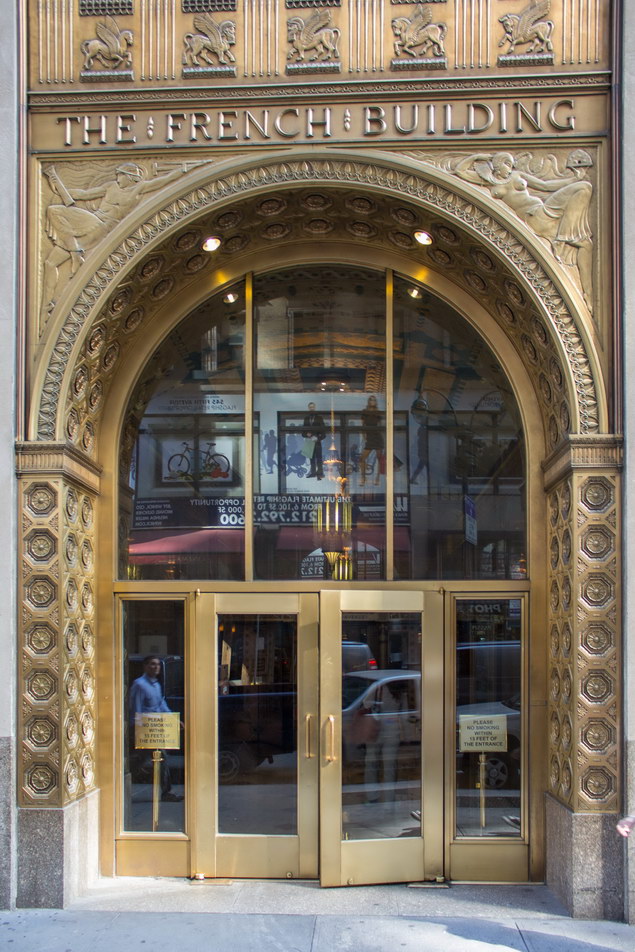
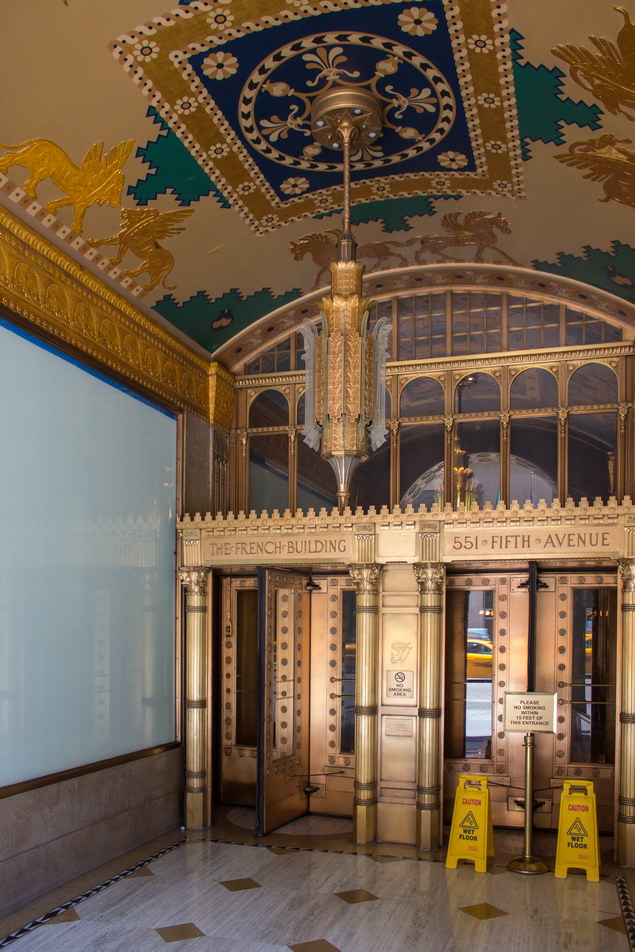
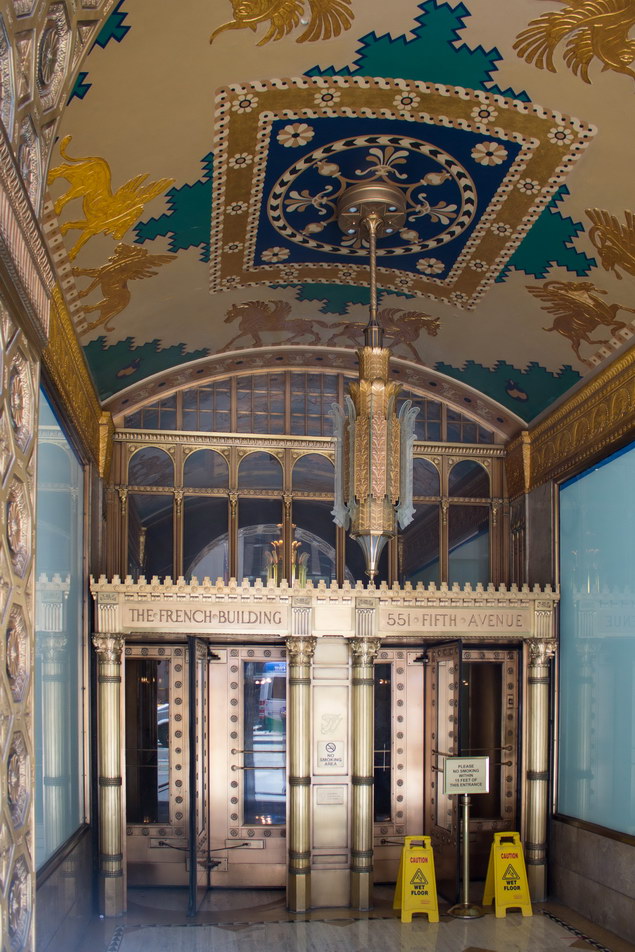
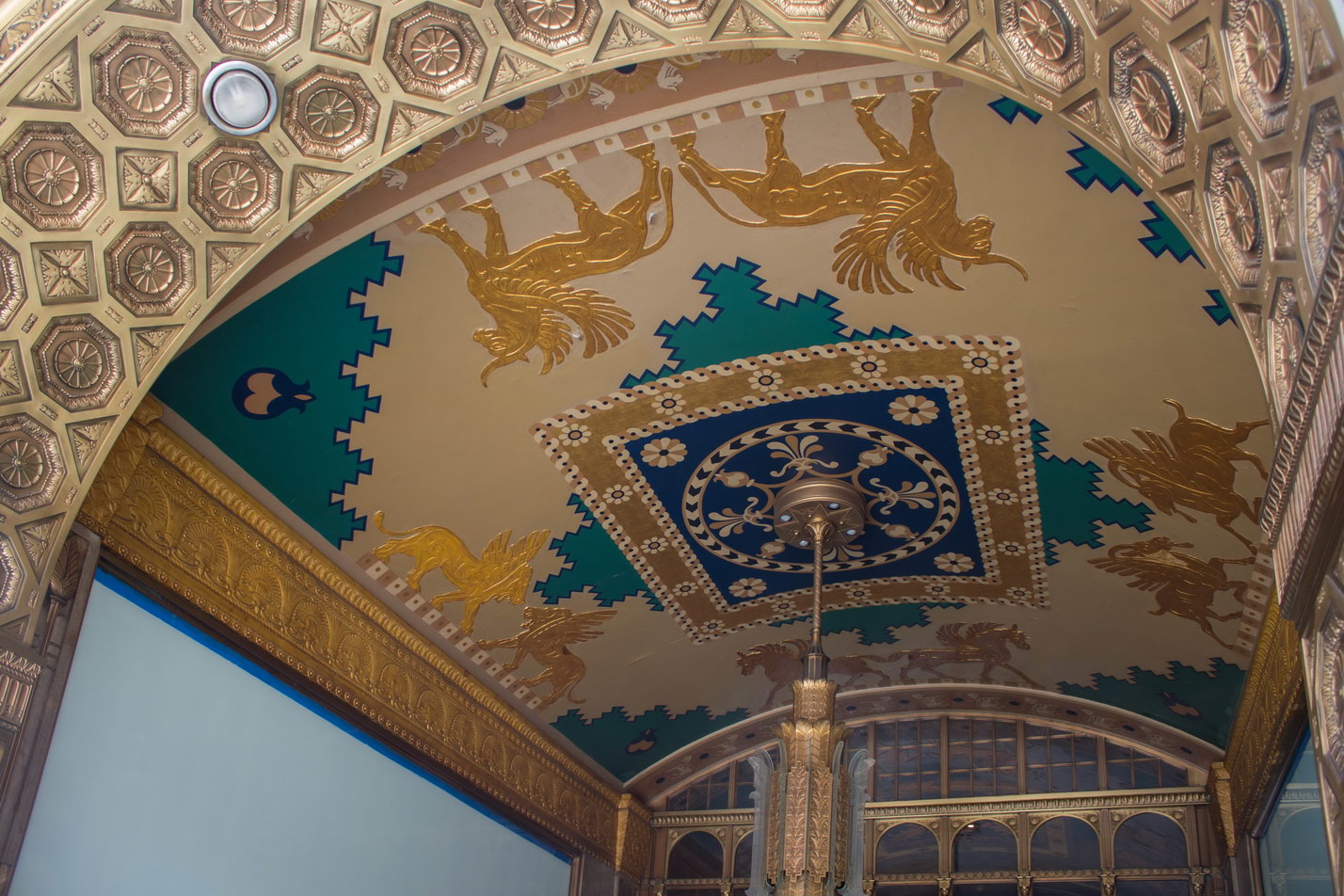
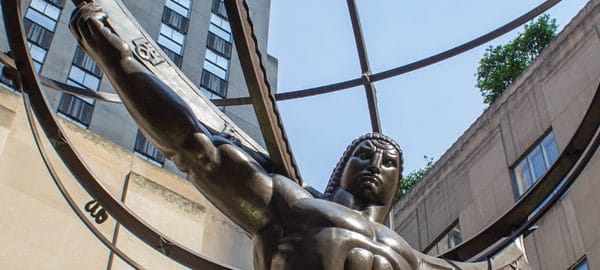
![[Fifth Avenue Swath] A00_4145 [6/20/2012 9:45:55 AM] [Fifth Avenue Swath] A00_4145 [6/20/2012 9:45:55 AM]](https://www.newyorkitecture.com/wp-content/gallery/fifth-avenue-swath/a00_4145_resize.jpg)
![[Fifth Avenue Swath] A00_4173 [6/20/2012 9:58:02 AM] [Fifth Avenue Swath] A00_4173 [6/20/2012 9:58:02 AM]](https://www.newyorkitecture.com/wp-content/gallery/fifth-avenue-swath/a00_4173_resize.jpg)
![[Fifth Avenue Swath] A00_4189 [6/20/2012 10:07:36 AM] [Fifth Avenue Swath] A00_4189 [6/20/2012 10:07:36 AM]](https://www.newyorkitecture.com/wp-content/gallery/fifth-avenue-swath/a00_4189_resize.jpg)
![[Fifth Avenue Swath] A00_5143 [7/7/2012 9:09:57 AM] [Fifth Avenue Swath] A00_5143 [7/7/2012 9:09:57 AM]](https://www.newyorkitecture.com/wp-content/gallery/fifth-avenue-swath/a00_5143_resize.jpg)
![[Fifth Avenue Swath] A00_5165 [7/7/2012 9:17:44 AM] [Fifth Avenue Swath] A00_5165 [7/7/2012 9:17:44 AM]](https://www.newyorkitecture.com/wp-content/gallery/fifth-avenue-swath/a00_5165_resize.jpg)
![[Fifth Avenue Swath] A00_5217 [7/7/2012 9:39:56 AM] [Fifth Avenue Swath] A00_5217 [7/7/2012 9:39:56 AM]](https://www.newyorkitecture.com/wp-content/gallery/fifth-avenue-swath/a00_5217_resize.jpg)
![[Fifth Avenue Swath] A00_5234 [7/7/2012 9:47:23 AM] [Fifth Avenue Swath] A00_5234 [7/7/2012 9:47:23 AM]](https://www.newyorkitecture.com/wp-content/gallery/fifth-avenue-swath/a00_5234_resize.jpg)
![[Fifth Avenue Swath] A00_5395 [7/7/2012 1:22:29 PM] [Fifth Avenue Swath] A00_5395 [7/7/2012 1:22:29 PM]](https://www.newyorkitecture.com/wp-content/gallery/fifth-avenue-swath/a00_5395_resize.jpg)
![[Fifth Avenue Swath] AB0_4183 [6/20/2012 10:02:37 AM] [Fifth Avenue Swath] AB0_4183 [6/20/2012 10:02:37 AM]](https://www.newyorkitecture.com/wp-content/gallery/fifth-avenue-swath/ab0_4183_resize.jpg)
![[Fifth Avenue Swath] AB0_5117 [7/7/2012 9:00:25 AM] [Fifth Avenue Swath] AB0_5117 [7/7/2012 9:00:25 AM]](https://www.newyorkitecture.com/wp-content/gallery/fifth-avenue-swath/ab0_5117_resize.jpg)
![[Fifth Avenue Swath] AB0_5203 [7/7/2012 9:32:36 AM] [Fifth Avenue Swath] AB0_5203 [7/7/2012 9:32:36 AM]](https://www.newyorkitecture.com/wp-content/gallery/fifth-avenue-swath/ab0_5203_resize.jpg)
![[Fifth Avenue Swath] AC00_4095 [6/20/2012 9:19:15 AM] [Fifth Avenue Swath] AC00_4095 [6/20/2012 9:19:15 AM]](https://www.newyorkitecture.com/wp-content/gallery/fifth-avenue-swath/ac00_4095_resize.jpg)
![[Fifth Avenue Swath] AC00_4098 [6/20/2012 9:19:44 AM] [Fifth Avenue Swath] AC00_4098 [6/20/2012 9:19:44 AM]](https://www.newyorkitecture.com/wp-content/gallery/fifth-avenue-swath/ac00_4098_resize.jpg)
![[Fifth Avenue Swath] AC00_4100 [6/20/2012 9:21:10 AM] [Fifth Avenue Swath] AC00_4100 [6/20/2012 9:21:10 AM]](https://www.newyorkitecture.com/wp-content/gallery/fifth-avenue-swath/ac00_4100_resize.jpg)
![[Fifth Avenue Swath] AC00_4109 [6/20/2012 9:25:14 AM] [Fifth Avenue Swath] AC00_4109 [6/20/2012 9:25:14 AM]](https://www.newyorkitecture.com/wp-content/gallery/fifth-avenue-swath/ac00_4109_resize.jpg)
![[Fifth Avenue Swath] AC00_4112 [6/20/2012 9:25:40 AM] [Fifth Avenue Swath] AC00_4112 [6/20/2012 9:25:40 AM]](https://www.newyorkitecture.com/wp-content/gallery/fifth-avenue-swath/ac00_4112_resize.jpg)
![[Fifth Avenue Swath] AC00_4114 [6/20/2012 9:27:33 AM] [Fifth Avenue Swath] AC00_4114 [6/20/2012 9:27:33 AM]](https://www.newyorkitecture.com/wp-content/gallery/fifth-avenue-swath/ac00_4114_resize.jpg)
![[Fifth Avenue Swath] AC00_4119 [6/20/2012 9:31:52 AM] [Fifth Avenue Swath] AC00_4119 [6/20/2012 9:31:52 AM]](https://www.newyorkitecture.com/wp-content/gallery/fifth-avenue-swath/ac00_4119_resize.jpg)
![[Fifth Avenue Swath] AC00_4123 [6/20/2012 9:34:35 AM] [Fifth Avenue Swath] AC00_4123 [6/20/2012 9:34:35 AM]](https://www.newyorkitecture.com/wp-content/gallery/fifth-avenue-swath/ac00_4123_resize.jpg)
![[Fifth Avenue Swath] AC00_4132 [6/20/2012 9:39:28 AM] [Fifth Avenue Swath] AC00_4132 [6/20/2012 9:39:28 AM]](https://www.newyorkitecture.com/wp-content/gallery/fifth-avenue-swath/ac00_4132_resize.jpg)
![[Fifth Avenue Swath] AC00_4138 [6/20/2012 9:42:17 AM] [Fifth Avenue Swath] AC00_4138 [6/20/2012 9:42:17 AM]](https://www.newyorkitecture.com/wp-content/gallery/fifth-avenue-swath/ac00_4138_resize.jpg)
![[Fifth Avenue Swath] AC00_4140 [6/20/2012 9:43:29 AM] [Fifth Avenue Swath] AC00_4140 [6/20/2012 9:43:29 AM]](https://www.newyorkitecture.com/wp-content/gallery/fifth-avenue-swath/ac00_4140_resize.jpg)
![[Fifth Avenue Swath] AC00_4186 [6/20/2012 10:05:34 AM] [Fifth Avenue Swath] AC00_4186 [6/20/2012 10:05:34 AM]](https://www.newyorkitecture.com/wp-content/gallery/fifth-avenue-swath/ac00_4186_resize.jpg)
![[Fifth Avenue Swath] AC00_4187 [6/20/2012 10:05:53 AM] [Fifth Avenue Swath] AC00_4187 [6/20/2012 10:05:53 AM]](https://www.newyorkitecture.com/wp-content/gallery/fifth-avenue-swath/ac00_4187_resize.jpg)
![[Fifth Avenue Swath] AC00_5146 [7/7/2012 9:11:18 AM] [Fifth Avenue Swath] AC00_5146 [7/7/2012 9:11:18 AM]](https://www.newyorkitecture.com/wp-content/gallery/fifth-avenue-swath/ac00_5146_resize.jpg)
![[Fifth Avenue Swath] AC00_5148 [7/7/2012 9:12:31 AM] [Fifth Avenue Swath] AC00_5148 [7/7/2012 9:12:31 AM]](https://www.newyorkitecture.com/wp-content/gallery/fifth-avenue-swath/ac00_5148_resize.jpg)
![[Fifth Avenue Swath] AC00_5171 [7/7/2012 9:20:13 AM] [Fifth Avenue Swath] AC00_5171 [7/7/2012 9:20:13 AM]](https://www.newyorkitecture.com/wp-content/gallery/fifth-avenue-swath/ac00_5171_resize.jpg)
![[Fifth Avenue Swath] AC00_5199 [7/7/2012 9:31:26 AM] [Fifth Avenue Swath] AC00_5199 [7/7/2012 9:31:26 AM]](https://www.newyorkitecture.com/wp-content/gallery/fifth-avenue-swath/ac00_5199_resize.jpg)
![[Fifth Avenue Swath] AC00_5214 [7/7/2012 9:38:17 AM] [Fifth Avenue Swath] AC00_5214 [7/7/2012 9:38:17 AM]](https://www.newyorkitecture.com/wp-content/gallery/fifth-avenue-swath/ac00_5214_resize.jpg)
![[Fifth Avenue Swath] AC00_5222 [7/7/2012 9:41:57 AM] [Fifth Avenue Swath] AC00_5222 [7/7/2012 9:41:57 AM]](https://www.newyorkitecture.com/wp-content/gallery/fifth-avenue-swath/ac00_5222_resize.jpg)
![[Fifth Avenue Swath] AC00_5433 [7/8/2012 12:46:03 PM] [Fifth Avenue Swath] AC00_5433 [7/8/2012 12:46:03 PM]](https://www.newyorkitecture.com/wp-content/gallery/fifth-avenue-swath/ac00_5433_resize.jpg)
![[Fifth Avenue Swath] AZ0_3944 [6/20/2012 7:49:55 AM] [Fifth Avenue Swath] AZ0_3944 [6/20/2012 7:49:55 AM]](https://www.newyorkitecture.com/wp-content/gallery/fifth-avenue-swath/az0_3944_resize.jpg)
![[Fifth Avenue Swath] AZ0_3950 [6/20/2012 7:52:22 AM] [Fifth Avenue Swath] AZ0_3950 [6/20/2012 7:52:22 AM]](https://www.newyorkitecture.com/wp-content/gallery/fifth-avenue-swath/az0_3950_resize.jpg)
![[Fifth Avenue Swath] AZ0_3957 [6/20/2012 7:57:33 AM] [Fifth Avenue Swath] AZ0_3957 [6/20/2012 7:57:33 AM]](https://www.newyorkitecture.com/wp-content/gallery/fifth-avenue-swath/az0_3957_resize.jpg)
![[Fifth Avenue Swath] AZ0_3964 [6/20/2012 8:01:02 AM] [Fifth Avenue Swath] AZ0_3964 [6/20/2012 8:01:02 AM]](https://www.newyorkitecture.com/wp-content/gallery/fifth-avenue-swath/az0_3964_resize.jpg)
![[Fifth Avenue Swath] AZ0_3968 [6/20/2012 8:02:38 AM] [Fifth Avenue Swath] AZ0_3968 [6/20/2012 8:02:38 AM]](https://www.newyorkitecture.com/wp-content/gallery/fifth-avenue-swath/az0_3968_resize.jpg)
![[Fifth Avenue Swath] AZ0_3970 [6/20/2012 8:04:16 AM] [Fifth Avenue Swath] AZ0_3970 [6/20/2012 8:04:16 AM]](https://www.newyorkitecture.com/wp-content/gallery/fifth-avenue-swath/az0_3970_resize.jpg)

![[Fifth Avenue Swath] B01_5550 [7/8/2012 2:04:14 PM] [Fifth Avenue Swath] B01_5550 [7/8/2012 2:04:14 PM]](https://www.newyorkitecture.com/wp-content/gallery/fifth-avenue-swath/b01_5550_resize.jpg)
![[Fifth Avenue Swath] B02_5520 [7/8/2012 1:42:37 PM] [Fifth Avenue Swath] B02_5520 [7/8/2012 1:42:37 PM]](https://www.newyorkitecture.com/wp-content/gallery/fifth-avenue-swath/b02_5520_resize.jpg)
![[Fifth Avenue Swath] B03_5525 [7/8/2012 1:44:46 PM] [Fifth Avenue Swath] B03_5525 [7/8/2012 1:44:46 PM]](https://www.newyorkitecture.com/wp-content/gallery/fifth-avenue-swath/b03_5525_resize.jpg)
![[Fifth Avenue Swath] B04_4372 [6/21/2012 9:10:10 AM] [Fifth Avenue Swath] B04_4372 [6/21/2012 9:10:10 AM]](https://www.newyorkitecture.com/wp-content/gallery/fifth-avenue-swath/b04_4372_resize.jpg)
![[Fifth Avenue Swath] B05_5539 [7/8/2012 1:56:39 PM] [Fifth Avenue Swath] B05_5539 [7/8/2012 1:56:39 PM]](https://www.newyorkitecture.com/wp-content/gallery/fifth-avenue-swath/b05_5539_resize.jpg)
![[Fifth Avenue Swath] C01_3050 [6/11/2012 9:30:07 AM] [Fifth Avenue Swath] C01_3050 [6/11/2012 9:30:07 AM]](https://www.newyorkitecture.com/wp-content/gallery/fifth-avenue-swath/c01_3050_resize.jpg)
![[Fifth Avenue Swath] C02_4460 [6/21/2012 10:05:33 AM] [Fifth Avenue Swath] C02_4460 [6/21/2012 10:05:33 AM]](https://www.newyorkitecture.com/wp-content/gallery/fifth-avenue-swath/c02_4460_resize.jpg)
![[Fifth Avenue Swath] C03_4791 [7/3/2012 11:34:29 AM] [Fifth Avenue Swath] C03_4791 [7/3/2012 11:34:29 AM]](https://www.newyorkitecture.com/wp-content/gallery/fifth-avenue-swath/c03_4791_resize.jpg)
![[Fifth Avenue Swath] D01_4713 [7/3/2012 10:47:42 AM] [Fifth Avenue Swath] D01_4713 [7/3/2012 10:47:42 AM]](https://www.newyorkitecture.com/wp-content/gallery/fifth-avenue-swath/d01_4713_resize.jpg)
![[Fifth Avenue Swath] D02_4725 [7/3/2012 10:53:31 AM] [Fifth Avenue Swath] D02_4725 [7/3/2012 10:53:31 AM]](https://www.newyorkitecture.com/wp-content/gallery/fifth-avenue-swath/d02_4725_resize.jpg)
![[Fifth Avenue Swath] D03_4701 [7/3/2012 10:39:35 AM] [Fifth Avenue Swath] D03_4701 [7/3/2012 10:39:35 AM]](https://www.newyorkitecture.com/wp-content/gallery/fifth-avenue-swath/d03_4701_resize.jpg)
![[Fifth Avenue Swath] D04_4707 [7/3/2012 10:46:22 AM] [Fifth Avenue Swath] D04_4707 [7/3/2012 10:46:22 AM]](https://www.newyorkitecture.com/wp-content/gallery/fifth-avenue-swath/d04_4707_resize.jpg)
![[Fifth Avenue Swath] E00_3020 [6/11/2012 9:17:00 AM] [Fifth Avenue Swath] E00_3020 [6/11/2012 9:17:00 AM]](https://www.newyorkitecture.com/wp-content/gallery/fifth-avenue-swath/e00_3020_resize.jpg)
![[Fifth Avenue Swath] E00_3235 [6/11/2012 10:54:15 AM] [Fifth Avenue Swath] E00_3235 [6/11/2012 10:54:15 AM]](https://www.newyorkitecture.com/wp-content/gallery/fifth-avenue-swath/e00_3235_resize.jpg)
![[Fifth Avenue Swath] E00_4459 [6/21/2012 10:02:26 AM] [Fifth Avenue Swath] E00_4459 [6/21/2012 10:02:26 AM]](https://www.newyorkitecture.com/wp-content/gallery/fifth-avenue-swath/e00_4459_resize.jpg)
![[Fifth Avenue Swath] E00_4705 [7/3/2012 10:44:05 AM] [Fifth Avenue Swath] E00_4705 [7/3/2012 10:44:05 AM]](https://www.newyorkitecture.com/wp-content/gallery/fifth-avenue-swath/e00_4705_resize.jpg)
![[Fifth Avenue Swath] F00_3036 [6/11/2012 9:23:58 AM] [Fifth Avenue Swath] F00_3036 [6/11/2012 9:23:58 AM]](https://www.newyorkitecture.com/wp-content/gallery/fifth-avenue-swath/f00_3036_resize.jpg)
![[Fifth Avenue Swath] F00_3040 [6/11/2012 9:25:14 AM] [Fifth Avenue Swath] F00_3040 [6/11/2012 9:25:14 AM]](https://www.newyorkitecture.com/wp-content/gallery/fifth-avenue-swath/f00_3040_resize.jpg)
![[Fifth Avenue Swath] F00_3080 [6/11/2012 9:40:47 AM] [Fifth Avenue Swath] F00_3080 [6/11/2012 9:40:47 AM]](https://www.newyorkitecture.com/wp-content/gallery/fifth-avenue-swath/f00_3080_resize.jpg)
![[Fifth Avenue Swath] G00_3000 [6/11/2012 9:04:16 AM] [Fifth Avenue Swath] G00_3000 [6/11/2012 9:04:16 AM]](https://www.newyorkitecture.com/wp-content/gallery/fifth-avenue-swath/g00_3000_resize.jpg)
![[Fifth Avenue Swath] G00_3307 [6/11/2012 11:15:08 AM] [Fifth Avenue Swath] G00_3307 [6/11/2012 11:15:08 AM]](https://www.newyorkitecture.com/wp-content/gallery/fifth-avenue-swath/g00_3307_resize.jpg)
![[Fifth Avenue Swath] G00_3330 [6/11/2012 11:18:49 AM] [Fifth Avenue Swath] G00_3330 [6/11/2012 11:18:49 AM]](https://www.newyorkitecture.com/wp-content/gallery/fifth-avenue-swath/g00_3330_resize.jpg)
![[Fifth Avenue Swath] G00_3756 [6/15/2012 10:36:52 AM] [Fifth Avenue Swath] G00_3756 [6/15/2012 10:36:52 AM]](https://www.newyorkitecture.com/wp-content/gallery/fifth-avenue-swath/g00_3756_resize.jpg)
![[Fifth Avenue Swath] G00_3787 [6/15/2012 10:47:15 AM] [Fifth Avenue Swath] G00_3787 [6/15/2012 10:47:15 AM]](https://www.newyorkitecture.com/wp-content/gallery/fifth-avenue-swath/g00_3787_resize.jpg)
![[Fifth Avenue Swath] G00_4278 [6/21/2012 8:26:01 AM] [Fifth Avenue Swath] G00_4278 [6/21/2012 8:26:01 AM]](https://www.newyorkitecture.com/wp-content/gallery/fifth-avenue-swath/g00_4278_resize.jpg)
![[Fifth Avenue Swath] G00_4285 [6/21/2012 8:27:01 AM] [Fifth Avenue Swath] G00_4285 [6/21/2012 8:27:01 AM]](https://www.newyorkitecture.com/wp-content/gallery/fifth-avenue-swath/g00_4285_resize.jpg)
![[Fifth Avenue Swath] H10_3318 [6/11/2012 11:16:54 AM] [Fifth Avenue Swath] H10_3318 [6/11/2012 11:16:54 AM]](https://www.newyorkitecture.com/wp-content/gallery/fifth-avenue-swath/h10_3318_resize.jpg)
![[Fifth Avenue Swath] H10_3614 [6/15/2012 9:30:32 AM] [Fifth Avenue Swath] H10_3614 [6/15/2012 9:30:32 AM]](https://www.newyorkitecture.com/wp-content/gallery/fifth-avenue-swath/h10_3614_resize.jpg)
![[Fifth Avenue Swath] H20_3622 [6/15/2012 9:35:25 AM] [Fifth Avenue Swath] H20_3622 [6/15/2012 9:35:25 AM]](https://www.newyorkitecture.com/wp-content/gallery/fifth-avenue-swath/h20_3622_resize.jpg)
![[Fifth Avenue Swath] H20_4471 [6/21/2012 10:10:27 AM] [Fifth Avenue Swath] H20_4471 [6/21/2012 10:10:27 AM]](https://www.newyorkitecture.com/wp-content/gallery/fifth-avenue-swath/h20_4471_resize.jpg)
![[Fifth Avenue Swath] H30_4336 [6/21/2012 8:53:11 AM] [Fifth Avenue Swath] H30_4336 [6/21/2012 8:53:11 AM]](https://www.newyorkitecture.com/wp-content/gallery/fifth-avenue-swath/h30_4336_resize.jpg)
![[Fifth Avenue Swath] H30_4340 [6/21/2012 8:56:10 AM] [Fifth Avenue Swath] H30_4340 [6/21/2012 8:56:10 AM]](https://www.newyorkitecture.com/wp-content/gallery/fifth-avenue-swath/h30_4340_resize.jpg)
![[Fifth Avenue Swath] H40_4027 [6/20/2012 8:37:34 AM] [Fifth Avenue Swath] H40_4027 [6/20/2012 8:37:34 AM]](https://www.newyorkitecture.com/wp-content/gallery/fifth-avenue-swath/h40_4027_resize.jpg)
![[Fifth Avenue Swath] H40_4029 [6/20/2012 8:39:29 AM] [Fifth Avenue Swath] H40_4029 [6/20/2012 8:39:29 AM]](https://www.newyorkitecture.com/wp-content/gallery/fifth-avenue-swath/h40_4029_resize.jpg)
![[Fifth Avenue Swath] H40_4041 [6/20/2012 8:43:15 AM] [Fifth Avenue Swath] H40_4041 [6/20/2012 8:43:15 AM]](https://www.newyorkitecture.com/wp-content/gallery/fifth-avenue-swath/h40_4041_resize.jpg)
![[Fifth Avenue Swath] H40_4049 [6/20/2012 8:47:28 AM] [Fifth Avenue Swath] H40_4049 [6/20/2012 8:47:28 AM]](https://www.newyorkitecture.com/wp-content/gallery/fifth-avenue-swath/h40_4049_resize.jpg)
![[Fifth Avenue Swath] H50_3726 [6/15/2012 10:18:07 AM] [Fifth Avenue Swath] H50_3726 [6/15/2012 10:18:07 AM]](https://www.newyorkitecture.com/wp-content/gallery/fifth-avenue-swath/h50_3726_resize.jpg)
![[Fifth Avenue Swath] H60_3647 [6/15/2012 9:49:25 AM] [Fifth Avenue Swath] H60_3647 [6/15/2012 9:49:25 AM]](https://www.newyorkitecture.com/wp-content/gallery/fifth-avenue-swath/h60_3647_resize.jpg)
![[Fifth Avenue Swath] H70_4348 [6/21/2012 8:58:49 AM] [Fifth Avenue Swath] H70_4348 [6/21/2012 8:58:49 AM]](https://www.newyorkitecture.com/wp-content/gallery/fifth-avenue-swath/h70_4348_resize.jpg)
![[Fifth Avenue Swath] H70_4352 [6/21/2012 9:00:47 AM] [Fifth Avenue Swath] H70_4352 [6/21/2012 9:00:47 AM]](https://www.newyorkitecture.com/wp-content/gallery/fifth-avenue-swath/h70_4352_resize.jpg)
![[Fifth Avenue Swath] H80_4444 [6/21/2012 9:49:01 AM] [Fifth Avenue Swath] H80_4444 [6/21/2012 9:49:01 AM]](https://www.newyorkitecture.com/wp-content/gallery/fifth-avenue-swath/h80_4444_resize.jpg)
![[Fifth Avenue Swath] H90_3145 [6/11/2012 10:17:59 AM] [Fifth Avenue Swath] H90_3145 [6/11/2012 10:17:59 AM]](https://www.newyorkitecture.com/wp-content/gallery/fifth-avenue-swath/h90_3145_resize.jpg)
![[Fifth Avenue Swath] H90_3151 [6/11/2012 10:21:34 AM] [Fifth Avenue Swath] H90_3151 [6/11/2012 10:21:34 AM]](https://www.newyorkitecture.com/wp-content/gallery/fifth-avenue-swath/h90_3151_resize.jpg)
![[Fifth Avenue Swath] H90_3170 [6/11/2012 10:30:59 AM] [Fifth Avenue Swath] H90_3170 [6/11/2012 10:30:59 AM]](https://www.newyorkitecture.com/wp-content/gallery/fifth-avenue-swath/h90_3170_resize.jpg)
![[Fifth Avenue Swath] H90_3535 [6/15/2012 8:40:43 AM] [Fifth Avenue Swath] H90_3535 [6/15/2012 8:40:43 AM]](https://www.newyorkitecture.com/wp-content/gallery/fifth-avenue-swath/h90_3535_resize.jpg)
![[Fifth Avenue Swath] H90_3536 [6/15/2012 8:41:10 AM] [Fifth Avenue Swath] H90_3536 [6/15/2012 8:41:10 AM]](https://www.newyorkitecture.com/wp-content/gallery/fifth-avenue-swath/h90_3536_resize.jpg)

![[Fifth Avenue Swath] I00_3156 [6/11/2012 10:27:03 AM] [Fifth Avenue Swath] I00_3156 [6/11/2012 10:27:03 AM]](https://www.newyorkitecture.com/wp-content/gallery/fifth-avenue-swath/i00_3156_resize.jpg)
![[Fifth Avenue Swath] I00_3163 [6/11/2012 10:29:24 AM] [Fifth Avenue Swath] I00_3163 [6/11/2012 10:29:24 AM]](https://www.newyorkitecture.com/wp-content/gallery/fifth-avenue-swath/i00_3163_resize.jpg)
![[Fifth Avenue Swath] I00_3166 [6/11/2012 10:30:29 AM] [Fifth Avenue Swath] I00_3166 [6/11/2012 10:30:29 AM]](https://www.newyorkitecture.com/wp-content/gallery/fifth-avenue-swath/i00_3166_resize.jpg)
![[Fifth Avenue Swath] I00_3816 [6/15/2012 11:01:08 AM] [Fifth Avenue Swath] I00_3816 [6/15/2012 11:01:08 AM]](https://www.newyorkitecture.com/wp-content/gallery/fifth-avenue-swath/i00_3816_resize.jpg)
![[Sherry Netherland] IMG_4460 [6/21/2012 10:05:33 AM] [Sherry Netherland] IMG_4460 [6/21/2012 10:05:33 AM]](https://www.newyorkitecture.com/wp-content/gallery/fifth-avenue-swath/IMG_4460_resize.jpg)
![[Sherry Netherland] IMG_4668 [7/3/2012 10:20:41 AM] [Sherry Netherland] IMG_4668 [7/3/2012 10:20:41 AM]](https://www.newyorkitecture.com/wp-content/gallery/fifth-avenue-swath/IMG_4668_resize1.jpg)
![[Fifth Avenue Swath] J00_3281 [6/11/2012 11:08:19 AM] [Fifth Avenue Swath] J00_3281 [6/11/2012 11:08:19 AM]](https://www.newyorkitecture.com/wp-content/gallery/fifth-avenue-swath/j00_3281_resize.jpg)
![[Fifth Avenue Swath] J00_4455 [6/21/2012 10:01:05 AM] [Fifth Avenue Swath] J00_4455 [6/21/2012 10:01:05 AM]](https://www.newyorkitecture.com/wp-content/gallery/fifth-avenue-swath/j00_4455_resize.jpg)
![[Fifth Avenue Swath] J00_4764 [7/3/2012 11:24:27 AM] [Fifth Avenue Swath] J00_4764 [7/3/2012 11:24:27 AM]](https://www.newyorkitecture.com/wp-content/gallery/fifth-avenue-swath/j00_4764_resize.jpg)
![[Fifth Avenue Swath] J00_5290 [7/7/2012 10:56:30 AM] [Fifth Avenue Swath] J00_5290 [7/7/2012 10:56:30 AM]](https://www.newyorkitecture.com/wp-content/gallery/fifth-avenue-swath/j00_5290_resize.jpg)
![[Fifth Avenue Swath] K00_3140 [6/11/2012 10:16:59 AM] [Fifth Avenue Swath] K00_3140 [6/11/2012 10:16:59 AM]](https://www.newyorkitecture.com/wp-content/gallery/fifth-avenue-swath/k00_3140_resize.jpg)
![[Fifth Avenue Swath] K00_3291 [6/11/2012 11:11:14 AM] [Fifth Avenue Swath] K00_3291 [6/11/2012 11:11:14 AM]](https://www.newyorkitecture.com/wp-content/gallery/fifth-avenue-swath/k00_3291_resize.jpg)
![[Fifth Avenue Swath] K00_3806 [6/15/2012 10:56:18 AM] [Fifth Avenue Swath] K00_3806 [6/15/2012 10:56:18 AM]](https://www.newyorkitecture.com/wp-content/gallery/fifth-avenue-swath/k00_3806_resize.jpg)
![[Fifth Avenue Swath] K00_3841 [6/15/2012 11:14:10 AM] [Fifth Avenue Swath] K00_3841 [6/15/2012 11:14:10 AM]](https://www.newyorkitecture.com/wp-content/gallery/fifth-avenue-swath/k00_3841_resize.jpg)
![[Fifth Avenue Swath] K00_4463 [6/21/2012 10:06:00 AM] [Fifth Avenue Swath] K00_4463 [6/21/2012 10:06:00 AM]](https://www.newyorkitecture.com/wp-content/gallery/fifth-avenue-swath/k00_4463_resize.jpg)
![[Fifth Avenue Swath] L00_3351 [6/11/2012 11:26:28 AM] [Fifth Avenue Swath] L00_3351 [6/11/2012 11:26:28 AM]](https://www.newyorkitecture.com/wp-content/gallery/fifth-avenue-swath/l00_3351_resize.jpg)
![[Fifth Avenue Swath] L00_3546 [6/15/2012 8:53:16 AM] [Fifth Avenue Swath] L00_3546 [6/15/2012 8:53:16 AM]](https://www.newyorkitecture.com/wp-content/gallery/fifth-avenue-swath/l00_3546_resize.jpg)
![[Fifth Avenue Swath] L00_3625 [6/15/2012 9:37:53 AM] [Fifth Avenue Swath] L00_3625 [6/15/2012 9:37:53 AM]](https://www.newyorkitecture.com/wp-content/gallery/fifth-avenue-swath/l00_3625_resize.jpg)
![[Fifth Avenue Swath] L00_5357 [7/7/2012 11:18:00 AM] [Fifth Avenue Swath] L00_5357 [7/7/2012 11:18:00 AM]](https://www.newyorkitecture.com/wp-content/gallery/fifth-avenue-swath/l00_5357_resize.jpg)
![[Fifth Avenue Swath] M00_3204 [6/11/2012 10:45:28 AM] [Fifth Avenue Swath] M00_3204 [6/11/2012 10:45:28 AM]](https://www.newyorkitecture.com/wp-content/gallery/fifth-avenue-swath/m00_3204_resize.jpg)
![[Fifth Avenue Swath] M00_3216 [6/11/2012 10:47:44 AM] [Fifth Avenue Swath] M00_3216 [6/11/2012 10:47:44 AM]](https://www.newyorkitecture.com/wp-content/gallery/fifth-avenue-swath/m00_3216_resize.jpg)
![[Fifth Avenue Swath] M00_3360 [6/11/2012 11:28:59 AM] [Fifth Avenue Swath] M00_3360 [6/11/2012 11:28:59 AM]](https://www.newyorkitecture.com/wp-content/gallery/fifth-avenue-swath/m00_3360_resize.jpg)
![[Fifth Avenue Swath] N00_3750 [6/15/2012 10:31:27 AM] [Fifth Avenue Swath] N00_3750 [6/15/2012 10:31:27 AM]](https://www.newyorkitecture.com/wp-content/gallery/fifth-avenue-swath/n00_3750_resize.jpg)
![[Fifth Avenue Swath] N00_3753 [6/15/2012 10:31:54 AM] [Fifth Avenue Swath] N00_3753 [6/15/2012 10:31:54 AM]](https://www.newyorkitecture.com/wp-content/gallery/fifth-avenue-swath/n00_3753_resize.jpg)
![[Fifth Avenue Swath] N00_3989 [6/20/2012 8:19:33 AM] [Fifth Avenue Swath] N00_3989 [6/20/2012 8:19:33 AM]](https://www.newyorkitecture.com/wp-content/gallery/fifth-avenue-swath/n00_3989_resize.jpg)
![[Fifth Avenue Swath] O00_4324 [6/21/2012 8:43:39 AM] [Fifth Avenue Swath] O00_4324 [6/21/2012 8:43:39 AM]](https://www.newyorkitecture.com/wp-content/gallery/fifth-avenue-swath/o00_4324_resize.jpg)
![[Fifth Avenue Swath] O00_4328 [6/21/2012 8:45:02 AM] [Fifth Avenue Swath] O00_4328 [6/21/2012 8:45:02 AM]](https://www.newyorkitecture.com/wp-content/gallery/fifth-avenue-swath/o00_4328_resize.jpg)
![[Fifth Avenue Swath] O00_4333 [6/21/2012 8:49:43 AM] [Fifth Avenue Swath] O00_4333 [6/21/2012 8:49:43 AM]](https://www.newyorkitecture.com/wp-content/gallery/fifth-avenue-swath/o00_4333_resize.jpg)
![[Fifth Avenue Swath] O00_5528 [7/8/2012 1:48:47 PM] [Fifth Avenue Swath] O00_5528 [7/8/2012 1:48:47 PM]](https://www.newyorkitecture.com/wp-content/gallery/fifth-avenue-swath/o00_5528_resize.jpg)
![[Fifth Avenue Swath] P00_3830 [6/15/2012 11:10:59 AM] [Fifth Avenue Swath] P00_3830 [6/15/2012 11:10:59 AM]](https://www.newyorkitecture.com/wp-content/gallery/fifth-avenue-swath/p00_3830_resize.jpg)
![[Fifth Avenue Swath] P00_3835 [6/15/2012 11:12:35 AM] [Fifth Avenue Swath] P00_3835 [6/15/2012 11:12:35 AM]](https://www.newyorkitecture.com/wp-content/gallery/fifth-avenue-swath/p00_3835_resize.jpg)
![[Fifth Avenue Swath] P00_3842 [6/15/2012 11:14:55 AM] [Fifth Avenue Swath] P00_3842 [6/15/2012 11:14:55 AM]](https://www.newyorkitecture.com/wp-content/gallery/fifth-avenue-swath/p00_3842_resize.jpg)
![[Fifth Avenue Swath] P00_4059 [6/20/2012 8:53:45 AM] [Fifth Avenue Swath] P00_4059 [6/20/2012 8:53:45 AM]](https://www.newyorkitecture.com/wp-content/gallery/fifth-avenue-swath/p00_4059_resize.jpg)
![[Fifth Avenue Swath] Q00_3088 [6/11/2012 9:44:22 AM] [Fifth Avenue Swath] Q00_3088 [6/11/2012 9:44:22 AM]](https://www.newyorkitecture.com/wp-content/gallery/fifth-avenue-swath/q00_3088_resize.jpg)
![[Fifth Avenue Swath] Q00_3096 [6/11/2012 9:48:34 AM] [Fifth Avenue Swath] Q00_3096 [6/11/2012 9:48:34 AM]](https://www.newyorkitecture.com/wp-content/gallery/fifth-avenue-swath/q00_3096_resize.jpg)
![[Fifth Avenue Swath] Q00_3107 [6/11/2012 9:55:02 AM] [Fifth Avenue Swath] Q00_3107 [6/11/2012 9:55:02 AM]](https://www.newyorkitecture.com/wp-content/gallery/fifth-avenue-swath/q00_3107_resize.jpg)
![[Fifth Avenue Swath] Q00_3113 [6/11/2012 9:56:26 AM] [Fifth Avenue Swath] Q00_3113 [6/11/2012 9:56:26 AM]](https://www.newyorkitecture.com/wp-content/gallery/fifth-avenue-swath/q00_3113_resize.jpg)
![[Fifth Avenue Swath] Q00_3186 [6/11/2012 10:36:26 AM] [Fifth Avenue Swath] Q00_3186 [6/11/2012 10:36:26 AM]](https://www.newyorkitecture.com/wp-content/gallery/fifth-avenue-swath/q00_3186_resize.jpg)
![[Fifth Avenue Swath] Q00_3189 [6/11/2012 10:36:36 AM] [Fifth Avenue Swath] Q00_3189 [6/11/2012 10:36:36 AM]](https://www.newyorkitecture.com/wp-content/gallery/fifth-avenue-swath/q00_3189_resize.jpg)
![[Fifth Avenue Swath] Q00_3194 [6/11/2012 10:40:41 AM] [Fifth Avenue Swath] Q00_3194 [6/11/2012 10:40:41 AM]](https://www.newyorkitecture.com/wp-content/gallery/fifth-avenue-swath/q00_3194_resize.jpg)
![[Fifth Avenue Swath] Q00_3230 [6/11/2012 10:52:05 AM] [Fifth Avenue Swath] Q00_3230 [6/11/2012 10:52:05 AM]](https://www.newyorkitecture.com/wp-content/gallery/fifth-avenue-swath/q00_3230_resize.jpg)
![[Fifth Avenue Swath] Q00_3232 [6/11/2012 10:53:26 AM] [Fifth Avenue Swath] Q00_3232 [6/11/2012 10:53:26 AM]](https://www.newyorkitecture.com/wp-content/gallery/fifth-avenue-swath/q00_3232_resize.jpg)
![[Fifth Avenue Swath] Q00_3236 [6/11/2012 10:54:33 AM] [Fifth Avenue Swath] Q00_3236 [6/11/2012 10:54:33 AM]](https://www.newyorkitecture.com/wp-content/gallery/fifth-avenue-swath/q00_3236_resize.jpg)
![[Fifth Avenue Swath] Q00_3251 [6/11/2012 10:59:50 AM] [Fifth Avenue Swath] Q00_3251 [6/11/2012 10:59:50 AM]](https://www.newyorkitecture.com/wp-content/gallery/fifth-avenue-swath/q00_3251_resize.jpg)
![[Fifth Avenue Swath] Q00_3253 [6/11/2012 11:01:27 AM] [Fifth Avenue Swath] Q00_3253 [6/11/2012 11:01:27 AM]](https://www.newyorkitecture.com/wp-content/gallery/fifth-avenue-swath/q00_3253_resize.jpg)
![[Fifth Avenue Swath] Q00_3262 [6/11/2012 11:03:22 AM] [Fifth Avenue Swath] Q00_3262 [6/11/2012 11:03:22 AM]](https://www.newyorkitecture.com/wp-content/gallery/fifth-avenue-swath/q00_3262_resize.jpg)
![[Fifth Avenue Swath] Q00_3275 [6/11/2012 11:07:08 AM] [Fifth Avenue Swath] Q00_3275 [6/11/2012 11:07:08 AM]](https://www.newyorkitecture.com/wp-content/gallery/fifth-avenue-swath/q00_3275_resize.jpg)
![[Fifth Avenue Swath] Q00_3300 [6/11/2012 11:13:13 AM] [Fifth Avenue Swath] Q00_3300 [6/11/2012 11:13:13 AM]](https://www.newyorkitecture.com/wp-content/gallery/fifth-avenue-swath/q00_3300_resize.jpg)
![[Fifth Avenue Swath] Q00_3565 [6/15/2012 9:02:26 AM] [Fifth Avenue Swath] Q00_3565 [6/15/2012 9:02:26 AM]](https://www.newyorkitecture.com/wp-content/gallery/fifth-avenue-swath/q00_3565_resize.jpg)
![[Fifth Avenue Swath] Q00_3671 [6/15/2012 9:58:38 AM] [Fifth Avenue Swath] Q00_3671 [6/15/2012 9:58:38 AM]](https://www.newyorkitecture.com/wp-content/gallery/fifth-avenue-swath/q00_3671_resize.jpg)
![[Fifth Avenue Swath] Q00_3810 [6/15/2012 10:57:51 AM] [Fifth Avenue Swath] Q00_3810 [6/15/2012 10:57:51 AM]](https://www.newyorkitecture.com/wp-content/gallery/fifth-avenue-swath/q00_3810_resize.jpg)
![[Fifth Avenue Swath] Q00_3846 [6/15/2012 11:16:43 AM] [Fifth Avenue Swath] Q00_3846 [6/15/2012 11:16:43 AM]](https://www.newyorkitecture.com/wp-content/gallery/fifth-avenue-swath/Q00_3846_resize.jpg)
![[Fifth Avenue Swath] Q00_3851 [6/15/2012 11:20:27 AM] [Fifth Avenue Swath] Q00_3851 [6/15/2012 11:20:27 AM]](https://www.newyorkitecture.com/wp-content/gallery/fifth-avenue-swath/Q00_3851_resize.jpg)
![[Fifth Avenue Swath] Q00_4003 [6/20/2012 8:26:00 AM] [Fifth Avenue Swath] Q00_4003 [6/20/2012 8:26:00 AM]](https://www.newyorkitecture.com/wp-content/gallery/fifth-avenue-swath/Q00_4003_resize.jpg)
![[Fifth Avenue Swath] Q00_4011 [6/20/2012 8:29:46 AM] [Fifth Avenue Swath] Q00_4011 [6/20/2012 8:29:46 AM]](https://www.newyorkitecture.com/wp-content/gallery/fifth-avenue-swath/Q00_4011_resize.jpg)
![[Fifth Avenue Swath] Q00_4090 [6/20/2012 9:16:19 AM] [Fifth Avenue Swath] Q00_4090 [6/20/2012 9:16:19 AM]](https://www.newyorkitecture.com/wp-content/gallery/fifth-avenue-swath/Q00_4090_resize.jpg)
![[Fifth Avenue Swath] Q00_4238 [6/20/2012 10:28:46 AM] [Fifth Avenue Swath] Q00_4238 [6/20/2012 10:28:46 AM]](https://www.newyorkitecture.com/wp-content/gallery/fifth-avenue-swath/Q00_4238_resize.jpg)
![[Fifth Avenue Swath] Q00_4295 [6/21/2012 8:31:09 AM] [Fifth Avenue Swath] Q00_4295 [6/21/2012 8:31:09 AM]](https://www.newyorkitecture.com/wp-content/gallery/fifth-avenue-swath/Q00_4295_resize.jpg)
![[Fifth Avenue Swath] Q00_4355 [6/21/2012 9:02:15 AM] [Fifth Avenue Swath] Q00_4355 [6/21/2012 9:02:15 AM]](https://www.newyorkitecture.com/wp-content/gallery/fifth-avenue-swath/Q00_4355_resize.jpg)
![[Fifth Avenue Swath] Q00_4397 [6/21/2012 9:20:27 AM] [Fifth Avenue Swath] Q00_4397 [6/21/2012 9:20:27 AM]](https://www.newyorkitecture.com/wp-content/gallery/fifth-avenue-swath/Q00_4397_resize.jpg)
![[Fifth Avenue Swath] Q00_4448 [6/21/2012 9:55:41 AM] [Fifth Avenue Swath] Q00_4448 [6/21/2012 9:55:41 AM]](https://www.newyorkitecture.com/wp-content/gallery/fifth-avenue-swath/Q00_4448_resize.jpg)
![[Fifth Avenue Swath] Q00_4784 [7/3/2012 11:30:50 AM] [Fifth Avenue Swath] Q00_4784 [7/3/2012 11:30:50 AM]](https://www.newyorkitecture.com/wp-content/gallery/fifth-avenue-swath/Q00_4784_resize.jpg)
![[Fifth Avenue Swath] R00_3009 [6/11/2012 9:09:45 AM] [Fifth Avenue Swath] R00_3009 [6/11/2012 9:09:45 AM]](https://www.newyorkitecture.com/wp-content/gallery/fifth-avenue-swath/R00_3009_resize.jpg)
![[Fifth Avenue Swath] R00_3012 [6/11/2012 9:14:47 AM] [Fifth Avenue Swath] R00_3012 [6/11/2012 9:14:47 AM]](https://www.newyorkitecture.com/wp-content/gallery/fifth-avenue-swath/R00_3012_resize.jpg)
![[Fifth Avenue Swath] R00_3064 [6/11/2012 9:35:11 AM] [Fifth Avenue Swath] R00_3064 [6/11/2012 9:35:11 AM]](https://www.newyorkitecture.com/wp-content/gallery/fifth-avenue-swath/R00_3064_resize.jpg)
![[Fifth Avenue Swath] R00_3118 [6/11/2012 10:01:52 AM] [Fifth Avenue Swath] R00_3118 [6/11/2012 10:01:52 AM]](https://www.newyorkitecture.com/wp-content/gallery/fifth-avenue-swath/R00_3118_resize.jpg)
![[Fifth Avenue Swath] R00_3368 [6/11/2012 11:32:36 AM] [Fifth Avenue Swath] R00_3368 [6/11/2012 11:32:36 AM]](https://www.newyorkitecture.com/wp-content/gallery/fifth-avenue-swath/R00_3368_resize.jpg)
![[Fifth Avenue Swath] R00_3550 [6/15/2012 8:56:30 AM] [Fifth Avenue Swath] R00_3550 [6/15/2012 8:56:30 AM]](https://www.newyorkitecture.com/wp-content/gallery/fifth-avenue-swath/R00_3550_resize.jpg)
![[Fifth Avenue Swath] R00_3580 [6/15/2012 9:08:21 AM] [Fifth Avenue Swath] R00_3580 [6/15/2012 9:08:21 AM]](https://www.newyorkitecture.com/wp-content/gallery/fifth-avenue-swath/R00_3580_resize.jpg)
![[Fifth Avenue Swath] R00_3581 [6/15/2012 9:08:27 AM] [Fifth Avenue Swath] R00_3581 [6/15/2012 9:08:27 AM]](https://www.newyorkitecture.com/wp-content/gallery/fifth-avenue-swath/R00_3581_resize.jpg)
![[Fifth Avenue Swath] R00_3600 [6/15/2012 9:26:14 AM] [Fifth Avenue Swath] R00_3600 [6/15/2012 9:26:14 AM]](https://www.newyorkitecture.com/wp-content/gallery/fifth-avenue-swath/R00_3600_resize.jpg)
![[Fifth Avenue Swath] R00_3707 [6/15/2012 10:11:24 AM] [Fifth Avenue Swath] R00_3707 [6/15/2012 10:11:24 AM]](https://www.newyorkitecture.com/wp-content/gallery/fifth-avenue-swath/R00_3707_resize.jpg)
![[Fifth Avenue Swath] R00_3712 [6/15/2012 10:13:00 AM] [Fifth Avenue Swath] R00_3712 [6/15/2012 10:13:00 AM]](https://www.newyorkitecture.com/wp-content/gallery/fifth-avenue-swath/R00_3712_resize.jpg)
![[Fifth Avenue Swath] R00_3715 [6/15/2012 10:14:09 AM] [Fifth Avenue Swath] R00_3715 [6/15/2012 10:14:09 AM]](https://www.newyorkitecture.com/wp-content/gallery/fifth-avenue-swath/R00_3715_resize.jpg)
![[Fifth Avenue Swath] R00_3721 [6/15/2012 10:16:54 AM] [Fifth Avenue Swath] R00_3721 [6/15/2012 10:16:54 AM]](https://www.newyorkitecture.com/wp-content/gallery/fifth-avenue-swath/R00_3721_resize.jpg)
![[Fifth Avenue Swath] R00_3731 [6/15/2012 10:22:21 AM] [Fifth Avenue Swath] R00_3731 [6/15/2012 10:22:21 AM]](https://www.newyorkitecture.com/wp-content/gallery/fifth-avenue-swath/R00_3731_resize.jpg)
![[Fifth Avenue Swath] R00_3823 [6/15/2012 11:03:12 AM] [Fifth Avenue Swath] R00_3823 [6/15/2012 11:03:12 AM]](https://www.newyorkitecture.com/wp-content/gallery/fifth-avenue-swath/R00_3823_resize.jpg)
![[Fifth Avenue Swath] R00_3935 [6/20/2012 7:43:11 AM] [Fifth Avenue Swath] R00_3935 [6/20/2012 7:43:11 AM]](https://www.newyorkitecture.com/wp-content/gallery/fifth-avenue-swath/R00_3935_resize.jpg)
![[Fifth Avenue Swath] R00_3980 [6/20/2012 8:10:05 AM] [Fifth Avenue Swath] R00_3980 [6/20/2012 8:10:05 AM]](https://www.newyorkitecture.com/wp-content/gallery/fifth-avenue-swath/R00_3980_resize.jpg)
![[Fifth Avenue Swath] R00_3983 [6/20/2012 8:13:09 AM] [Fifth Avenue Swath] R00_3983 [6/20/2012 8:13:09 AM]](https://www.newyorkitecture.com/wp-content/gallery/fifth-avenue-swath/R00_3983_resize.jpg)
![[Fifth Avenue Swath] R00_3985 [6/20/2012 8:15:14 AM] [Fifth Avenue Swath] R00_3985 [6/20/2012 8:15:14 AM]](https://www.newyorkitecture.com/wp-content/gallery/fifth-avenue-swath/R00_3985_resize.jpg)
![[Fifth Avenue Swath] R00_4005 [6/20/2012 8:27:45 AM] [Fifth Avenue Swath] R00_4005 [6/20/2012 8:27:45 AM]](https://www.newyorkitecture.com/wp-content/gallery/fifth-avenue-swath/R00_4005_resize.jpg)
![[Fifth Avenue Swath] R00_4044 [6/20/2012 8:45:53 AM] [Fifth Avenue Swath] R00_4044 [6/20/2012 8:45:53 AM]](https://www.newyorkitecture.com/wp-content/gallery/fifth-avenue-swath/R00_4044_resize.jpg)
![[Fifth Avenue Swath] R00_4052 [6/20/2012 8:49:24 AM] [Fifth Avenue Swath] R00_4052 [6/20/2012 8:49:24 AM]](https://www.newyorkitecture.com/wp-content/gallery/fifth-avenue-swath/R00_4052_resize.jpg)
![[Fifth Avenue Swath] R00_4087 [6/20/2012 9:13:36 AM] [Fifth Avenue Swath] R00_4087 [6/20/2012 9:13:36 AM]](https://www.newyorkitecture.com/wp-content/gallery/fifth-avenue-swath/R00_4087_resize.jpg)
![[Fifth Avenue Swath] R00_4227 [6/20/2012 10:23:46 AM] [Fifth Avenue Swath] R00_4227 [6/20/2012 10:23:46 AM]](https://www.newyorkitecture.com/wp-content/gallery/fifth-avenue-swath/R00_4227_resize.jpg)
![[Fifth Avenue Swath] R00_4275 [6/21/2012 8:24:10 AM] [Fifth Avenue Swath] R00_4275 [6/21/2012 8:24:10 AM]](https://www.newyorkitecture.com/wp-content/gallery/fifth-avenue-swath/R00_4275_resize.jpg)
![[Fifth Avenue Swath] R00_4293 [6/21/2012 8:29:39 AM] [Fifth Avenue Swath] R00_4293 [6/21/2012 8:29:39 AM]](https://www.newyorkitecture.com/wp-content/gallery/fifth-avenue-swath/R00_4293_resize.jpg)
![[Fifth Avenue Swath] R00_4313 [6/21/2012 8:38:21 AM] [Fifth Avenue Swath] R00_4313 [6/21/2012 8:38:21 AM]](https://www.newyorkitecture.com/wp-content/gallery/fifth-avenue-swath/R00_4313_resize.jpg)
![[Fifth Avenue Swath] R00_4337 [6/21/2012 8:53:56 AM] [Fifth Avenue Swath] R00_4337 [6/21/2012 8:53:56 AM]](https://www.newyorkitecture.com/wp-content/gallery/fifth-avenue-swath/R00_4337_resize.jpg)
![[Fifth Avenue Swath] R00_4380 [6/21/2012 9:13:53 AM] [Fifth Avenue Swath] R00_4380 [6/21/2012 9:13:53 AM]](https://www.newyorkitecture.com/wp-content/gallery/fifth-avenue-swath/R00_4380_resize.jpg)
![[Fifth Avenue Swath] R00_4386 [6/21/2012 9:19:13 AM] [Fifth Avenue Swath] R00_4386 [6/21/2012 9:19:13 AM]](https://www.newyorkitecture.com/wp-content/gallery/fifth-avenue-swath/R00_4386_resize.jpg)
![[Fifth Avenue Swath] R00_4400 [6/21/2012 9:21:09 AM] [Fifth Avenue Swath] R00_4400 [6/21/2012 9:21:09 AM]](https://www.newyorkitecture.com/wp-content/gallery/fifth-avenue-swath/R00_4400_resize.jpg)
![[Fifth Avenue Swath] R00_4405 [6/21/2012 9:21:51 AM] [Fifth Avenue Swath] R00_4405 [6/21/2012 9:21:51 AM]](https://www.newyorkitecture.com/wp-content/gallery/fifth-avenue-swath/R00_4405_resize.jpg)
![[Fifth Avenue Swath] R00_4409 [6/21/2012 9:23:17 AM] [Fifth Avenue Swath] R00_4409 [6/21/2012 9:23:17 AM]](https://www.newyorkitecture.com/wp-content/gallery/fifth-avenue-swath/R00_4409_resize.jpg)
![[Fifth Avenue Swath] R00_4491 [6/21/2012 10:28:46 AM] [Fifth Avenue Swath] R00_4491 [6/21/2012 10:28:46 AM]](https://www.newyorkitecture.com/wp-content/gallery/fifth-avenue-swath/R00_4491_resize.jpg)
![[Fifth Avenue Swath] R00_4495 [6/21/2012 10:32:27 AM] [Fifth Avenue Swath] R00_4495 [6/21/2012 10:32:27 AM]](https://www.newyorkitecture.com/wp-content/gallery/fifth-avenue-swath/R00_4495_resize.jpg)
![[Fifth Avenue Swath] R00_4496 [6/21/2012 10:33:12 AM] [Fifth Avenue Swath] R00_4496 [6/21/2012 10:33:12 AM]](https://www.newyorkitecture.com/wp-content/gallery/fifth-avenue-swath/R00_4496_resize.jpg)
![[Fifth Avenue Swath] R00_4503 [6/21/2012 10:34:26 AM] [Fifth Avenue Swath] R00_4503 [6/21/2012 10:34:26 AM]](https://www.newyorkitecture.com/wp-content/gallery/fifth-avenue-swath/R00_4503_resize.jpg)
![[Fifth Avenue Swath] R00_4632 [7/3/2012 10:08:50 AM] [Fifth Avenue Swath] R00_4632 [7/3/2012 10:08:50 AM]](https://www.newyorkitecture.com/wp-content/gallery/fifth-avenue-swath/R00_4632_resize.jpg)
![[Fifth Avenue Swath] R00_4634 [7/3/2012 10:09:56 AM] [Fifth Avenue Swath] R00_4634 [7/3/2012 10:09:56 AM]](https://www.newyorkitecture.com/wp-content/gallery/fifth-avenue-swath/R00_4634_resize.jpg)
![[Fifth Avenue Swath] R00_4642 [7/3/2012 10:15:13 AM] [Fifth Avenue Swath] R00_4642 [7/3/2012 10:15:13 AM]](https://www.newyorkitecture.com/wp-content/gallery/fifth-avenue-swath/R00_4642_resize.jpg)
![[Fifth Avenue Swath] R00_4702 [7/3/2012 10:40:07 AM] [Fifth Avenue Swath] R00_4702 [7/3/2012 10:40:07 AM]](https://www.newyorkitecture.com/wp-content/gallery/fifth-avenue-swath/R00_4702_resize.jpg)
![[Fifth Avenue Swath] R00_4728 [7/3/2012 10:55:15 AM] [Fifth Avenue Swath] R00_4728 [7/3/2012 10:55:15 AM]](https://www.newyorkitecture.com/wp-content/gallery/fifth-avenue-swath/R00_4728_resize.jpg)
![[Fifth Avenue Swath] R00_4736 [7/3/2012 10:59:04 AM] [Fifth Avenue Swath] R00_4736 [7/3/2012 10:59:04 AM]](https://www.newyorkitecture.com/wp-content/gallery/fifth-avenue-swath/R00_4736_resize.jpg)
![[Fifth Avenue Swath] R00_4738 [7/3/2012 11:02:40 AM] [Fifth Avenue Swath] R00_4738 [7/3/2012 11:02:40 AM]](https://www.newyorkitecture.com/wp-content/gallery/fifth-avenue-swath/R00_4738_resize.jpg)
![[Fifth Avenue Swath] R00_4749 [7/3/2012 11:04:58 AM] [Fifth Avenue Swath] R00_4749 [7/3/2012 11:04:58 AM]](https://www.newyorkitecture.com/wp-content/gallery/fifth-avenue-swath/R00_4749_resize.jpg)
![[Fifth Avenue Swath] R00_4794 [7/3/2012 11:38:29 AM] [Fifth Avenue Swath] R00_4794 [7/3/2012 11:38:29 AM]](https://www.newyorkitecture.com/wp-content/gallery/fifth-avenue-swath/R00_4794_resize.jpg)
![[Fifth Avenue Swath] R00_5178 [7/7/2012 9:22:32 AM] [Fifth Avenue Swath] R00_5178 [7/7/2012 9:22:32 AM]](https://www.newyorkitecture.com/wp-content/gallery/fifth-avenue-swath/R00_5178_resize.jpg)
![[Fifth Avenue Swath] R00_5179 [7/7/2012 9:23:13 AM] [Fifth Avenue Swath] R00_5179 [7/7/2012 9:23:13 AM]](https://www.newyorkitecture.com/wp-content/gallery/fifth-avenue-swath/R00_5179_resize.jpg)
![[Fifth Avenue Swath] R00_5442 [7/8/2012 12:56:27 PM] [Fifth Avenue Swath] R00_5442 [7/8/2012 12:56:27 PM]](https://www.newyorkitecture.com/wp-content/gallery/fifth-avenue-swath/R00_5442_resize.jpg)
![[Fifth Avenue Swath] R00_5508 [7/8/2012 1:33:08 PM] [Fifth Avenue Swath] R00_5508 [7/8/2012 1:33:08 PM]](https://www.newyorkitecture.com/wp-content/gallery/fifth-avenue-swath/R00_5508_resize.jpg)
![[Fifth Avenue Swath] R00_5534 [7/8/2012 1:52:38 PM] [Fifth Avenue Swath] R00_5534 [7/8/2012 1:52:38 PM]](https://www.newyorkitecture.com/wp-content/gallery/fifth-avenue-swath/R00_5534_resize.jpg)
![[Fifth Avenue Swath] R01_4010 [6/20/2012 8:29:23 AM] [Fifth Avenue Swath] R01_4010 [6/20/2012 8:29:23 AM]](https://www.newyorkitecture.com/wp-content/gallery/fifth-avenue-swath/R01_4010_resize.jpg)
![[Fifth Avenue Swath] R01_4115 [6/20/2012 9:28:07 AM] [Fifth Avenue Swath] R01_4115 [6/20/2012 9:28:07 AM]](https://www.newyorkitecture.com/wp-content/gallery/fifth-avenue-swath/R01_4115_resize.jpg)
![[Fifth Avenue Swath] R02_4244 [6/21/2012 8:11:19 AM] [Fifth Avenue Swath] R02_4244 [6/21/2012 8:11:19 AM]](https://www.newyorkitecture.com/wp-content/gallery/fifth-avenue-swath/R02_4244_resize.jpg)
![[Fifth Avenue Swath] R02_5430 [7/8/2012 12:45:17 PM] [Fifth Avenue Swath] R02_5430 [7/8/2012 12:45:17 PM]](https://www.newyorkitecture.com/wp-content/gallery/fifth-avenue-swath/R02_5430_resize.jpg)
![[Fifth Avenue Swath] R03_3301 [6/11/2012 11:13:53 AM] [Fifth Avenue Swath] R03_3301 [6/11/2012 11:13:53 AM]](https://www.newyorkitecture.com/wp-content/gallery/fifth-avenue-swath/R03_3301_resize.jpg)
![[Fifth Avenue Swath] R03_3575 [6/15/2012 9:06:49 AM] [Fifth Avenue Swath] R03_3575 [6/15/2012 9:06:49 AM]](https://www.newyorkitecture.com/wp-content/gallery/fifth-avenue-swath/R03_3575_resize.jpg)
![[Fifth Avenue Swath] R03_5291 [7/7/2012 10:56:35 AM] [Fifth Avenue Swath] R03_5291 [7/7/2012 10:56:35 AM]](https://www.newyorkitecture.com/wp-content/gallery/fifth-avenue-swath/R03_5291_resize.jpg)
![[Fifth Avenue Swath] R04_3778 [6/15/2012 10:42:33 AM] [Fifth Avenue Swath] R04_3778 [6/15/2012 10:42:33 AM]](https://www.newyorkitecture.com/wp-content/gallery/fifth-avenue-swath/R04_3778_resize.jpg)
![[Fifth Avenue Swath] R04_3779 [6/15/2012 10:43:56 AM] [Fifth Avenue Swath] R04_3779 [6/15/2012 10:43:56 AM]](https://www.newyorkitecture.com/wp-content/gallery/fifth-avenue-swath/R04_3779_resize.jpg)
![[Fifth Avenue Swath] R04_5176 [7/7/2012 9:21:28 AM] [Fifth Avenue Swath] R04_5176 [7/7/2012 9:21:28 AM]](https://www.newyorkitecture.com/wp-content/gallery/fifth-avenue-swath/R04_5176_resize.jpg)
![[Fifth Avenue Swath] R10_3627 [6/15/2012 9:40:29 AM] [Fifth Avenue Swath] R10_3627 [6/15/2012 9:40:29 AM]](https://www.newyorkitecture.com/wp-content/gallery/fifth-avenue-swath/R10_3627_resize.jpg)
![[Fifth Avenue Swath] R10_3630 [6/15/2012 9:40:51 AM] [Fifth Avenue Swath] R10_3630 [6/15/2012 9:40:51 AM]](https://www.newyorkitecture.com/wp-content/gallery/fifth-avenue-swath/R10_3630_resize.jpg)
![[Fifth Avenue Swath] R10_3636 [6/15/2012 9:44:15 AM] [Fifth Avenue Swath] R10_3636 [6/15/2012 9:44:15 AM]](https://www.newyorkitecture.com/wp-content/gallery/fifth-avenue-swath/R10_3636_resize.jpg)
![[Fifth Avenue Swath] R10_3637 [6/15/2012 9:44:38 AM] [Fifth Avenue Swath] R10_3637 [6/15/2012 9:44:38 AM]](https://www.newyorkitecture.com/wp-content/gallery/fifth-avenue-swath/R10_3637_resize.jpg)
![[Fifth Avenue Swath] R20_3631 [6/15/2012 9:41:52 AM] [Fifth Avenue Swath] R20_3631 [6/15/2012 9:41:52 AM]](https://www.newyorkitecture.com/wp-content/gallery/fifth-avenue-swath/R20_3631_resize.jpg)
![[Fifth Avenue Swath] R20_3634 [6/15/2012 9:43:04 AM] [Fifth Avenue Swath] R20_3634 [6/15/2012 9:43:04 AM]](https://www.newyorkitecture.com/wp-content/gallery/fifth-avenue-swath/R20_3634_resize.jpg)
![[Fifth Avenue Swath] R20_3640 [6/15/2012 9:45:25 AM] [Fifth Avenue Swath] R20_3640 [6/15/2012 9:45:25 AM]](https://www.newyorkitecture.com/wp-content/gallery/fifth-avenue-swath/R20_3640_resize.jpg)
![[Fifth Avenue Swath] R20_3666 [6/15/2012 9:56:51 AM] [Fifth Avenue Swath] R20_3666 [6/15/2012 9:56:51 AM]](https://www.newyorkitecture.com/wp-content/gallery/fifth-avenue-swath/R20_3666_resize.jpg)
![[Fifth Avenue Swath] R30_3790 [6/15/2012 10:48:33 AM] [Fifth Avenue Swath] R30_3790 [6/15/2012 10:48:33 AM]](https://www.newyorkitecture.com/wp-content/gallery/fifth-avenue-swath/R30_3790_resize.jpg)
![[Fifth Avenue Swath] R30_3995 [6/20/2012 8:20:56 AM] [Fifth Avenue Swath] R30_3995 [6/20/2012 8:20:56 AM]](https://www.newyorkitecture.com/wp-content/gallery/fifth-avenue-swath/R30_3995_resize.jpg)
![[Fifth Avenue Swath] S00_3717 [6/15/2012 10:15:02 AM] [Fifth Avenue Swath] S00_3717 [6/15/2012 10:15:02 AM]](https://www.newyorkitecture.com/wp-content/gallery/fifth-avenue-swath/S00_3717_resize.jpg)
![[Fifth Avenue Swath] S00_4699 [7/3/2012 10:38:12 AM] [Fifth Avenue Swath] S00_4699 [7/3/2012 10:38:12 AM]](https://www.newyorkitecture.com/wp-content/gallery/fifth-avenue-swath/S00_4699_resize.jpg)
![[Fifth Avenue Swath] S00_4762 [7/3/2012 11:18:31 AM] [Fifth Avenue Swath] S00_4762 [7/3/2012 11:18:31 AM]](https://www.newyorkitecture.com/wp-content/gallery/fifth-avenue-swath/S00_4762_resize.jpg)
![[Fifth Avenue Swath] S00_5293 [7/7/2012 10:57:25 AM] [Fifth Avenue Swath] S00_5293 [7/7/2012 10:57:25 AM]](https://www.newyorkitecture.com/wp-content/gallery/fifth-avenue-swath/S00_5293_resize.jpg)
![[Fifth Avenue Swath] S10_4241 [6/21/2012 8:10:33 AM] [Fifth Avenue Swath] S10_4241 [6/21/2012 8:10:33 AM]](https://www.newyorkitecture.com/wp-content/gallery/fifth-avenue-swath/S10_4241_resize.jpg)
![[Fifth Avenue Swath] S10_4260 [6/21/2012 8:18:49 AM] [Fifth Avenue Swath] S10_4260 [6/21/2012 8:18:49 AM]](https://www.newyorkitecture.com/wp-content/gallery/fifth-avenue-swath/S10_4260_resize.jpg)
![[Fifth Avenue Swath] S10_5428 [7/8/2012 12:44:26 PM] [Fifth Avenue Swath] S10_5428 [7/8/2012 12:44:26 PM]](https://www.newyorkitecture.com/wp-content/gallery/fifth-avenue-swath/S10_5428_resize.jpg)
![[Fifth Avenue Swath] T00_3029 [6/11/2012 9:21:13 AM] [Fifth Avenue Swath] T00_3029 [6/11/2012 9:21:13 AM]](https://www.newyorkitecture.com/wp-content/gallery/fifth-avenue-swath/T00_3029_resize.jpg)
![[Fifth Avenue Swath] T00_3684 [6/15/2012 10:02:42 AM] [Fifth Avenue Swath] T00_3684 [6/15/2012 10:02:42 AM]](https://www.newyorkitecture.com/wp-content/gallery/fifth-avenue-swath/T00_3684_resize.jpg)
![[Fifth Avenue Swath] T00_3692 [6/15/2012 10:05:39 AM] [Fifth Avenue Swath] T00_3692 [6/15/2012 10:05:39 AM]](https://www.newyorkitecture.com/wp-content/gallery/fifth-avenue-swath/T00_3692_resize.jpg)
![[Fifth Avenue Swath] T00_3999 [6/20/2012 8:21:55 AM] [Fifth Avenue Swath] T00_3999 [6/20/2012 8:21:55 AM]](https://www.newyorkitecture.com/wp-content/gallery/fifth-avenue-swath/T00_3999_resize.jpg)
![[Fifth Avenue Swath] T00_4082 [6/20/2012 9:12:27 AM] [Fifth Avenue Swath] T00_4082 [6/20/2012 9:12:27 AM]](https://www.newyorkitecture.com/wp-content/gallery/fifth-avenue-swath/T00_4082_resize.jpg)
![[Fifth Avenue Swath] T00_4643 [7/3/2012 10:15:46 AM] [Fifth Avenue Swath] T00_4643 [7/3/2012 10:15:46 AM]](https://www.newyorkitecture.com/wp-content/gallery/fifth-avenue-swath/T00_4643_resize.jpg)
![[Fifth Avenue Swath] U00_3075 [6/11/2012 9:39:31 AM] [Fifth Avenue Swath] U00_3075 [6/11/2012 9:39:31 AM]](https://www.newyorkitecture.com/wp-content/gallery/fifth-avenue-swath/U00_3075_resize.jpg)
![[Fifth Avenue Swath] U00_3598 [6/15/2012 9:23:05 AM] [Fifth Avenue Swath] U00_3598 [6/15/2012 9:23:05 AM]](https://www.newyorkitecture.com/wp-content/gallery/fifth-avenue-swath/U00_3598_resize.jpg)
![[Fifth Avenue Swath] U00_3736 [6/15/2012 10:25:15 AM] [Fifth Avenue Swath] U00_3736 [6/15/2012 10:25:15 AM]](https://www.newyorkitecture.com/wp-content/gallery/fifth-avenue-swath/U00_3736_resize.jpg)
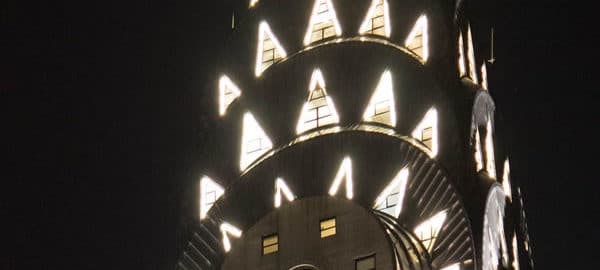
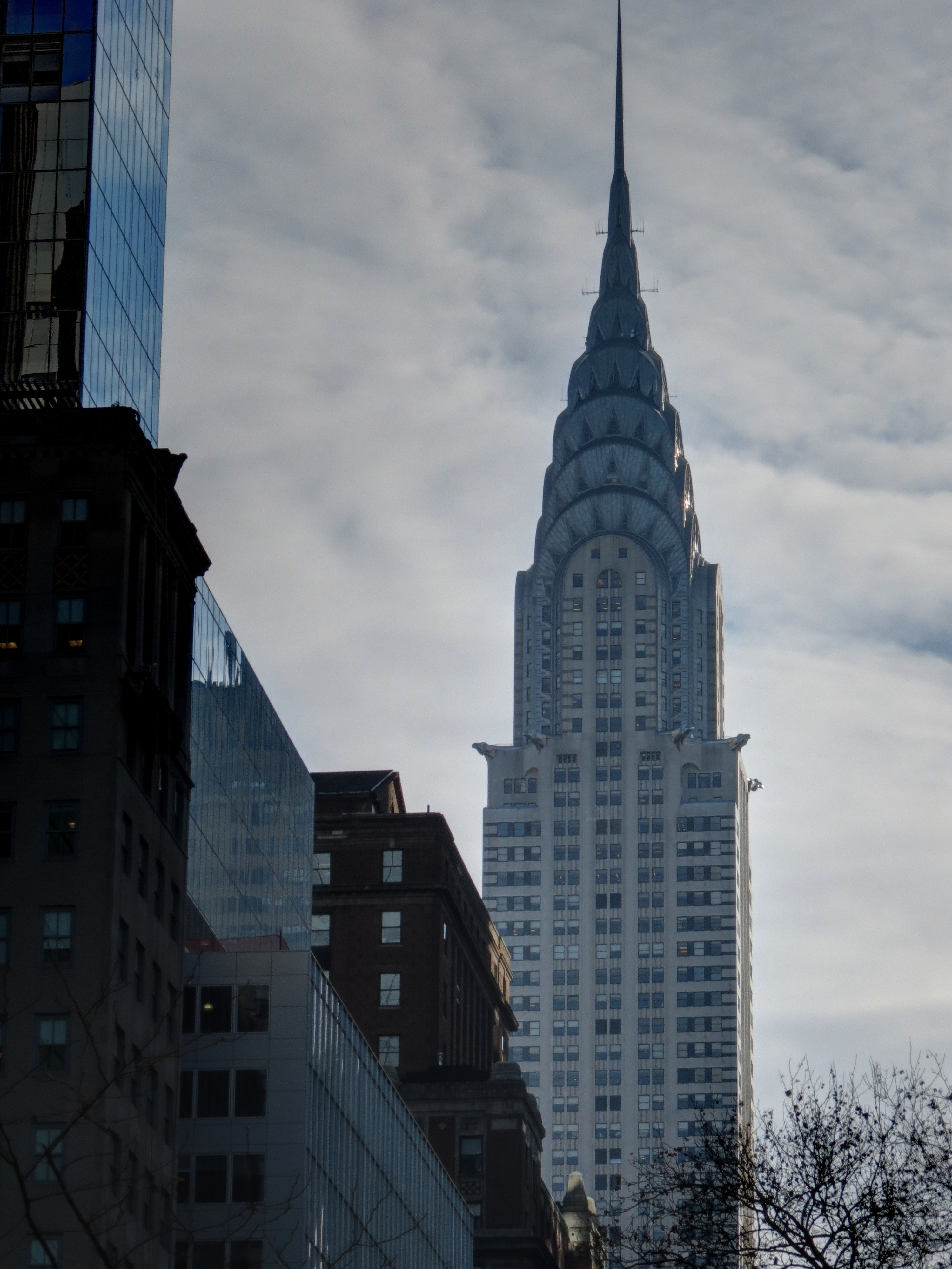
![[Chrysler Building] 04_09117 [8/26/2012 12:30:56 PM] [Chrysler Building] 04_09117 [8/26/2012 12:30:56 PM]](https://www.newyorkitecture.com/wp-content/gallery/chrysler-building/04_09117_resize.jpg)
![[Chrysler Building] J_IMG_9896-2 [8/24/2012 9:01:43 PM] [Chrysler Building] J_IMG_9896-2 [8/24/2012 9:01:43 PM]](https://www.newyorkitecture.com/wp-content/gallery/chrysler-building/J_IMG_9896-2_resize.jpg)
![[Chrysler Building] J_IMG_9858 [8/24/2012 8:20:51 PM] [Chrysler Building] J_IMG_9858 [8/24/2012 8:20:51 PM]](https://www.newyorkitecture.com/wp-content/gallery/chrysler-building/J_IMG_9858_resize.jpg)
![[Chrysler Building] IMG_10043 [8/26/2012 2:46:38 PM] [Chrysler Building] IMG_10043 [8/26/2012 2:46:38 PM]](https://www.newyorkitecture.com/wp-content/gallery/chrysler-building/IMG_10043_resize.jpg)
![[Chrysler Building] IMG_10019 [8/26/2012 2:20:08 PM] [Chrysler Building] IMG_10019 [8/26/2012 2:20:08 PM]](https://www.newyorkitecture.com/wp-content/gallery/chrysler-building/IMG_10019_resize.jpg)
![[Chrysler Building] IMG_10013 [8/26/2012 2:13:46 PM] [Chrysler Building] IMG_10013 [8/26/2012 2:13:46 PM]](https://www.newyorkitecture.com/wp-content/gallery/chrysler-building/IMG_10013_resize.jpg)
![[Chrysler Building] IMG_10011 [8/26/2012 2:11:05 PM] [Chrysler Building] IMG_10011 [8/26/2012 2:11:05 PM]](https://www.newyorkitecture.com/wp-content/gallery/chrysler-building/IMG_10011_resize.jpg)
![[Chrysler Building] IMG_09150 [8/26/2012 1:54:42 PM] [Chrysler Building] IMG_09150 [8/26/2012 1:54:42 PM]](https://www.newyorkitecture.com/wp-content/gallery/chrysler-building/IMG_09150_resize.jpg)
![[Chrysler Building] IMG_09147 [8/26/2012 1:05:45 PM] [Chrysler Building] IMG_09147 [8/26/2012 1:05:45 PM]](https://www.newyorkitecture.com/wp-content/gallery/chrysler-building/IMG_09147_resize.jpg)
![[Chrysler Building] IMG_09143 [8/26/2012 1:03:59 PM] [Chrysler Building] IMG_09143 [8/26/2012 1:03:59 PM]](https://www.newyorkitecture.com/wp-content/gallery/chrysler-building/IMG_09143_resize.jpg)
![[Chrysler Building] IMG_09141 [8/26/2012 1:02:48 PM] [Chrysler Building] IMG_09141 [8/26/2012 1:02:48 PM]](https://www.newyorkitecture.com/wp-content/gallery/chrysler-building/IMG_09141_resize.jpg)
![[Chrysler Building] 01_09077 [8/26/2012 12:14:37 PM] [Chrysler Building] 01_09077 [8/26/2012 12:14:37 PM]](https://www.newyorkitecture.com/wp-content/gallery/chrysler-building/01_09077_resize.jpg)
![[Chrysler Building] IMG_0185 [8/29/2012 10:59:05 AM] [Chrysler Building] IMG_0185 [8/29/2012 10:59:05 AM]](https://www.newyorkitecture.com/wp-content/gallery/chrysler-building/IMG_0185_resize.jpg)
![[Chrysler Building] IMG_0093 [8/27/2012 10:50:06 AM] [Chrysler Building] IMG_0093 [8/27/2012 10:50:06 AM]](https://www.newyorkitecture.com/wp-content/gallery/chrysler-building/IMG_0093_resize.jpg)
![[Chrysler Building] IMG_0091 [8/27/2012 10:49:11 AM] [Chrysler Building] IMG_0091 [8/27/2012 10:49:11 AM]](https://www.newyorkitecture.com/wp-content/gallery/chrysler-building/IMG_0091_resize.jpg)
![[Chrysler Building] IMG_0087 [8/27/2012 10:46:40 AM] [Chrysler Building] IMG_0087 [8/27/2012 10:46:40 AM]](https://www.newyorkitecture.com/wp-content/gallery/chrysler-building/IMG_0087_resize.jpg)
![[Chrysler Building] IMG_0085 [8/27/2012 10:45:46 AM] [Chrysler Building] IMG_0085 [8/27/2012 10:45:46 AM]](https://www.newyorkitecture.com/wp-content/gallery/chrysler-building/IMG_0085_resize.jpg)
![[Chrysler Building] IMG_0083 [8/27/2012 10:44:30 AM] [Chrysler Building] IMG_0083 [8/27/2012 10:44:30 AM]](https://www.newyorkitecture.com/wp-content/gallery/chrysler-building/IMG_0083_resize.jpg)
![[Chrysler Building] IMG_0081 [8/27/2012 10:44:00 AM] [Chrysler Building] IMG_0081 [8/27/2012 10:44:00 AM]](https://www.newyorkitecture.com/wp-content/gallery/chrysler-building/IMG_0081_resize.jpg)
![[Chrysler Building] 05_09140 [8/26/2012 1:01:35 PM] [Chrysler Building] 05_09140 [8/26/2012 1:01:35 PM]](https://www.newyorkitecture.com/wp-content/gallery/chrysler-building/05_09140_resize.jpg)
![[Chrysler Building] 03_09112 [8/26/2012 12:29:03 PM] [Chrysler Building] 03_09112 [8/26/2012 12:29:03 PM]](https://www.newyorkitecture.com/wp-content/gallery/chrysler-building/03_09112_resize.jpg)
![[Chrysler Building] 02_09099 [8/26/2012 12:22:44 PM] [Chrysler Building] 02_09099 [8/26/2012 12:22:44 PM]](https://www.newyorkitecture.com/wp-content/gallery/chrysler-building/02_09099_resize.jpg)
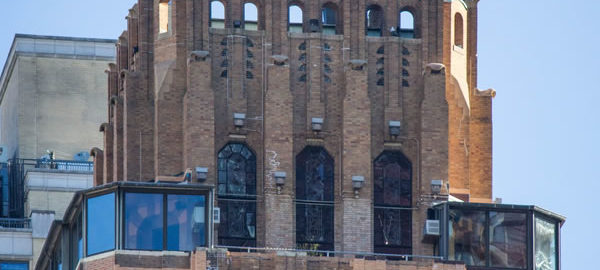
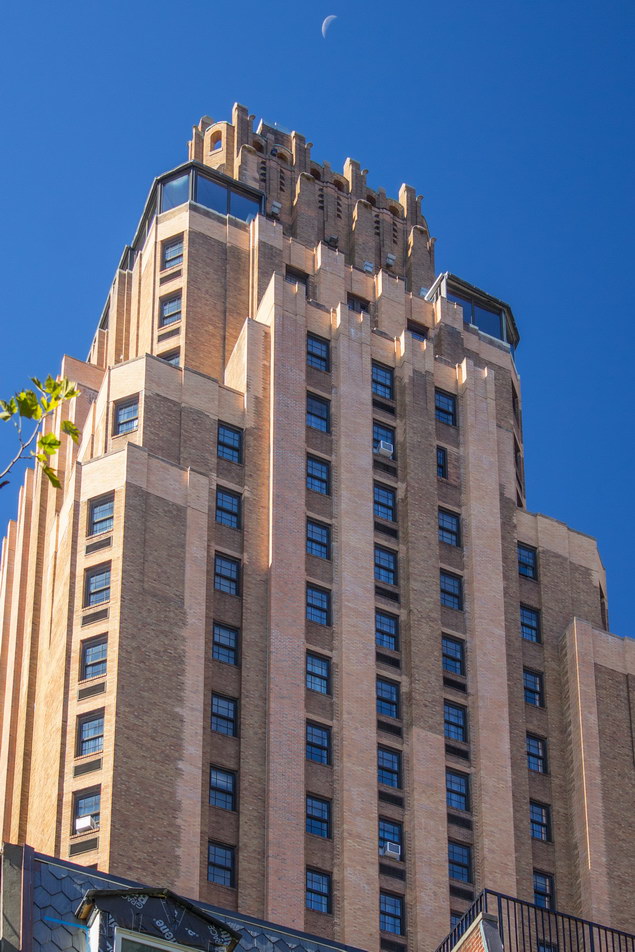
![[Beekman Tower Hotel] B_1421 [9/10/2012 10:13:35 AM] [Beekman Tower Hotel] B_1421 [9/10/2012 10:13:35 AM]](https://www.newyorkitecture.com/wp-content/gallery/beekman-tower-hotel/B_1421_resize.jpg)
![[Beekman Tower Hotel] C_1490 [9/10/2012 10:50:29 AM] [Beekman Tower Hotel] C_1490 [9/10/2012 10:50:29 AM]](https://www.newyorkitecture.com/wp-content/gallery/beekman-tower-hotel/C_1490_resize.jpg)
![[Beekman Tower Hotel] D_1746 [9/11/2012 8:35:51 AM] [Beekman Tower Hotel] D_1746 [9/11/2012 8:35:51 AM]](https://www.newyorkitecture.com/wp-content/gallery/beekman-tower-hotel/D_1746_resize.jpg)
![[Beekman Tower Hotel] E_1428 [9/10/2012 10:20:35 AM] [Beekman Tower Hotel] E_1428 [9/10/2012 10:20:35 AM]](https://www.newyorkitecture.com/wp-content/gallery/beekman-tower-hotel/E_1428_resize.jpg)
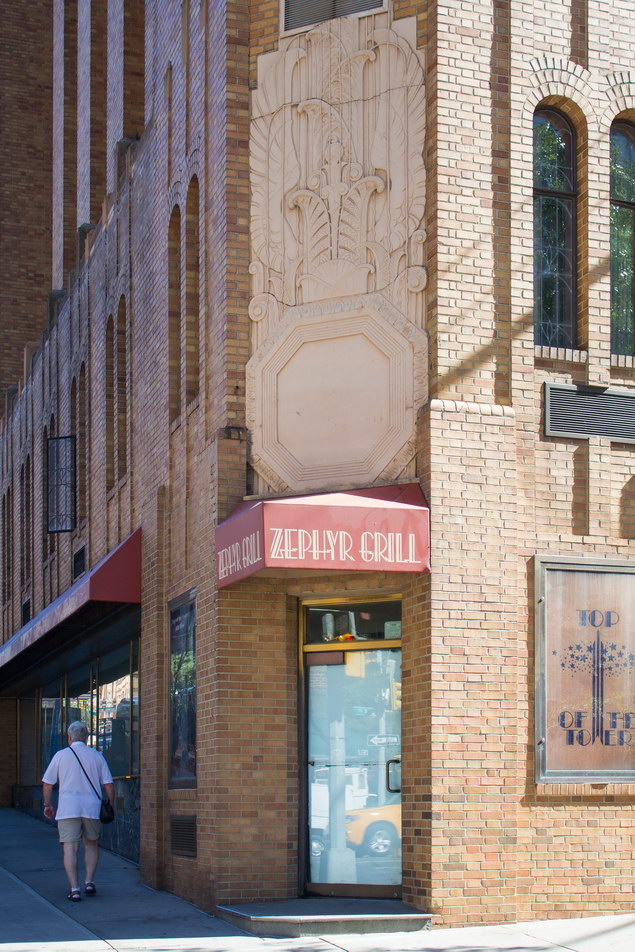
![[Beekman Tower Hotel] G_1443 [9/10/2012 10:27:56 AM] [Beekman Tower Hotel] G_1443 [9/10/2012 10:27:56 AM]](https://www.newyorkitecture.com/wp-content/gallery/beekman-tower-hotel/G_1443_resize.jpg)
![[Beekman Tower Hotel] H_1449 [9/10/2012 10:30:47 AM] [Beekman Tower Hotel] H_1449 [9/10/2012 10:30:47 AM]](https://www.newyorkitecture.com/wp-content/gallery/beekman-tower-hotel/H_1449_resize.jpg)